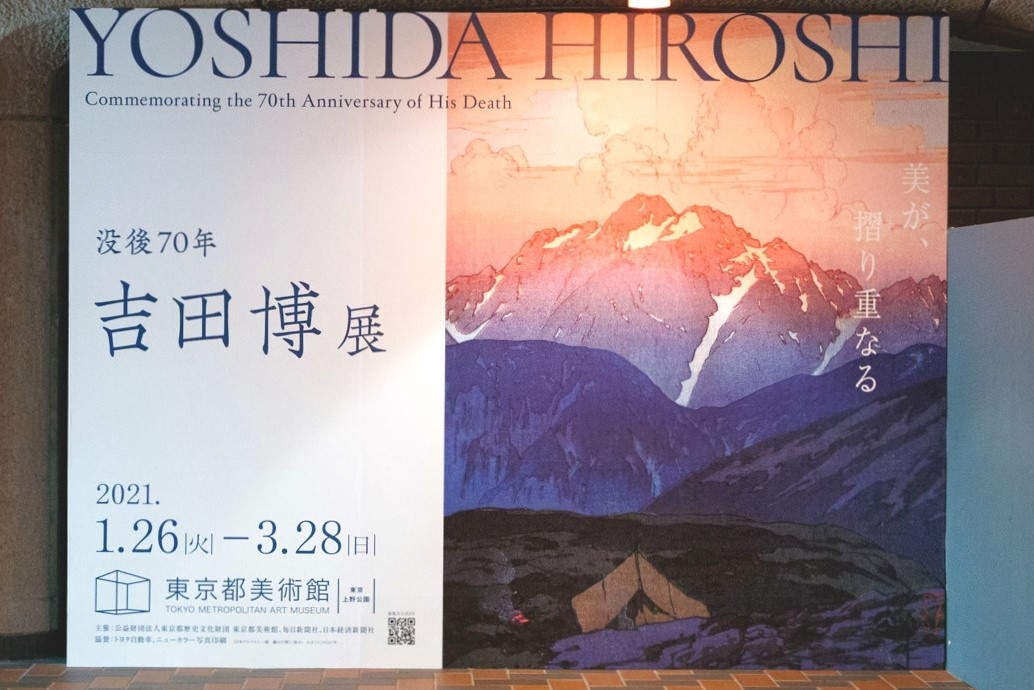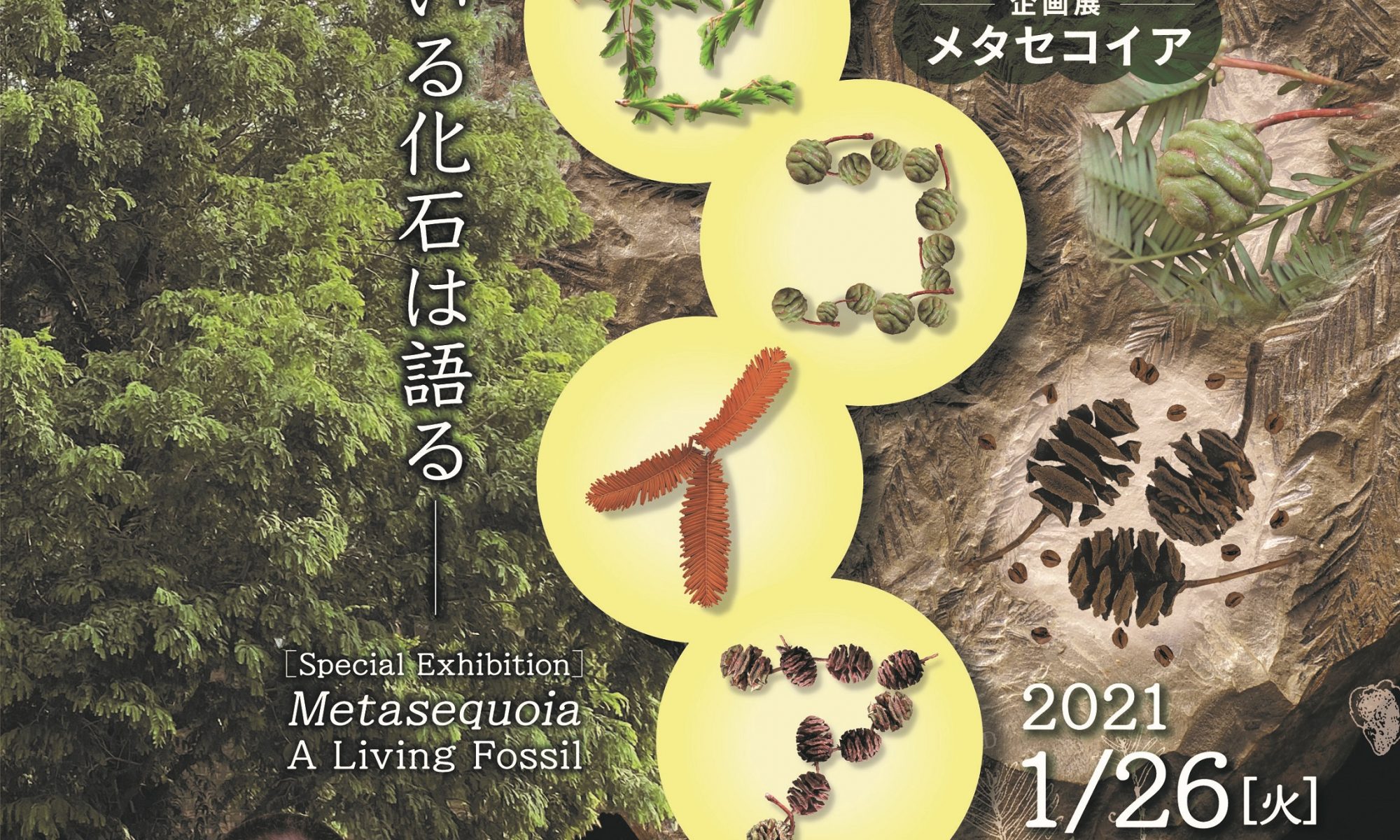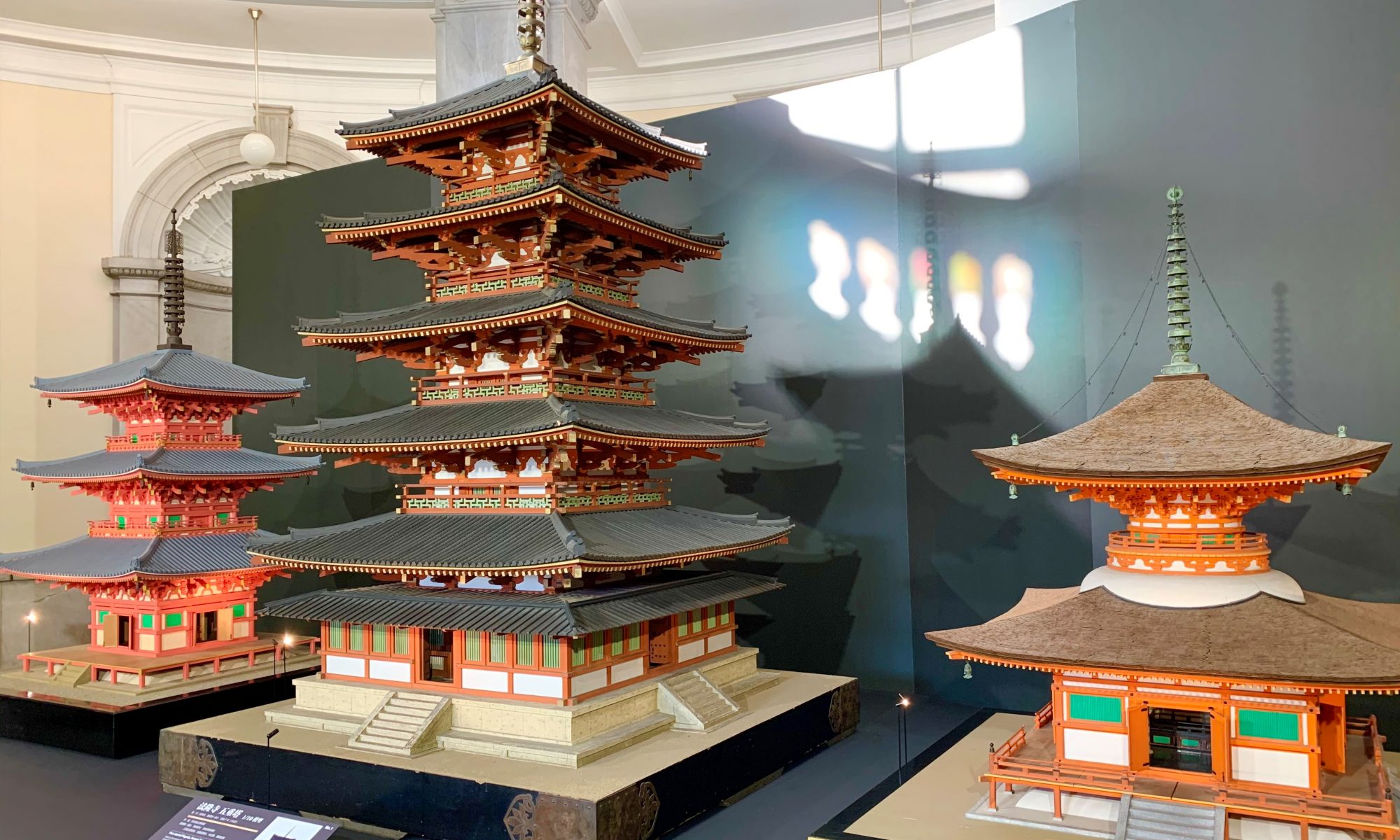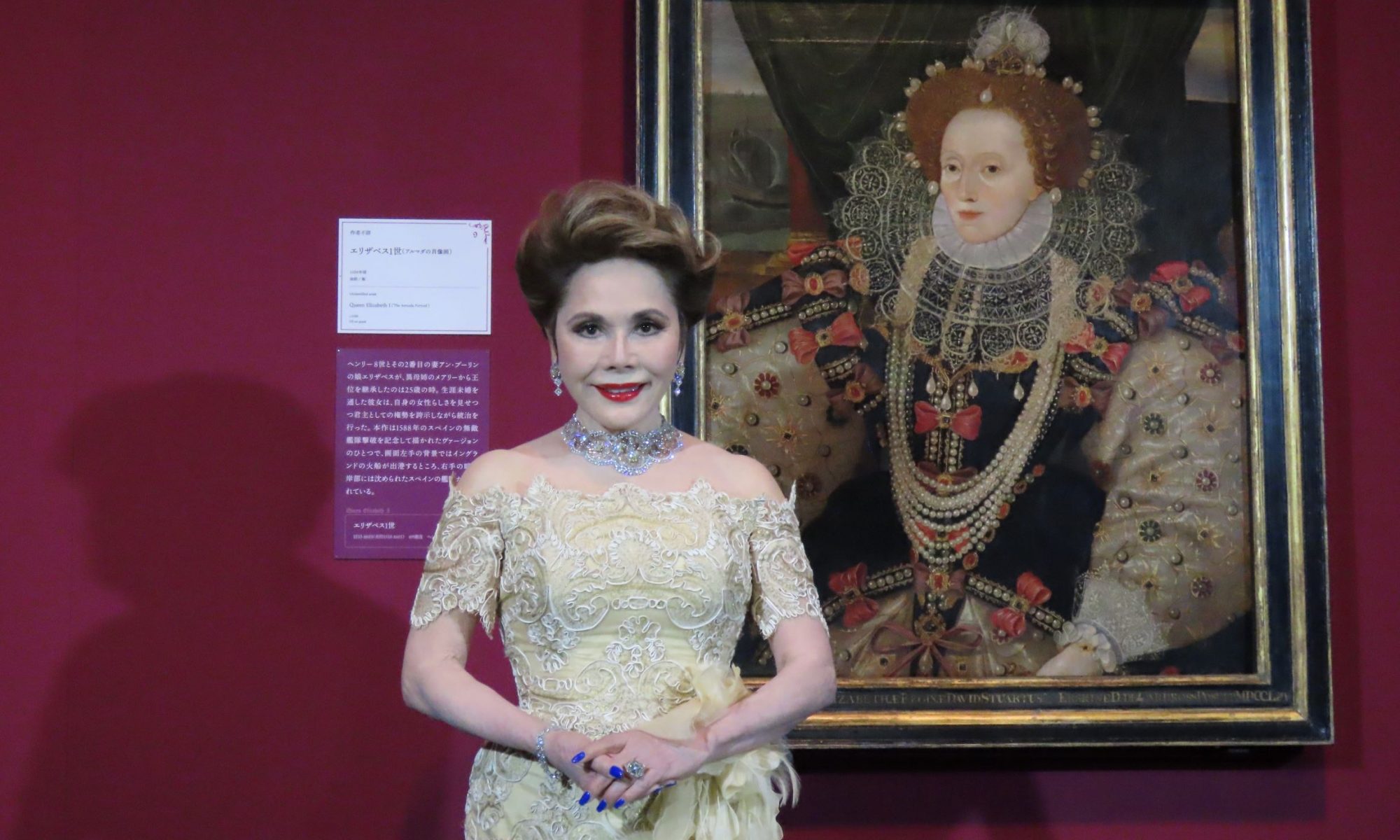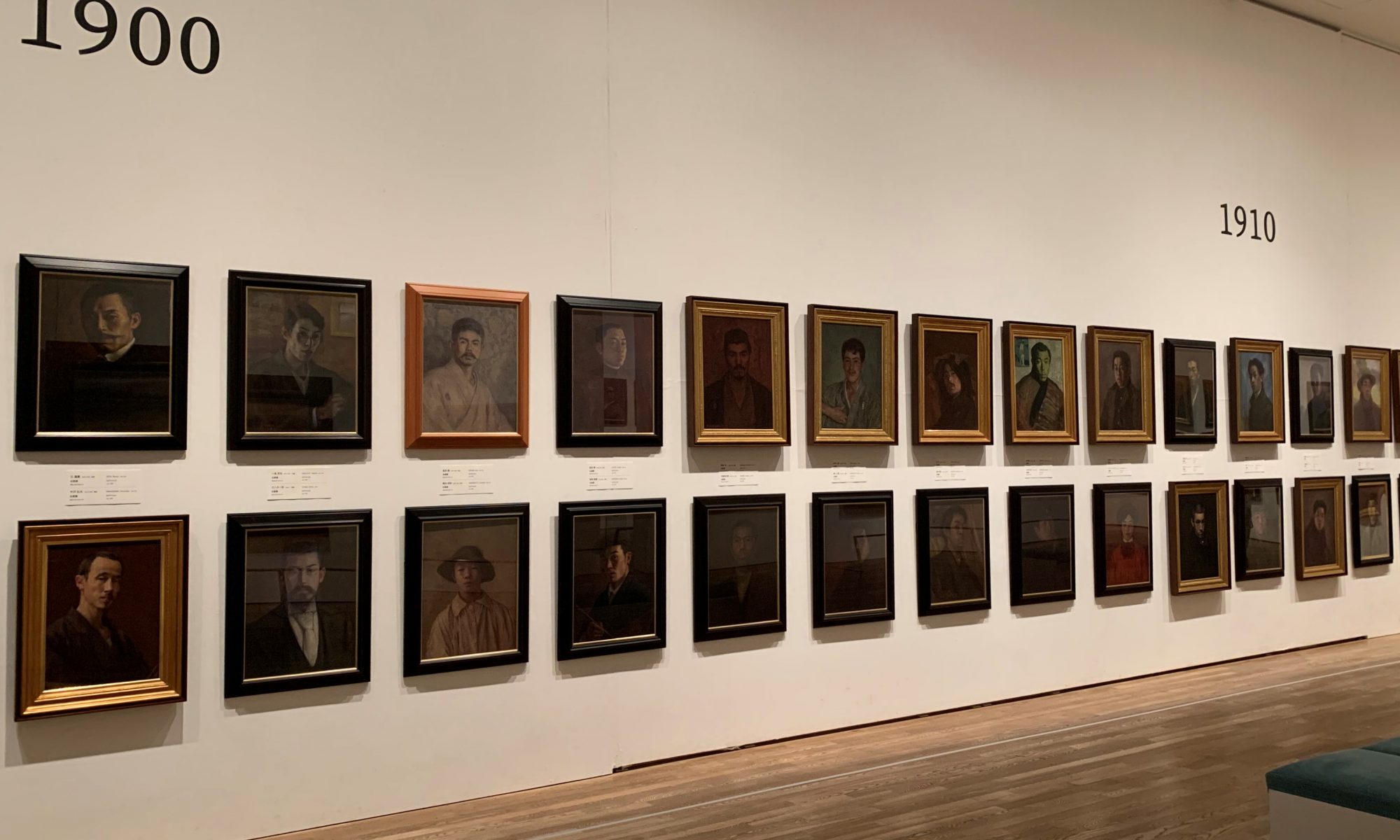Tokyo Metropolitan Art Museum

From January 26, 2021, a special exhibition “70 years after his death, Hiroshi Yoshida Exhibition “ is being held at the Tokyo Metropolitan Art Museum in Ueno, Tokyo . (The session is until March 28th)
Hiroshi Yoshida (1876-1950), a painter who was active as a leading figure in landscape painting from the Meiji era to the Showa era, with high descriptive power acquired through studying to the extent that he was described as a “demon of painting”.
While demonstrating his talent in watercolor and oil painting, in the latter half of the painting industry, he pioneered a completely new world of woodblock prints by combining Western realistic styles with traditional Japanese print techniques. It was loved by people all over the world, including Princess Diana of England and Freud, a psychiatrist.
In this article, we will introduce the exhibition contents and highlights of the “70 Years After Death Hiroshi Yoshida Exhibition”, which is a collection of about 200 works, focusing on woodblock prints from the early days of Hiroshi Yoshida to his later years.
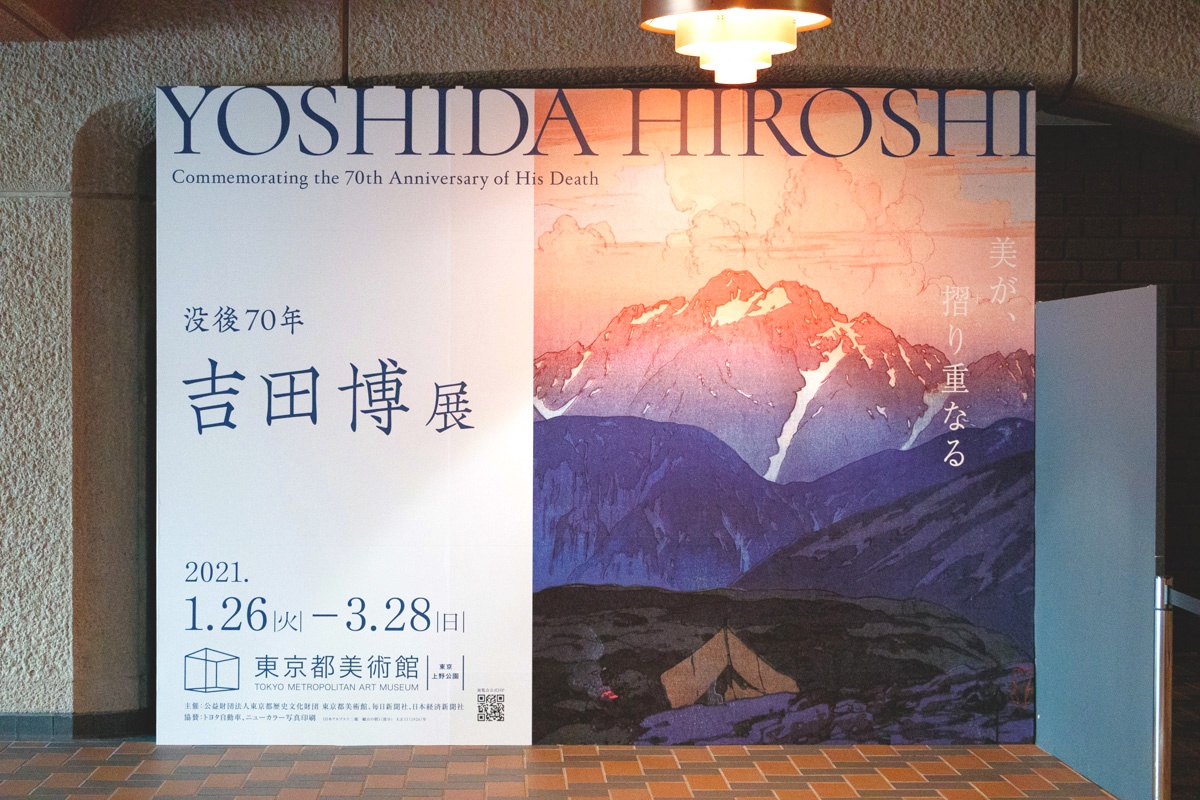



* The exhibition period is divided into the first half (January 26th to February 28th) and the second half (March 2nd to March 28th) , and some of the exhibited works will be replaced . This article focuses on works that can be viewed during the first half of the year.
* Works without a period notation in the image are on display for the entire period.
Hiroshi Yoshida’s woodblock prints that fascinated the world

Hiroshi Yoshida, who had the belief that “the true nature can be drawn only by immersing himself in nature and becoming a sacrum (= the state of the hermit)”, jumped into nature from a young age with a thorough field principle. , I was absorbed in landscape photography and rigorously refined my technique.
In 1899, 23-year-old Hiroshi chose America as a place of challenge instead of France, where many Japanese painters studied abroad at that time, and set out with as much of his own paintings as possible. Hiroshi’s work, which contains Japanese lyric nuances, fascinates the hearts of Americans. The solo exhibitions held locally were very successful one after another.
Hiroshi, who made a name for himself in the field of watercolors and oil paintings, began to work on woodblock prints in earnest after he was in his mid-40s. It is said that in 1923, when he visited the United States for the third time, he witnessed the local people seeking all the woodblock prints of mixed boulders rather than oil paintings.
After returning to Japan, Hiroshi immediately started making woodblock prints. At that time, the idea is to combine traditional ukiyo-e printmaking techniques with Western realistic depictions. The color coding and composition have also been devised in various ways that are not bound by tradition.
Then, we challenged the oversized prints, sometimes rubbed them nearly 100 times, and used the same woodblock to change the color to express the state of light and atmosphere at different times. It expanded the world of original woodblock prints and was praised both at home and abroad.

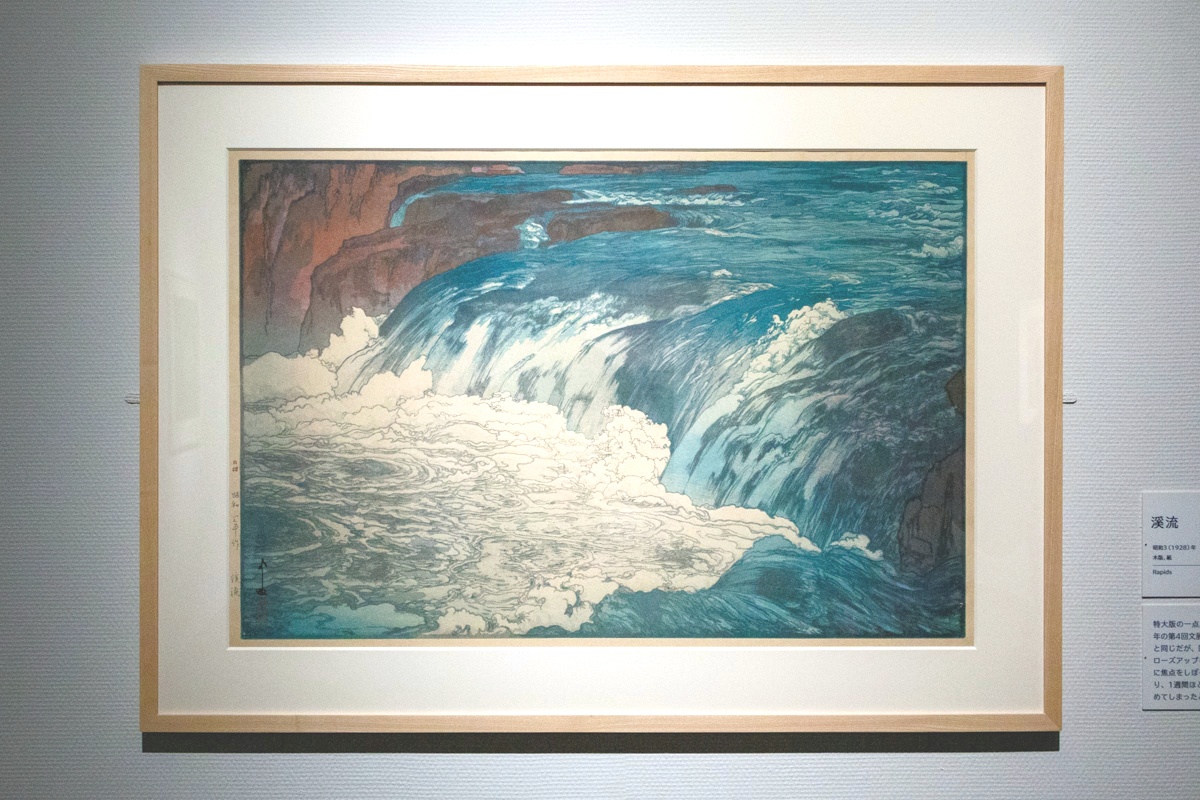
Kobayashi, a curator of the Tokyo Metropolitan Art Museum, said, “I think what Hiroshi pursued with woodblock prints was to realize delicate color expressions of watercolors and oil paintings with prints.” Mr.
After thoroughly studying the techniques of carving and rubbing, Hiroshi hired a tattooist and a tattooist to supervise all the work. Sometimes he was in charge of carving and rubbing himself. He compared himself to a conductor and an architect, and even in a complicated process where it was said that only the person could know how far it would be completed, he did not make any compromises in search of perfection.

Mr. Kobayashi continues like this. “Please pay attention to the light and atmosphere that can only be expressed by Hiroshi Yoshida, a Western-style painter with solid drawing power, and the delicate hue nuances unique to him.”

Woodblock prints depicting landscapes from all over the world are in one place. Exhibition composition of “70 years after death Hiroshi Yoshida exhibition”

This exhibition is organized to introduce Hiroshi Yoshida’s works by theme according to a rough age, from Prologue to Chapter 1 to Chapter 11 to Epilogue.
Each chapter is composed of various themes such as landscapes of the United States and Europe, mountains of Mt. Fuji and Japan, landscapes of various parts of Japan, landscapes of India and Southeast Asia, and landscapes of Korea and the former Manchuria. Since there are many works, it is a good idea to secure enough viewing time.
The main exhibited works are woodblock prints, but in the prologue, you can also appreciate typical oil paintings and watercolors in order to look back on the history of the exhibition until you worked on woodblock prints.


A sketch book is also exhibited as a material. It seems that the woodblock prints were not always produced according to the composition of the sketch, but you can get a glimpse of what captured the eyes and spirit of Hiroshi.
Speaking of materials, pay attention to the fact that woodblock prints are exhibited. To understand the difficulty of carving and rubbing more frankly by comparing the main version (wooden block to show the outline) and the color version of “Fuji Pickup Asahi” on display with the finished work. Is done.


There is also a video exhibition, one is a video that introduces the woodblock print production process, and the other is a video that briefly introduces the life of Hiroshi. In particular, the latter has a storytelling narration, so I enjoyed it in a very easy-to-understand manner.

Introducing featured works and highlights
As a Western-style painter living in Japan, Hiroshi Yoshida continued to search for what is an original “painting” that can compete with the world. The answer that came to the end of that pondering was woodblock prints. There are countless highlights, but here I will pick up and introduce the points that I found particularly wonderful.
Highlights ① Mountaineering landscape drawn from the perspective of a mountaineer

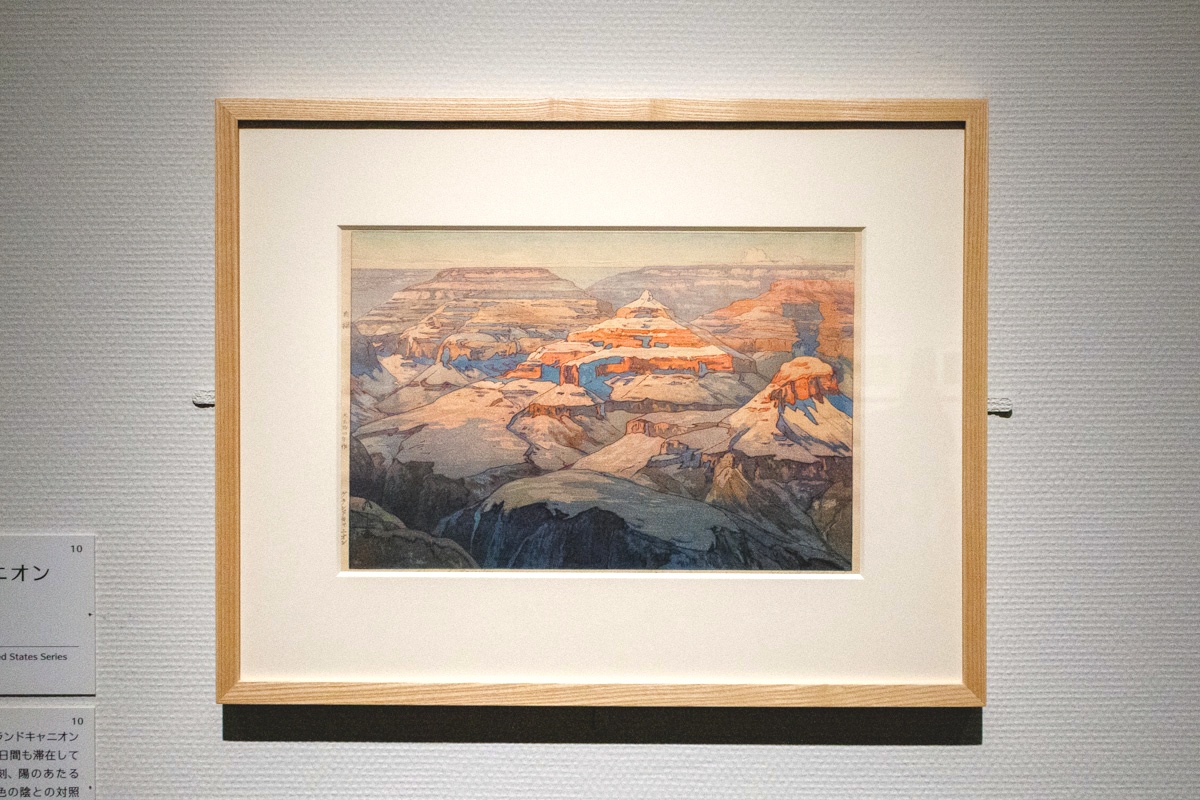
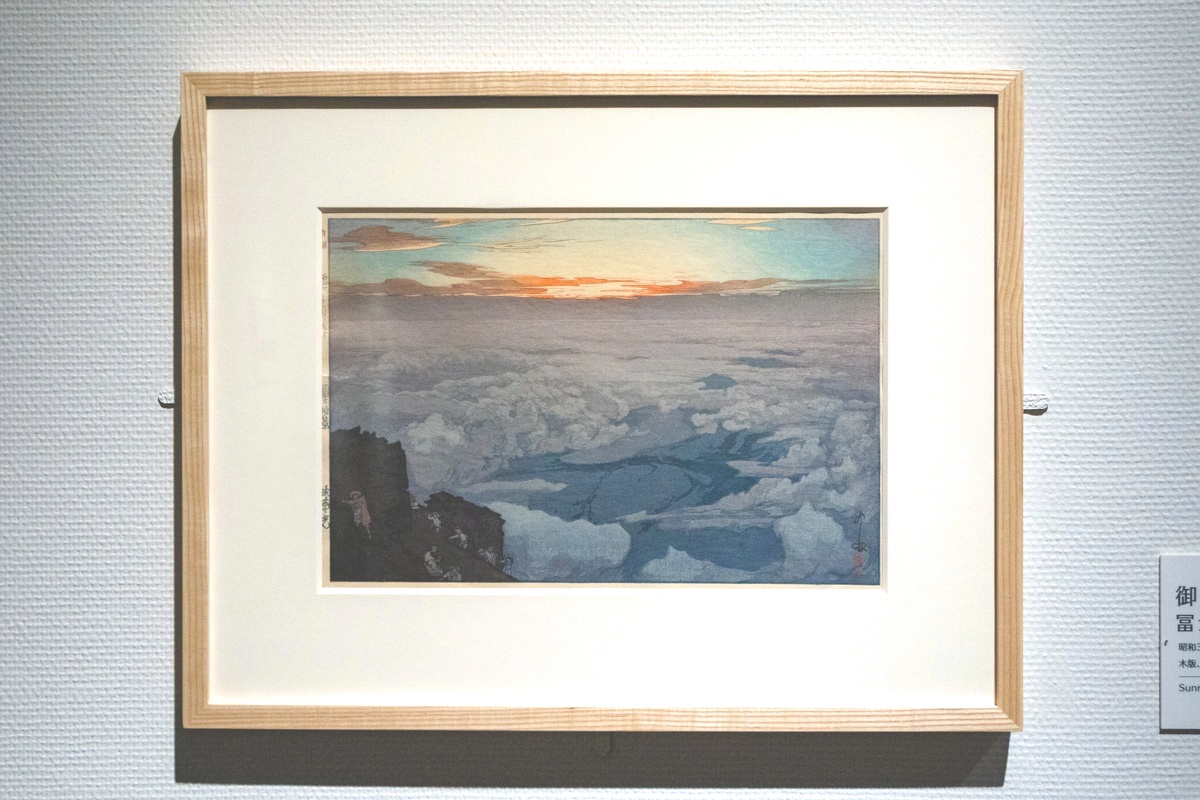
Expo, who loved nature, was so interested in the mountains that he could spend his days in the mountains every summer. He is called a “mountain painter” or “mountain painter” because he has left many of the scenery he saw through full-scale mountain climbing in his works.
He climbed to the top of the mountain, confronted the mountains where the weather was changing, and camp for days until he was satisfied with the moment he wanted. The magnificent mountain scenery captured in this way is one of the best highlights of Hiroshi’s work.
Above all, the composition overlooking the sea of clouds from the summit, such as “Fuji Picking Up Sunrise”, can be said to be a remarkable achievement for mountain painters. The flowing clouds that created the exquisite gap and the sun that began to rise from the back were captured at the perfect timing, and the scenic appearance is beyond description. There is a mountain that is surrounded by silence that no one can invade.
Highlight (2) A work of “Separate” that skillfully expresses the change of time with colors
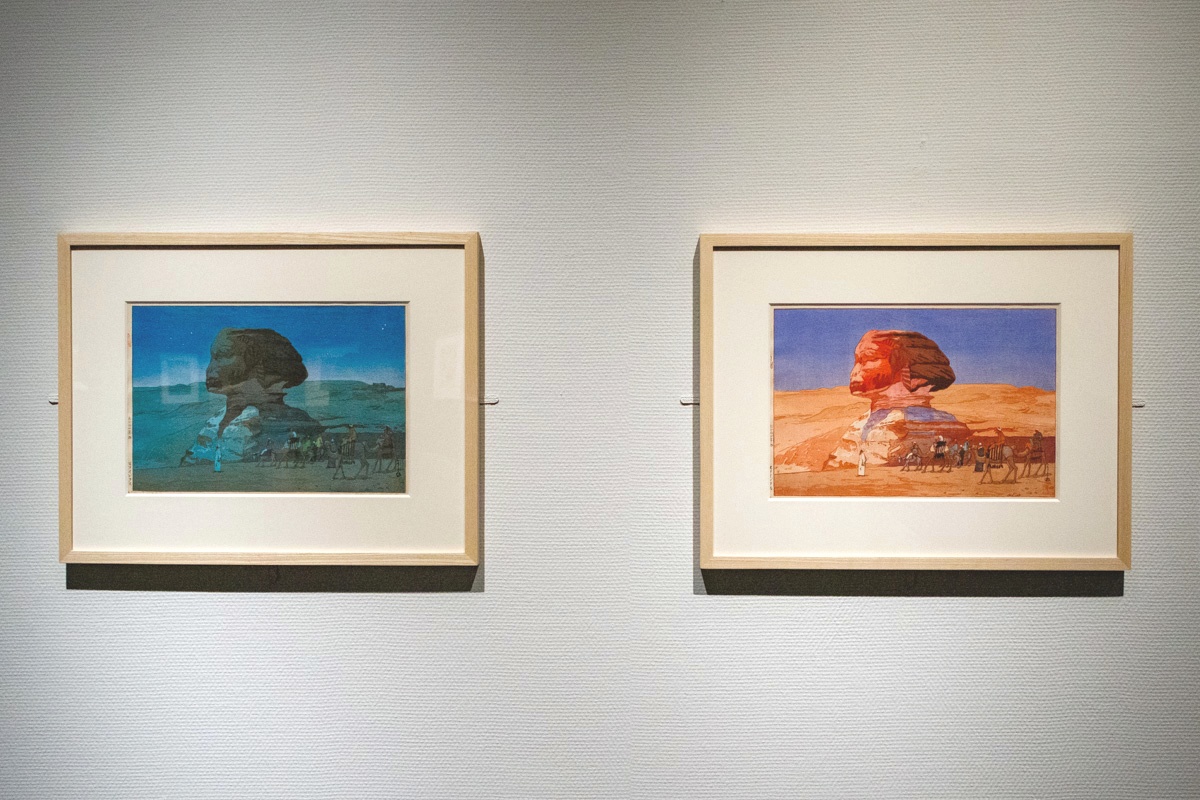



Hiroshi used the technique of “separate sliding” to create works of different colors using the same woodblock, and expressed changes in the field of vision that change over time, such as “morning” and “night.”
For example, in the “Seto Inland Sea Sailing Ship” series, which is one of Hiroshi’s masterpieces, the same scene at different moments can be seen in “morning,” “am,” “afternoon,” “fog,” “evening,” and “night.” It is drawn, and the differences in light and atmosphere are depicted in color and expressively.
Don’t think, “You just changed the color?” Only the sails of the “morning” sailing ship have a slight pattern added, perhaps playful. The silhouette of the ship drawn behind “evening” was not in “afternoon”. At “night”, the inside of the sailing ship and the background are lit, and so on. The more you compare, the more you will find small differences in detail, and you will never get tired of it.
“Morning” is especially beautiful. The morning sun is backlit, the outline of the sailing ship turns red, and the boundary between the sea and the sky is blurred by gradation, creating a fantastic atmosphere. If you look closely at the brilliance of the sun, which gives a soft impression, you can see that the colors are finely outlined in concentric circles.
In this way, please pay attention to the fact that even if it is a “separate slide”, it takes a lot of effort one by one.
Highlight ③ Depiction of various lights


As you watch the exhibited works, you can see that Hiroshi has an extraordinary passion for portraying light, but the atmosphere of light that is gently dropped into the darkness, such as the brilliant moon and the lights of lanterns. Has an indescribable charm.
Especially strong is the golden light that comes from the setting sun on the verge of setting.
The golden light that oozes from the Islamic architecture of Arabesque in “India and Southeast Asia Fuwatepur Shikuri” conveys the atmosphere of a foreign country.
It seems that pale similar colors were rubbed over and over again to express this diffuse reflection, but I have no idea how to stack the plates anymore, and it would be hard to believe that Hiroshi could use magic. Perhaps because the contours are suppressed, the beauty that makes you lose words gives the viewer the impression that you are looking into a world that is not in the world, as if you were floating somewhere in the air.
Highlight ④ Overshadowing of the water surface

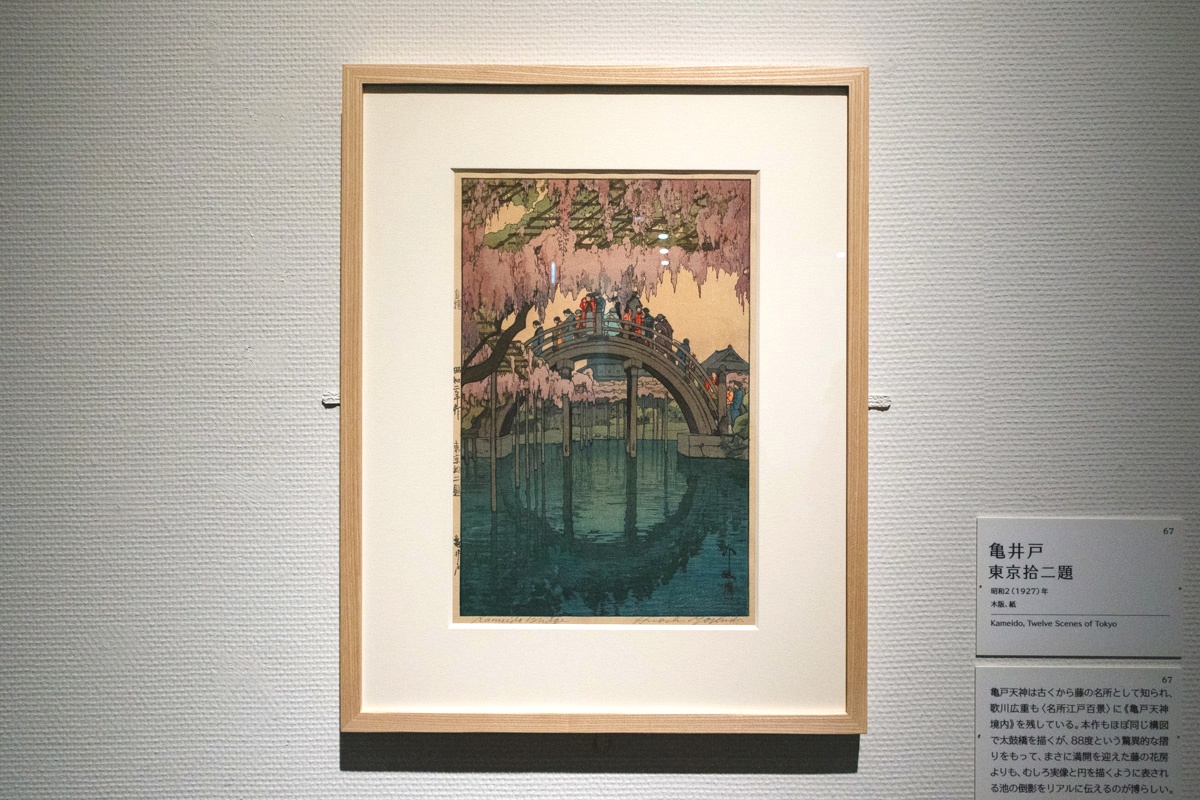
Including the sea, rivers, ponds, lakes, puddles, and the woodblock prints of the Expo have a wide variety of waterfronts. Landscapes and buildings are reflected on the surface of the water, and some of the works are such that the composition is completed only when there is the scenery reflected on the surface of the water.
The author groaned at the magnificent upside-down Mt. Fuji of “Lake Yamanaka” and the symmetry between the substance of the drum bridge and the shadow of the pond seen in “Tokyo Picking Two Kameido”.
At first glance, the latter tends to look at the wisteria flower clusters that are in full bloom, but if you shift your gaze downwards, you may feel that you were more particular than wisteria. Will take a look at. The composition that Taikobashi weaves with the shadow is strangely beautiful. Regardless of the truth, it seemed to me that “Hiroshi wanted to copy this into a picture.” It is a work that expands the imagination of what the aesthetic sense of Hiroshi should be.
After being overwhelmed by the beauty of Hiroshi’s woodblock prints, don’t forget to check out the exhibition goods.
In addition to standard items such as framed posters and postcards, this exhibition’s original works that make use of the charm of Hiroshi Yoshida’s works, such as tote bags, A5 notebooks, ticket files, mask cases, furoshiki, coloring book sets, and chocolate Karinto as a variant. Goods were also prepared.
Some of the catalogs and goods can be purchased at the online shop, and if you can’t go to the exhibition, we recommend you to immerse yourself in the world of the exhibition with the official catalog (2,200 yen including tax).
<Online shop https://www.mainichi.store/categories/3121995 >


From February 9th, Hiroshi Yoshida’s prints exhibited at this exhibition, Hiroshi Yoshida’s oil painting “Seika” in the Tokyo National Museum, and Kuroda Seiki, an artist of the same age as Hiroshi Yoshida. A free audio commentary program will be delivered to introduce the works of the Kuroda Memorial Museum, which is permanently exhibiting the works. You can listen to it on your smartphone, tablet, or PC, and enjoy a journey that follows in the footsteps of their art, whether at the venue or at home.
<Click here for details https://www.tobikan.jp/information/20210126_1.html >
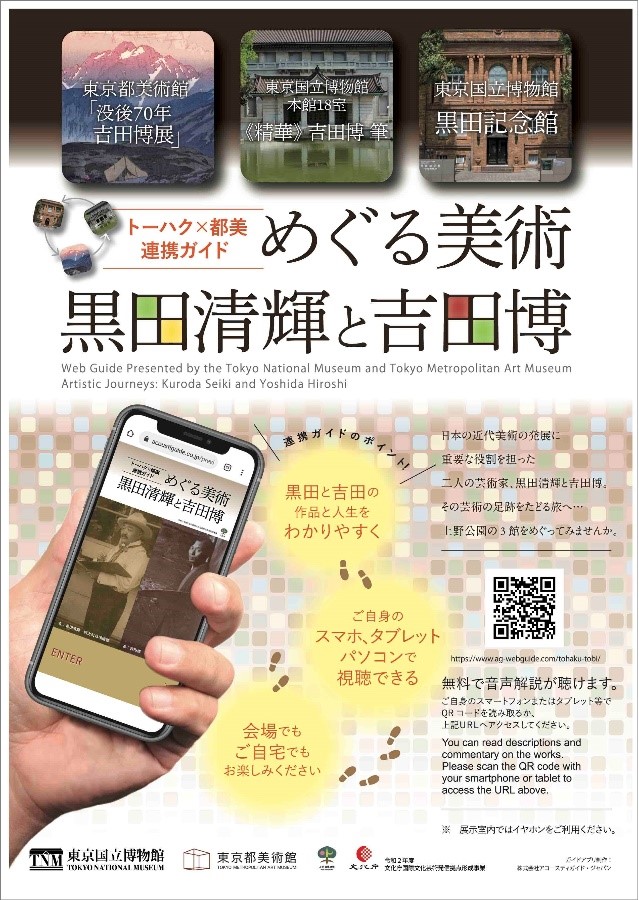
The Tokyo Metropolitan Art Museum “70 Years After Death Hiroshi Yoshida Exhibition” will be held until March 28, 2021.
Don’t miss Hiroshi Yoshida’s large-scale exhibition, which is becoming more and more popular year by year.
“70 years after his death Hiroshi Yoshida Exhibition”
| Session | January 26th (Tuesday) -March 28th (Sunday), 2021 * Some exhibitions will be changed during the exhibition period. |
| Venue | Tokyo Metropolitan Art Museum Planning Exhibition Room |
| Opening hours | 9:30 am to 5:30 pm (admission until 5 pm) |
| Closed days | every Monday |
| Admission fee | General 1,600 yen, university / vocational school students 1,300 yen, high school students 800 yen, 65 years old and over 1,000 yen * Free for junior high school students and younger (bring proof) * Persons with a physical disability certificate, love certificate, nursing certificate, mental disability certificate, health certificate for the atomic bomb survivor and their attendants (up to 1 person) are free of charge (bring a proof) |
| Organizer | Tokyo Metropolitan Art Museum, Mainichi Newspaper, Nihon Keizai Shimbun |
| Co-sponsored | Toyota Motor, new color photo printing |
| Official page | https://yoshida-exhn.jp |
National Science Museum

The National Museum of Nature and Science (Director: Yoshihiro Hayashi) will hold a special exhibition “Metasequoia-Living Fossils Talk” from January 26, 2021 (Tuesday) to April 4, 2021 (Sunday). We will hold it.
[Detailed URL: https://www.kahaku.go.jp/event/2021/01metasequoia/ ]
- Outline of the special exhibition “Metasequoia-Living fossils talk”
2021 marks the 80th anniversary of the name of the Cupressaceae coniferous metasequoia, called “living fossil,” by Dr. Shigeru Miki (1901-1974).
In this exhibition, we will introduce the efforts of researchers in the discovery and protection of metasequoia, and explain the relationship between plants and changes in the global environment. In addition, through the introduction of these conservation activities, we will also face issues such as the environmental problems facing us today.


[Venue] National Museum of Nature and Science Japan Pavilion 1st Floor Special Exhibition Room (7-20 Ueno Park, Taito-ku, Tokyo)
[Date] January 26th (Tuesday) -April 4th (Sunday), 2021 (Reiwa 3)
[Opening hours] 9:00 am to 5:00 pm
[Closed] Every Monday (However, the museum is open on Monday, March 29)
* The session is subject to change.
[Admission fee] You can see it only with the admission fee for the permanent exhibition.
(General / university students: 630 yen including tax, free for high school students and younger and 65 years old and over)
[How to enter] We are implementing measures to prevent the spread of new coronavirus infection.
* Advance reservations are required on the museum’s website to enter the museum.
* Before entering the museum, we will check the temperature and physical condition, and if you have a fever, we will refuse to enter the museum.
* For details on how to enter the museum, please see the reservation site on our website.
https://www.kahaku.go.jp/news/2020/reservation/index.html
[Host] National Science Museum
[Cooperation] Axima Ensis (Akishima City Education and Welfare Center), Japan Greenery Center, Osaka City Museum of Natural History, Osaka City University Faculty of Science Botanical Garden, Kanagawa Prefectural Museum of Life and Earth, Miyauchi Office, Shiga Prefectural Lake Biwa Museum, University of Tsukuba Life and Environment, Botanical Garden, Graduate School of Science, University of Tokyo, Fukui Prefectural Dinosaur Museum, Fukushima Prefectural Museum
[Detailed URL] https://www.kahaku.go.jp/event/2021/01metasequoia/
- Exhibit contents
■ What kind of plant is Metasequoia?
Metasequoia is a deciduous tree that can be found in familiar places such as schoolyards and tree-lined roads. We will introduce its characteristics and why it is called a “living fossil”.

■ Discovery of Metasequoia that surprised the world <br /> The fossil Metasequoia named by Dr. Miki and the extant species discovered after that. Introducing the story of two “discoveries”.

■ What was the time when Metasequoia lived? -From fossil producing areas in Japan-
Based on the results of Metasequoia fossil forest research discovered in Tokyo and Kinki, we will introduce the environment and the flora and fauna that lived there millions of years ago.
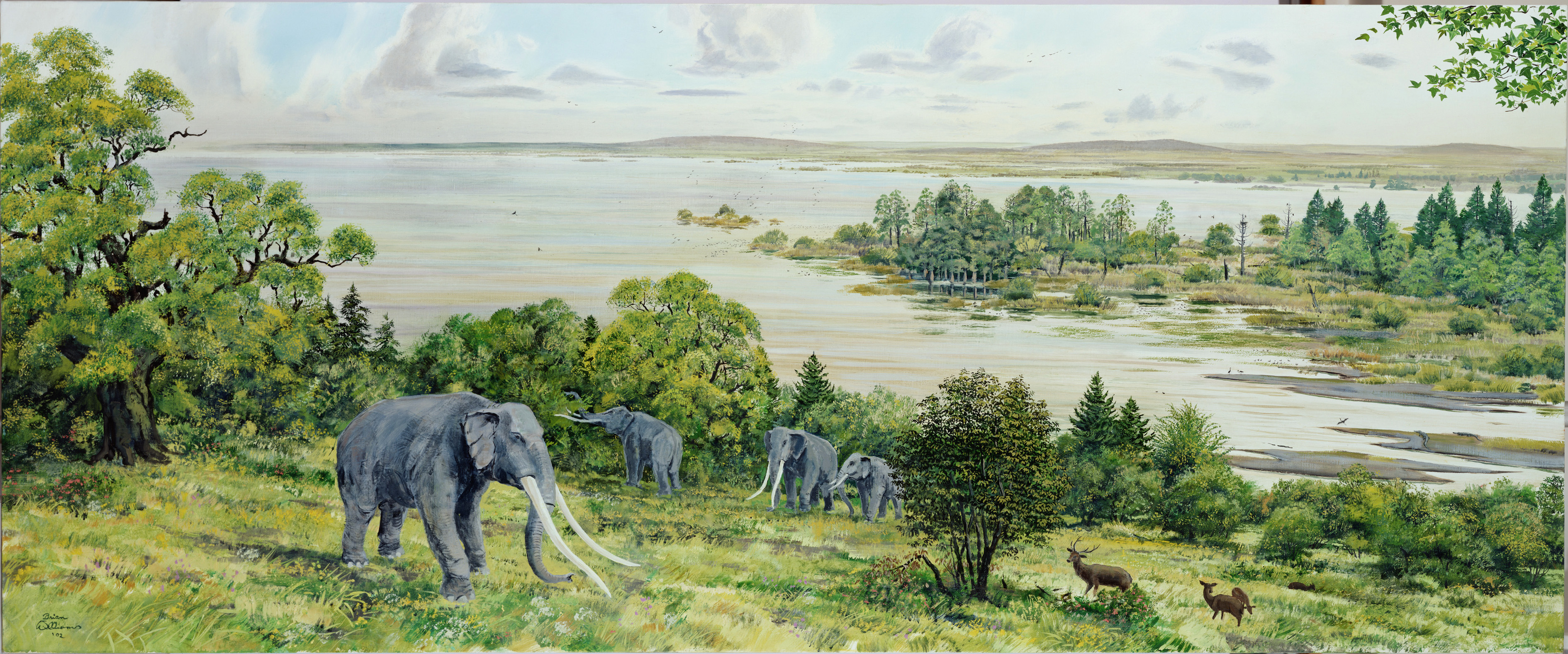
■ Why did Metasequoia become extinct from Japan?
We will approach the mystery of why Metasequoia, which had spread to the Arctic Circle, remained only in some parts of Asia and disappeared from Japan.

■ Present and future of Metasequoia <br /> After discovering the extant species, Metasequoia has spread to the world again with the efforts of researchers. Introducing your own fabric and conservation activities in Japan.
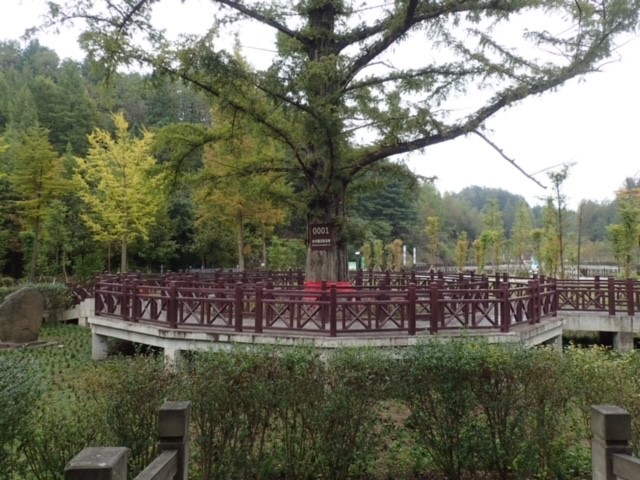
■ What do you learn from Metasequoia?
The extinct Metasequoia is now facing environmental problems again. What should we learn through “living fossils”?

- National Science Museum
* Currently, advance reservation is required for admission. Please be sure to visit the official website before visiting.
[Opening hours] 9:00 to 17:00
[Closed] Every Monday (Tuesday if Monday is a national holiday)
[Admission fee] General / university students 630 yen including tax, high school students (including college students) and younger and 65 years old and over Free [Location] 7-20 Ueno Park, Taito-ku, Tokyo 110-8718
[Inquiries] 050-5541-8600 (Hello dial)
[Official homepage] https://www.kahaku.go.jp/
Article provided by: Kokoshiru Ueno
See other exhibition information
[Tokyo National Museum] “Japanese Tatemono Exhibition” Venue Report-A large collection of huge models of traditional architecture! (Held until 2021/2/21)
Tokyo National Museum

The exhibition "Japanese Tate-Traditional Techniques and Wisdom Utilizing Natural Materials", which introduces the modeling characteristics and craftsmanship of traditional Japanese architecture through materials such as models and designs, is held at the Tokyo National Museum and National Science. It is being held jointly by the museum and the National Archives of Modern Architecture.
This exhibition has different exhibition themes and sessions for each venue.
This time, I saw an exhibition at the Tokyo National Museum on the theme of "Ancient to modern times, the origin of Japanese architecture" that started on December 24th, so I will report on the venue and the exhibited works.
* Tokyo National Museum "From ancient times to modern times, the origin of Japanese architecture"
Date: December 24, 2020-February 21, 2021
* National Science Museum "Modern Japan, Diversification of Styles and Technologies"
Session: December 8, 2020-January 11, 2021
* National Archives of Modern Architecture "Craftsman and Modernization-Succession and Development of Carpentry Technology-"
Date: December 10, 2020-February 21, 2021

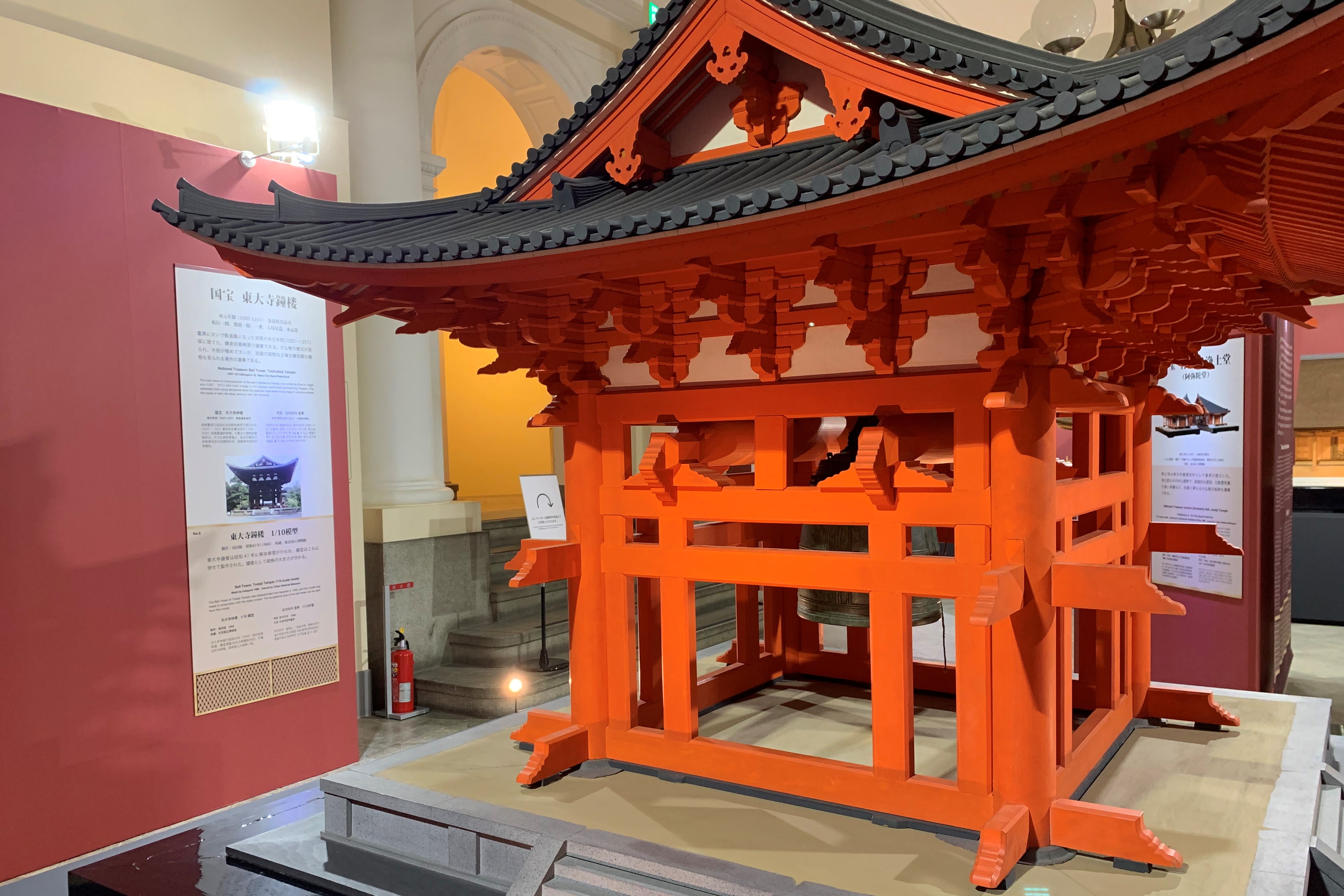
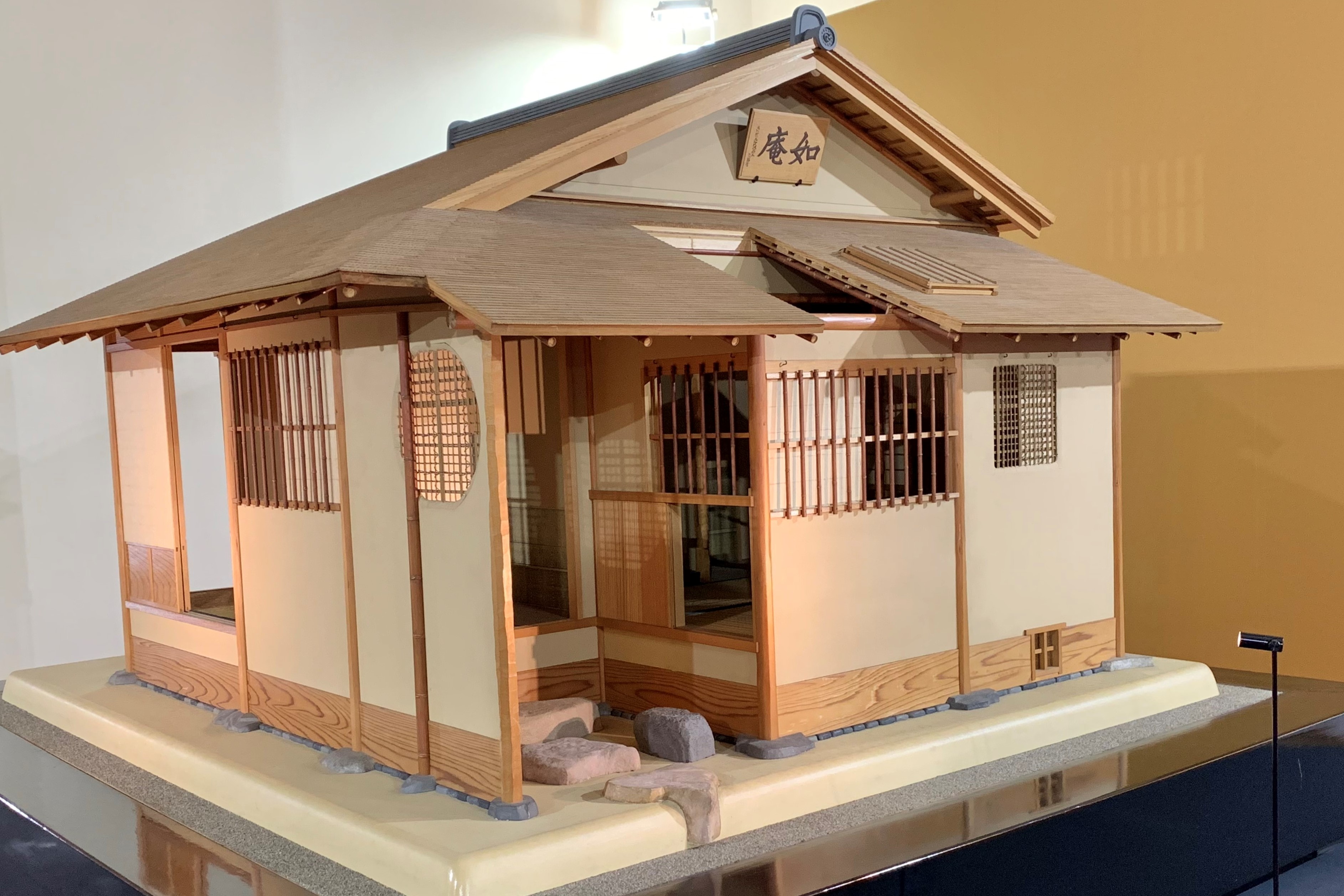
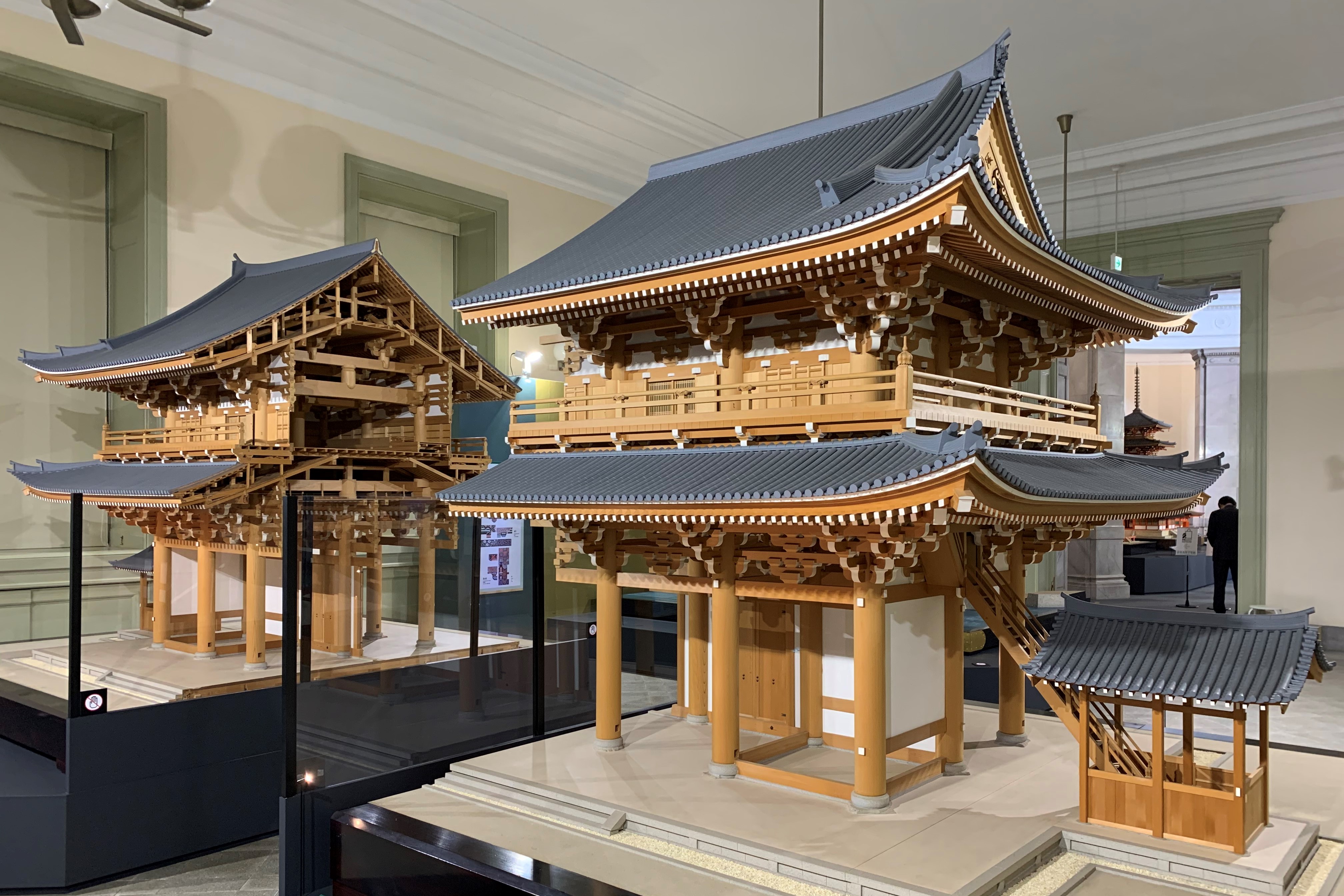
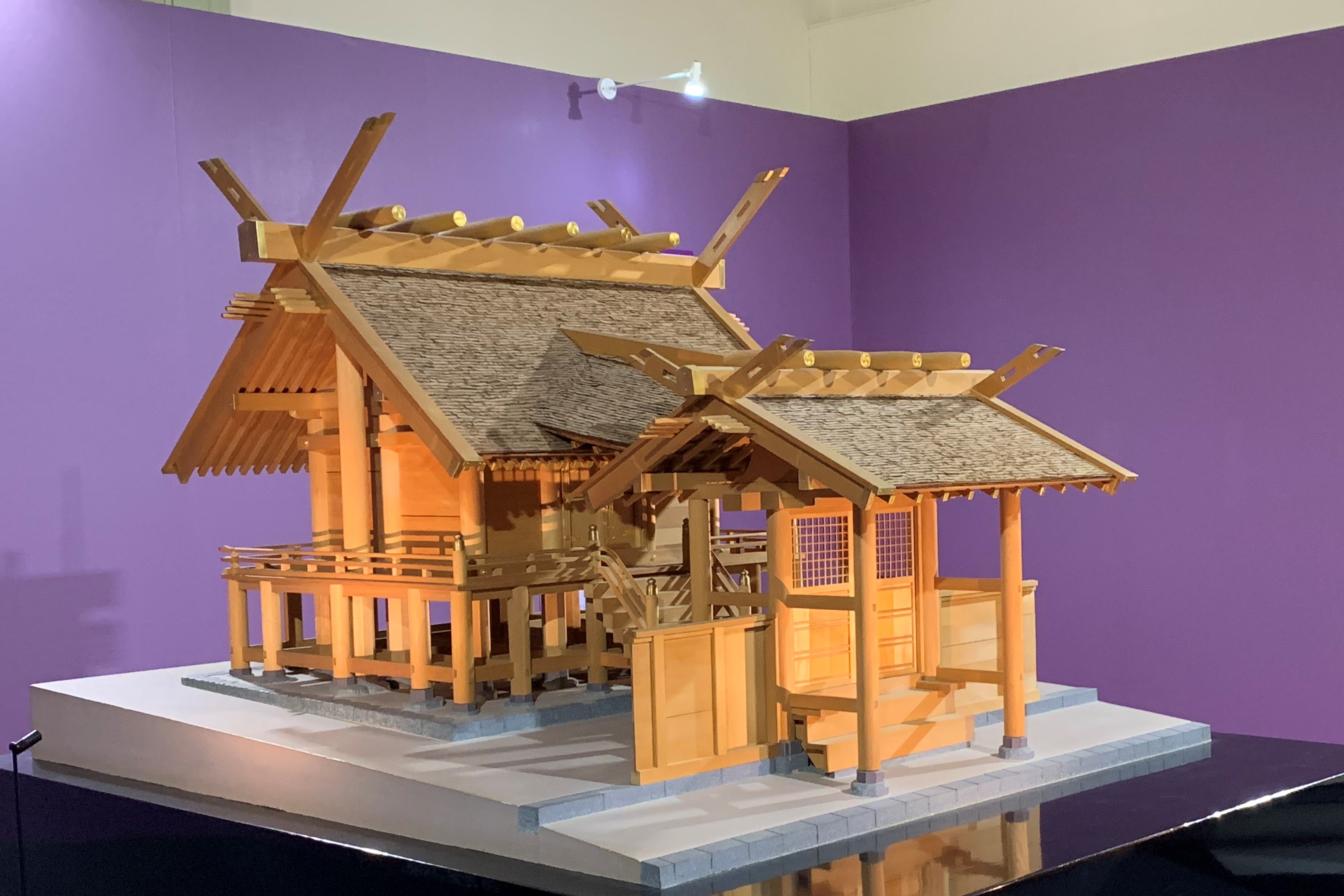
Buddhist temples, castles, tea rooms-A variety of 19 ancient and modern traditional architectural models are on display.
Traditional Japanese architecture has undergone repeated changes and diversification while adapting to the climate and regions under social conditions such as politics and religion, and infusing the aesthetic sense of each era.
The architectural model is a condensed expression of the excellent techniques and aesthetics of the craftsmen found in such traditional architecture. Wood, soil, stone … It can be said that it is a convenient existence to get a bird's-eye view of the history of Japanese architecture itself, as well as the modeling features that make use of various natural materials.
The main exhibits in "From ancient times to the early modern period, the origin of Japanese architecture" are models whose original buildings are national treasures and important cultural properties, such as the Horyuji Five-storied Pagoda, Matsumoto Castle Tower, Tofukuji Sanmon, and Nyoan. With 19 models that have been precisely reproduced in detail, you will appreciate the styles and designs of traditional architecture up to the early modern period.
It is rare for such models to meet together, and some of them are architectural models that have rarely been shown before, making it a valuable exhibition.
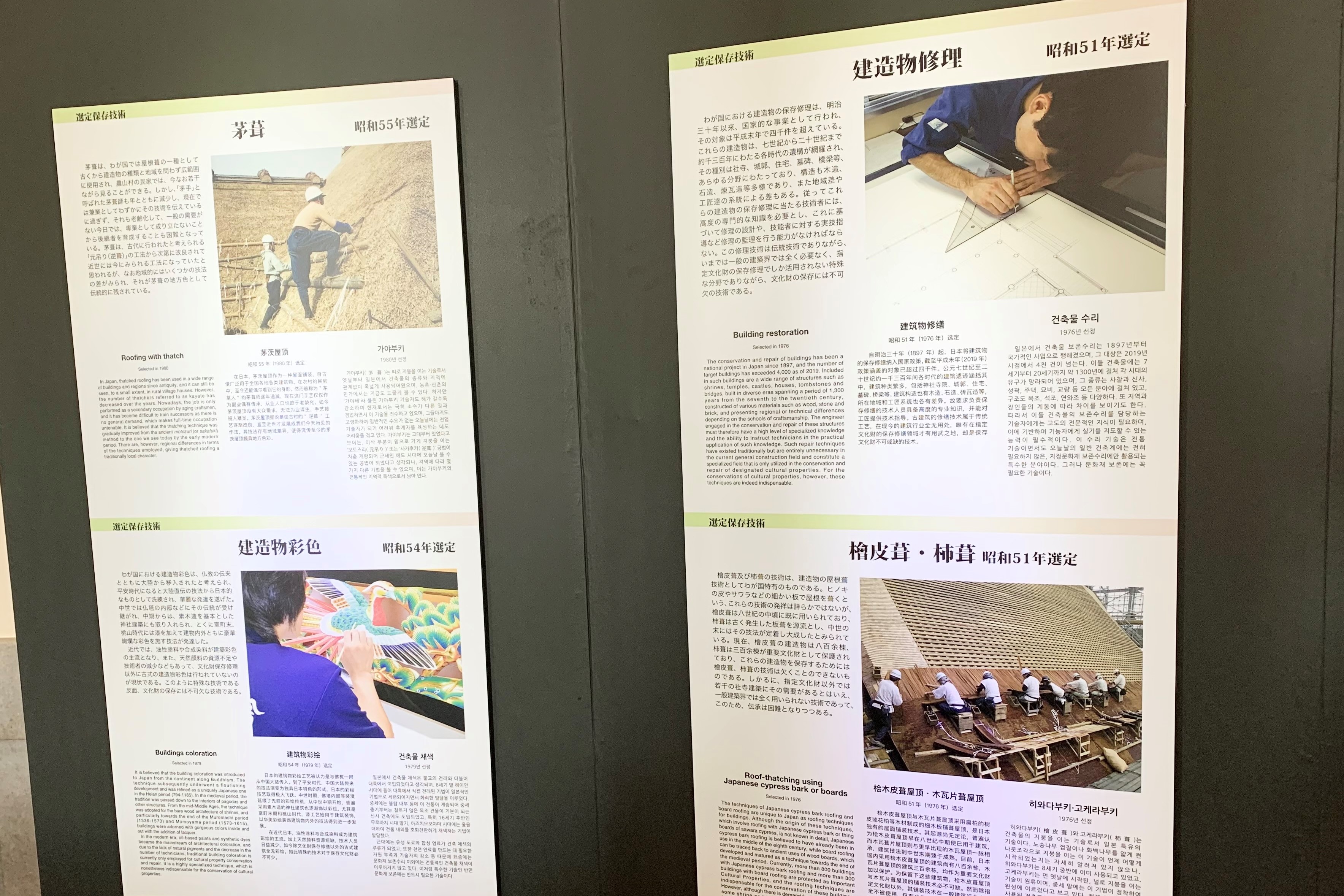
Great power! Presence of 1/10 scale model
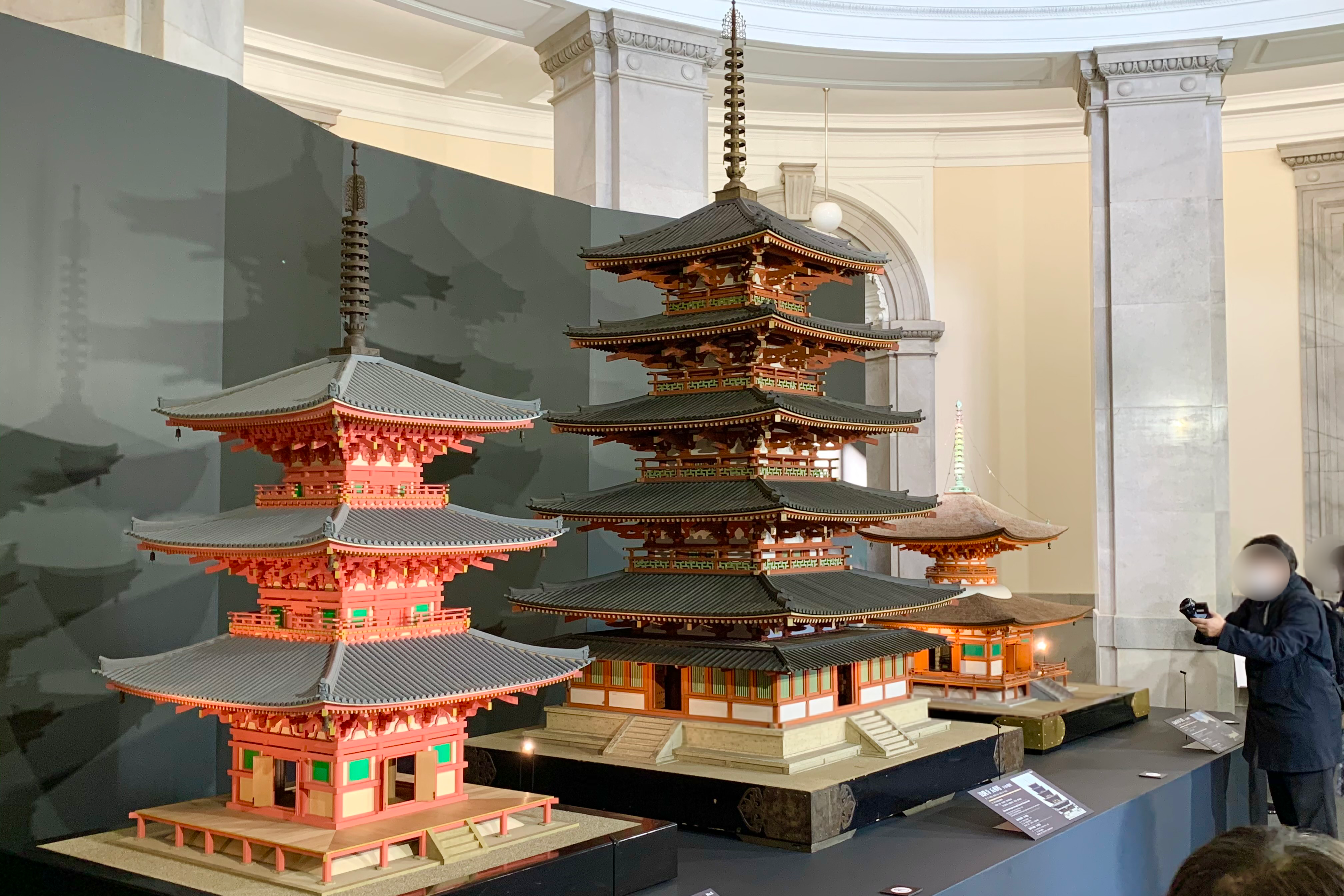
The venue for this exhibition is the Hyokeikan in the Tokyo National Museum. In each room on the 1st and 2nd floors, works were classified into a wide range of categories such as "medieval Buddhist temples," "shrines," and "private houses."
Most of the architectural models on display are 1/10 the size of the original building, which is quite large. It is very powerful and you can carefully check not only the overall structure but also each of the ornaments.
In addition, some models were arranged so that they could be viewed from anywhere around 360 degrees, while others were divided and manufactured so that the internal structure could be confirmed, such as Tofukuji Sanmon and Toshodaiji Kondo.
It is recommended to appreciate the work from various angles, from front to back and diagonally from below.

For example, here. The 1/10 model (divided) of Toshodaiji Kondo is actually a beautifully colored pattern that reproduces the original building behind the ceiling. However, I have inadvertently overlooked it and regret it, so if you are going to go, please watch every corner.
The more you look for any model, the more highlights you will find. You may enjoy it like a treasure hunt.
Introducing model works


The main hall of Daisen-in Temple, which is said to have the oldest "Tokonoma" in Japan, is a representative building of Zen-in Hojo architecture and is designated as a national treasure.
What I would like you to pay attention to in this 1/10 model (division) is the obstacle painting. It was amazing to see that even one of Motonobu Kano's masterpieces, "Four Seasons Bird-and-Flower", was reproduced in detail.
Currently, it has been renovated to a hanging width, but it was originally an eight-sided fusuma painting. It may be said that the fun of the model is that you can appreciate the Daisen-in Temple at that time when the fusuma paintings were included.
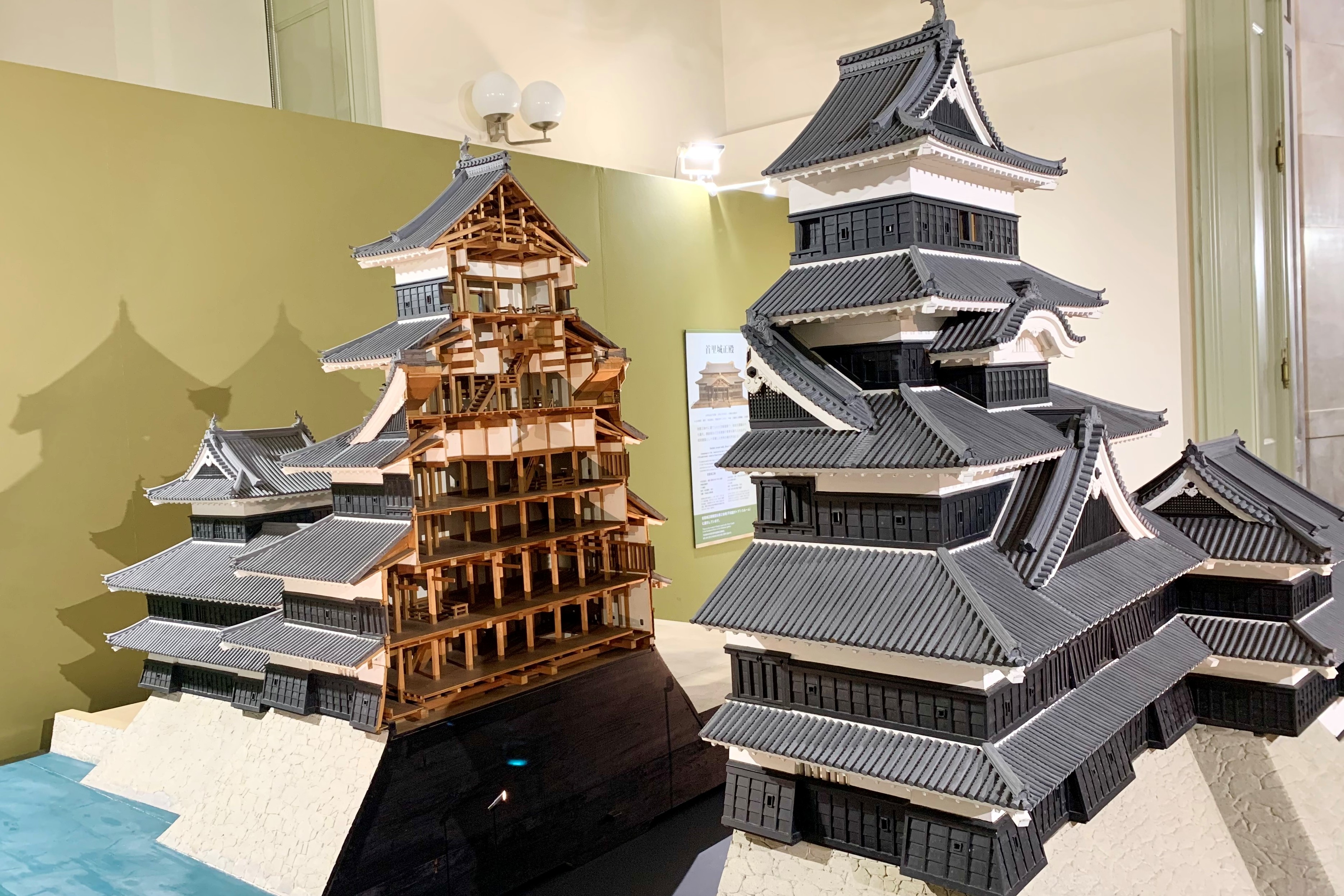

Matsumoto Castle, along with Himeji Castle, is the representative remains of the five-storied castle tower, and is said to be the oldest existing five-storied castle tower in Japan. It seems that a model was made as an example of a typical Japanese castle architecture.
This 1/20 model (divided) is also impressive enough. I can't imagine what the inside looks like from the outside, but when I look at the overall structure from the cross section, I noticed various things such as "the arrangement of the stairs is interesting" and "the space itself is quite simple". Feeling fresh and exciting.
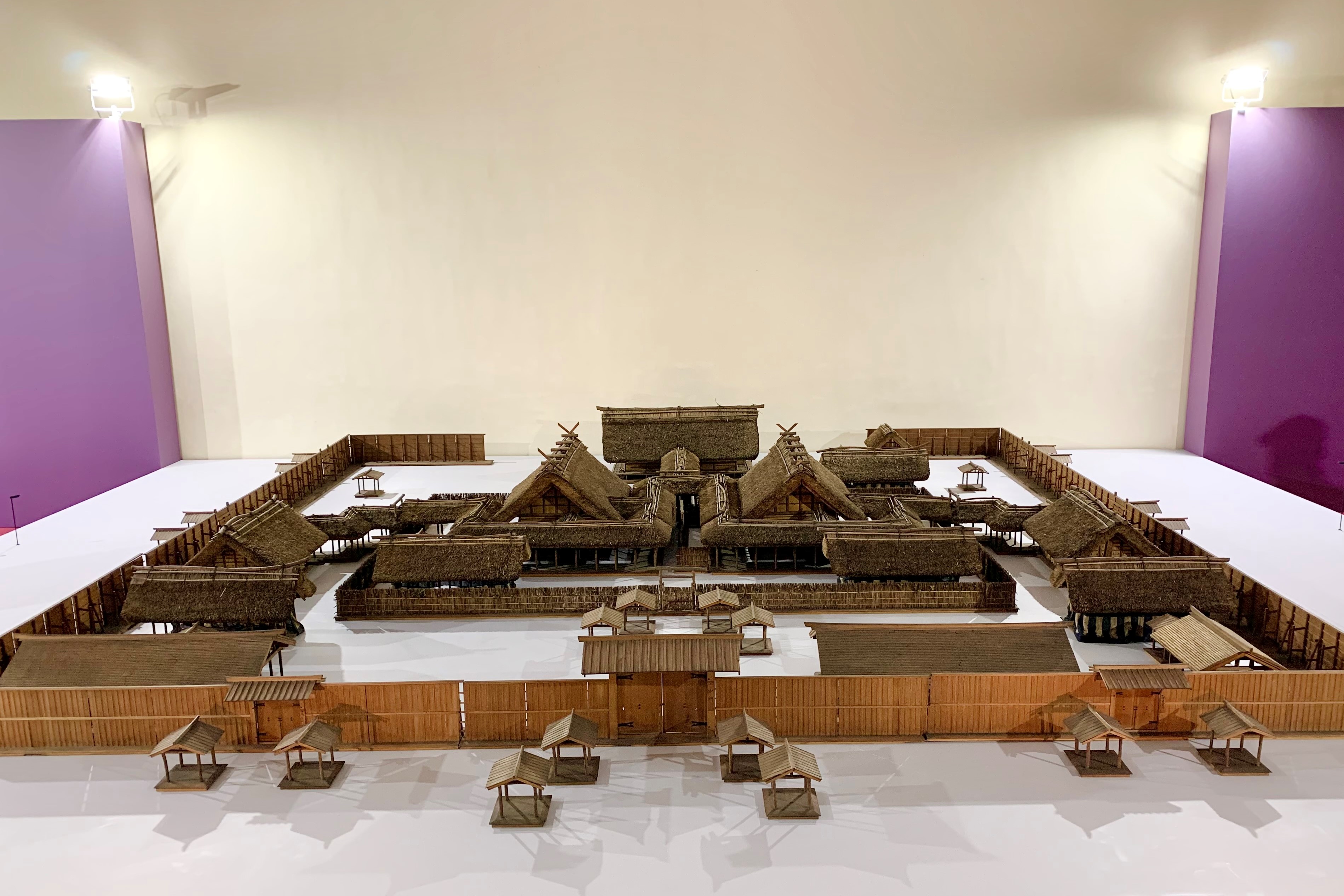
In November 2019, following the coronation of the new emperor, the Miyanaka ritual "Daijosai" was held to pray for the well-being and fertility of the five grains for the nation and the people, and was open to the public.
The festival ground "Daijo-sai", which was built just for that purpose, has already been dismantled, but in this exhibition, a model of "Meiji degree Daijo-sai" used at the Daijo-sai, which was the throne of the Emperor Meiji in 1871, is exhibited.
Reiwa's "Daitogu" had a thatched roof, but this was lined with traditional thatched roof buildings.
It was made by the Shikibu staff of the Imperial Household Agency, and was exhibited at the Tokyo National Museum until the Taisho era, but after that it was stored in a warehouse. It's a waste that such a masterpiece has been buried for many years …!
◆ A model of Shurijo Castle, which was burnt down in 2019.
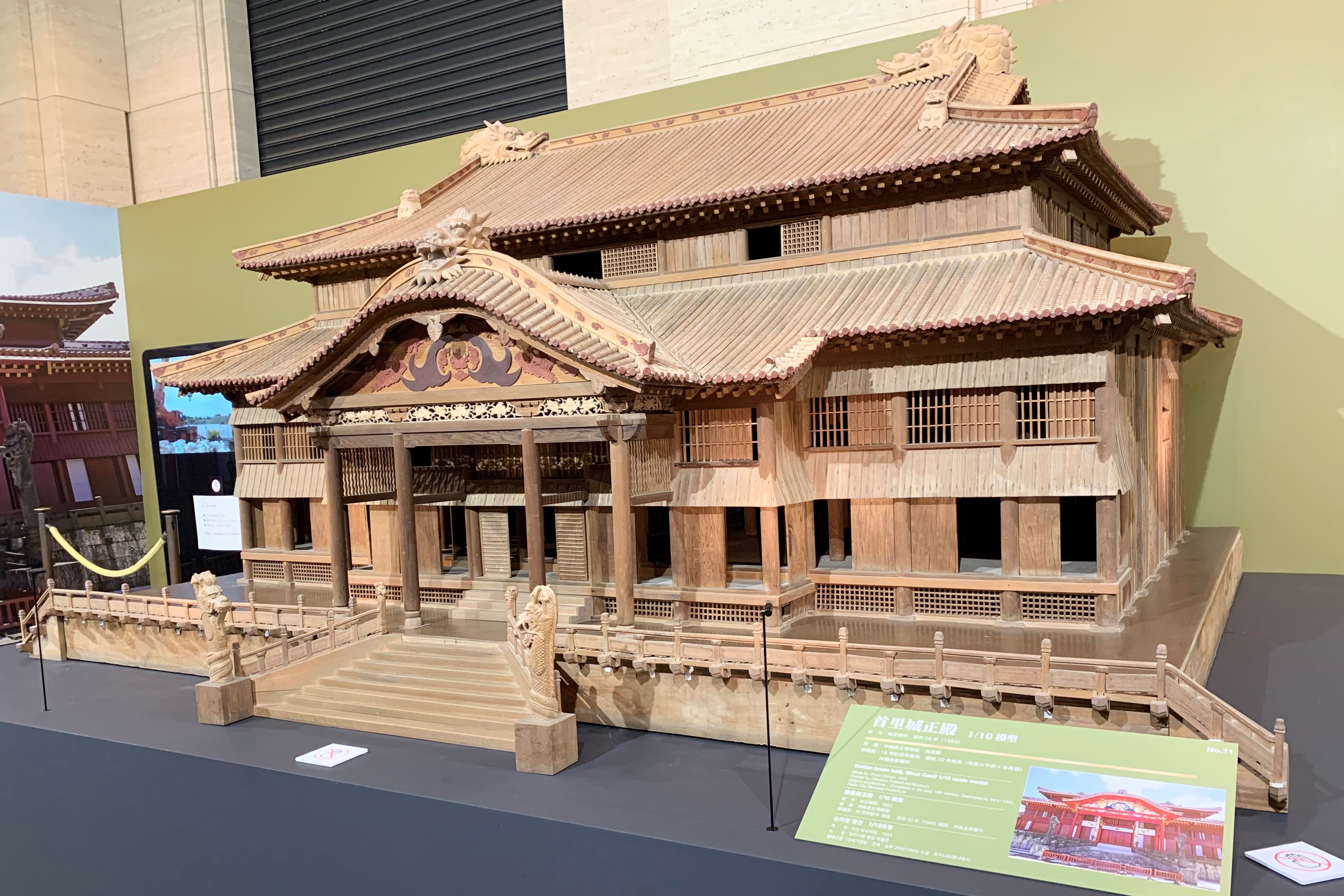
Shurijo Castle, which is said to have been built in the first half of the 18th century, was once the cultural and diplomatic center of the Ryukyu Kingdom and can be called a symbol of the history of Okinawa.
The main facilities were restored in 1992 after the Battle of Okinawa, but a large-scale fire in October 2019 burned down six buildings, including the main hall. The appearance of the fiery flames burning was covered in the news every day, so I think many people are new to their memory.
A 1/10 model of Shurijo Castle will also be exhibited at this exhibition. This work was made in 1953 by a carpenter named Chinen Choei who participated in the dismantling and repair before the war, and this is the first time that it will be exhibited at an exhibition outside Okinawa Prefecture.
You can see a unique design that mixes Japanese and Chinese architectural styles. For example, the two-story, three-story building and the stairs that spread out from the front are unique to Ryukyu.
Although the characteristic vermilion color of the original building cannot be seen, I was motivated to rebuild it in 2026 by comparing it with the photo of the main hall of the day on the same floor.
On December 17, the United Nations Educational, Scientific and Cultural Organization (UNESCO) summarized the techniques of 17 fields inherited by Japanese palace carpenters and plasterers, "Traditional Building Craftsmanship: Traditional Techniques for Inheriting Wooden Buildings" UNESCO I just decided to register it as an intangible cultural heritage.
That's why now, why not take a look at the techniques and aesthetics that the Japanese have cultivated so far at the "Japanese Tate-Traditional Techniques and Wisdom Utilizing Natural Materials" exhibition.
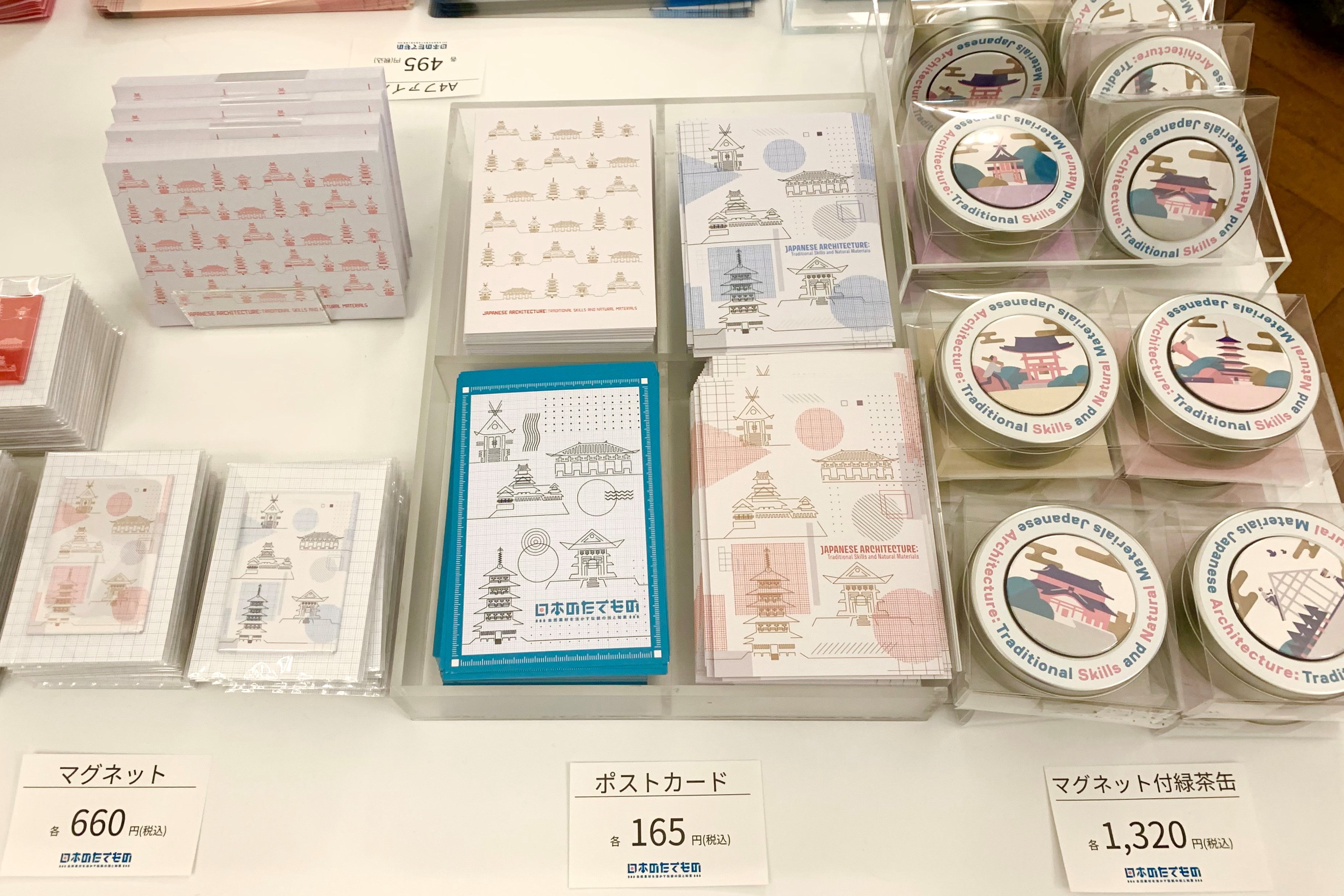
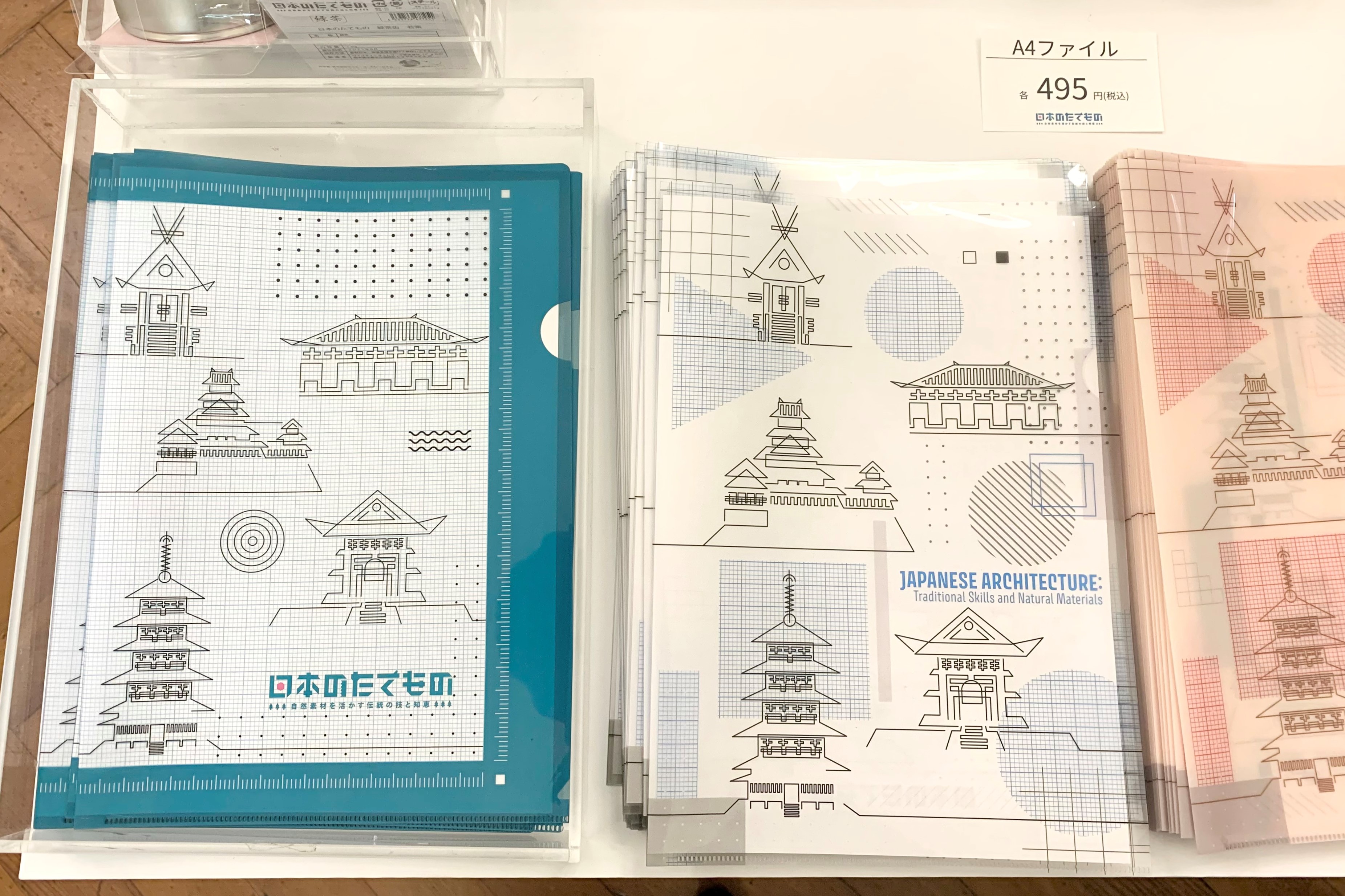
Outline of the event
"Japanese Tate-Traditional Techniques and Wisdom Utilizing Natural Materials"
Venue theme "From ancient times to modern times, the origin of Japanese architecture"
| Session | December 24, 2020 (Thursday) -February 21, 2021 (Sunday) |
| Venue | Tokyo National Museum Hyokeikan |
| Opening hours | 9:30 am to 5:00 pm * Open until 9 pm on Fridays and Saturdays * Closed at 5 pm on Saturday, January 2, 8 (Fri), and 9 (Sat) |
| closing day | Monday, December 26, 2020 (Sat) -January 1, 2021 (Friday / holiday), January 12 (Tue) * However, the museum will be open on January 11th (Monday / holiday). |
| Admission fee | General 1,500 yen, university students 1,000 yen, high school students 600 yen * Free for junior high school students and younger, persons with disabilities and one caregiver. |
| Notes | * Admission is by online advance reservation (reserved-seat ticket). * If the capacity is not reached, reception is possible on the day. Click here for tickets ↓ https://tsumugu.yomiuri.co.jp/tatemono/ticket.html |
| Official page | https://tsumugu.yomiuri.co.jp/tatemono/ |
[Tokyo National Museum] Special Exhibition “Momoyama-100 Years of the World” Preview Report [10 / 6-11 / 29]
Tokyo National Museum

During the period from October 6th (Tuesday) to November 29th (Sunday), 2020, a special exhibition “Momoyama-100 Years of the World” is being held at the Tokyo National Museum Heiseikan in Ueno, Tokyo. ..
The other day, I participated in the press preview held earlier, so I will report on the exhibited works and the state of the venue.
The special exhibition “Momoyama-100 Years of the World” is such an exhibition

The Azuchi-Momoyama period lasted for 30 years from the fall of the Muromachi Shogunate in 1573 to the opening of the Edo Shogunate in 1603. It was a time of rapid change, when Japan changed from the time of turmoil with the rise of Sengoku warlords to the time of peace by the Edo Shogunate.
“Momoyama Art”, which is said to be the most magnificent and splendid in the history of Japanese art, has blossomed.
The special exhibition “Momoyama-100 Years of the Tenkajin ” represents the Japanese aesthetic sense that changed during the 100 years from the end of the Muromachi period to the beginning of the Edo period, centered on the Azuchi-Momoyama period. This is an exhibition where you can check out about 230 works of art.
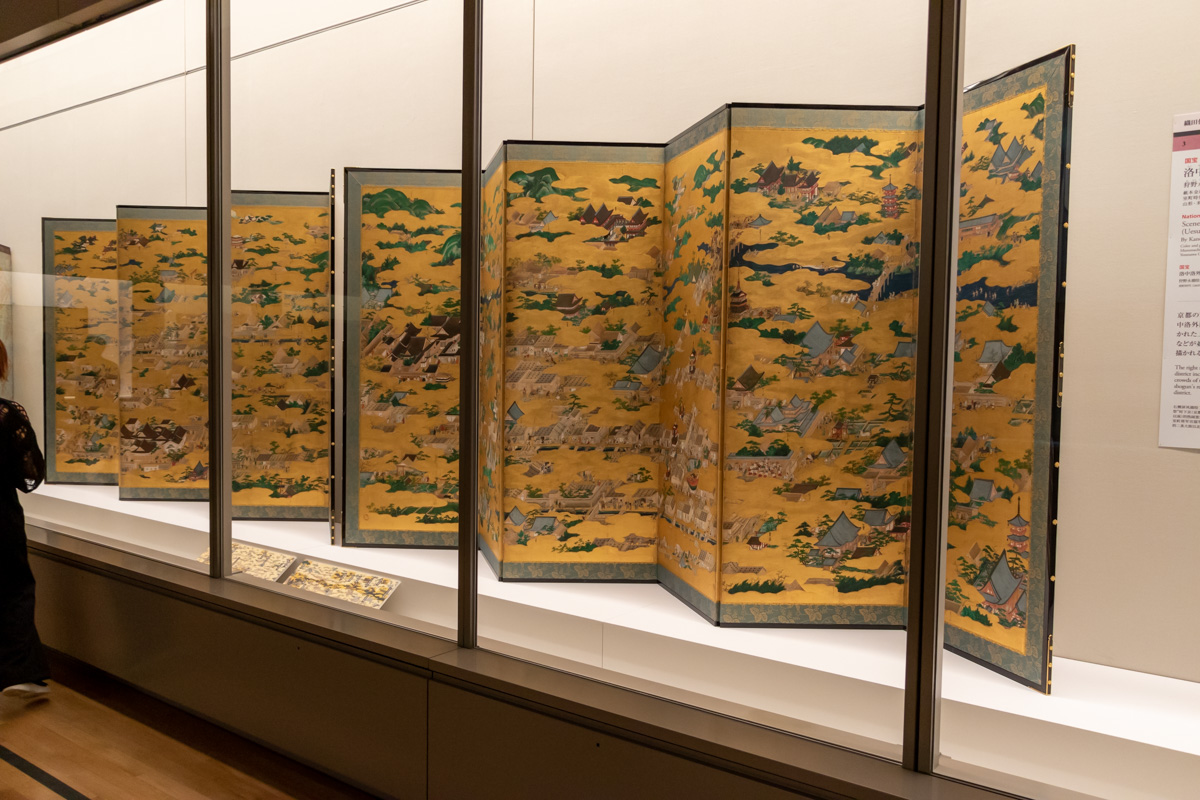
Exhibition points ① National treasures and important cultural properties are packed!
In this exhibition, more than 100 national treasures and important cultural properties are exhibited in the first and second semesters . Selected masterpieces, each of which can be the centerpiece of the exhibition, are gathered at this Tokyo National Museum from all over the country.
Famous works such as “Rakuchu Rakugaizu Rakufu (Uesugi Family Book)” and “St. Francis Xavier Statue” that you have seen in textbooks are lined up. In addition, items related to Nobunaga Oda and Ieyasu Tokugawa are lined up, and it may be said that this is an exhibition that Sengoku fans should see at least once.
Exhibition points ② Check it out! Exhibited works change in the first half and the second half
Please note that the exhibition period is divided into the first half and the second half, and a considerable number of works will be replaced .
・ The first half exhibition will be from October 6th (Tuesday) to November 1st (Sunday).
・ The second half of the exhibition will be from November 3rd (Tuesday / holiday) to November 29th (Sunday).
Some works will be exhibited for the entire period, some will be exhibited only in the first half, only in the second half, and some will be exhibited only for a specific period, so if you absolutely want to see some works, it is recommended to check the exhibition period in advance. is. Please check the official website for details on changing exhibits.
In this article, we will mainly introduce works that can be viewed in the previous term.
Exhibition work introduction

From here, I will introduce some of the works that can be viewed during the exhibition period of the previous term with photos.
■ Pickup ① Obstacle painting
There is a wide variety of exhibits such as paintings, tea utensils, kimonos, swords, armor, and furniture such as suzuri-bako , but the most notable are the large-screen paintings such as obstacle paintings . With the impression that he is putting great effort into it, in both the first and second semesters, a large number of masterpieces by painters representing the Azuchi-Momoyama period, such as Eitoku Kano, Tohaku Hasegawa, and Chokuan Soga, are collected.
In an era when the momentum for unification of the world was increasing, economic activities and cultural exchanges in each region became active, and the world of people was further opened by coming and going overseas. Gorgeous and magnificent art born as if reflecting the spirit of the time. It can be said that disability painting is a genre where you can feel the size of the scale most frankly.



A dragon and a tiger drawn on one side of each of the six songs and one pair. “Ryutorazu Ryofu” by Soga Chokuan, who specializes in ink painting, is a Ryu-Tora-zu Ryofu painting that was so powerful that it competed for one or two in the exhibition in the previous term. It is fantastic and intimidating, and is full of magnificence typical of the Azuchi-Momoyama period.

The trunk and branches, which are shaped by a speedy brush stroke and spread through the screen, are full of dynamic vitality despite being a plant, and are like a dragon. “Cypress Trees” by Eitoku, who established the large painting style, is rough and approaches the viewer with an overwhelming presence.
■ Pickup ② Armor armor
During the Azuchi-Momoyama era, when the battle continued, weapons and armor also developed significantly in order to win the battle. For example, the military commanders should actively use the practical sword “Uchigatana”, which was popular mainly among the people, with elaborate taste. It was also during this period that “Toseigusoku”, which makes the whole body armor uniform, appeared.
The warlords showed their status and personality by giving various decorations and ingenuity to their equipment while emphasizing practicality. At the exhibition, you can appreciate such works that you can feel the way of life of the warlords at that time.



The head that is said to represent the cliff of Ichi-no-Tani, which was the stage of the “Battle of Ichi-no-Tani”, which is especially famous in the Genpei War, and the large nail-shaped one that is over 90 cm in length and is inserted so as to rise toward the heavens. Back. “Tanigata Helmet of Weiichi Shiraito” is a strange helmet that is said to have been handed down from Ieyasu Tokugawa to the Mito Tokugawa family.
The large nail, which looks like a horn, is a motif favored by military commanders as it pierces the enemy. Originally, it is said that silver foil was pressed all over, and together with this menacing modeling, it is possible to imagine how inspiring the wearer’s heart.
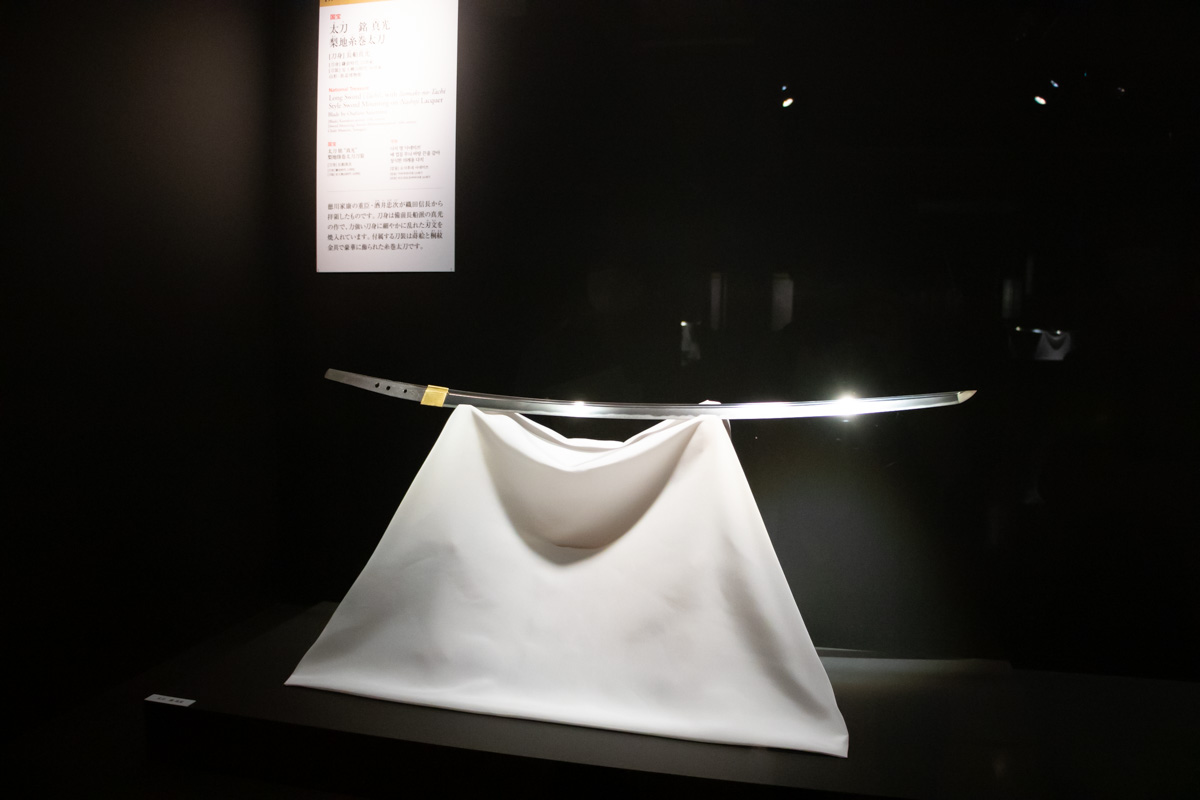

This “black lacquer sword” is a sword made to accommodate the famous sword “Masamune Honjo”, which is said to have traveled the Tokugawa family for generations. This is the first time to exhibit at the exhibition!
“Uchigatana” was developed during the Azuchi-Momoyama period, but since the expression of this sword has been traditionally made since the Muromachi period, it is a transitional period of history where you can confirm the intersection of innovation and tradition. It is a gem reminiscent of.
The cool black lacquer of the scabbard and the elegant golden decorations such as chrysanthemums and paulownia decorated in three places made me feel elegance.
■ Pickup ③ Works related to Nanban art
Although it is not a genre of works such as paintings and armor, the existence of Nanban art is also indispensable for talking about the beauty of the Azuchi-Momoyama period.
From the Christian mission by Francis Xavier, the cultural and economic exchanges with foreign countries that flourished due to the traffic of Portuguese and Spanish ships, and the start of the isolation system. It was during this period that the situation changed drastically in relation to Western countries. Of course, it had a great influence on the world of art.
Nanban art refers to works of art that were established through encounters with the West and an interest in and longing for the West.


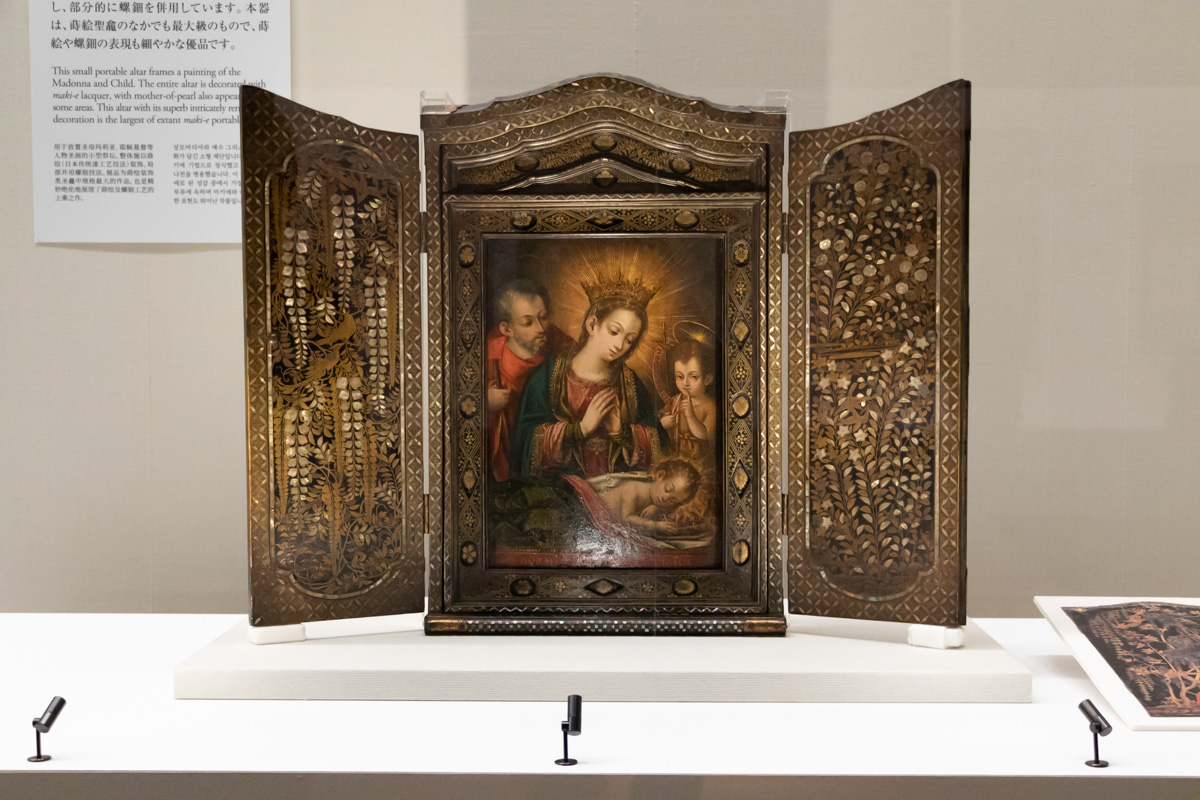
The one that caught my eye was “Kacho Makie Raden Niche”. It is written as a niche and read as “seigan”. An icon is a niche that houses Christian iconic paintings, and is one of the Nanban arts exported overseas.
The roof, frame, and other areas that can be seen from the front are densely decorated with patterns, but the flower and bird patterns that are drawn to fill the double doors are so beautiful that words cannot be said. It is a work with endless highlights together with the tempera painting inside.
In addition to the genres we picked up, there are also pottery related to Sen no Rikyu, the master of the tea ceremony, such as “Gourd Flower Yan Hui” and “Kuroraku Tea Ceremony Kamuro” (both exhibited in the previous term). Clothes such as “Kosode Dyed Rinzu Rinzu Kotemari Matsukaede” (exhibited for the entire period), etc., where you can see the transitional designs that gradually change from a design that emphasizes steps and streaks to a pictorial design.
There were so many things to see, and time passed in a blink of an eye.


Extensive museum goods
Be sure to check out the museum goods section before you return home. A wide range of items such as interior goods, T-shirts, and daily necessities with the motif of the exhibited works were available.
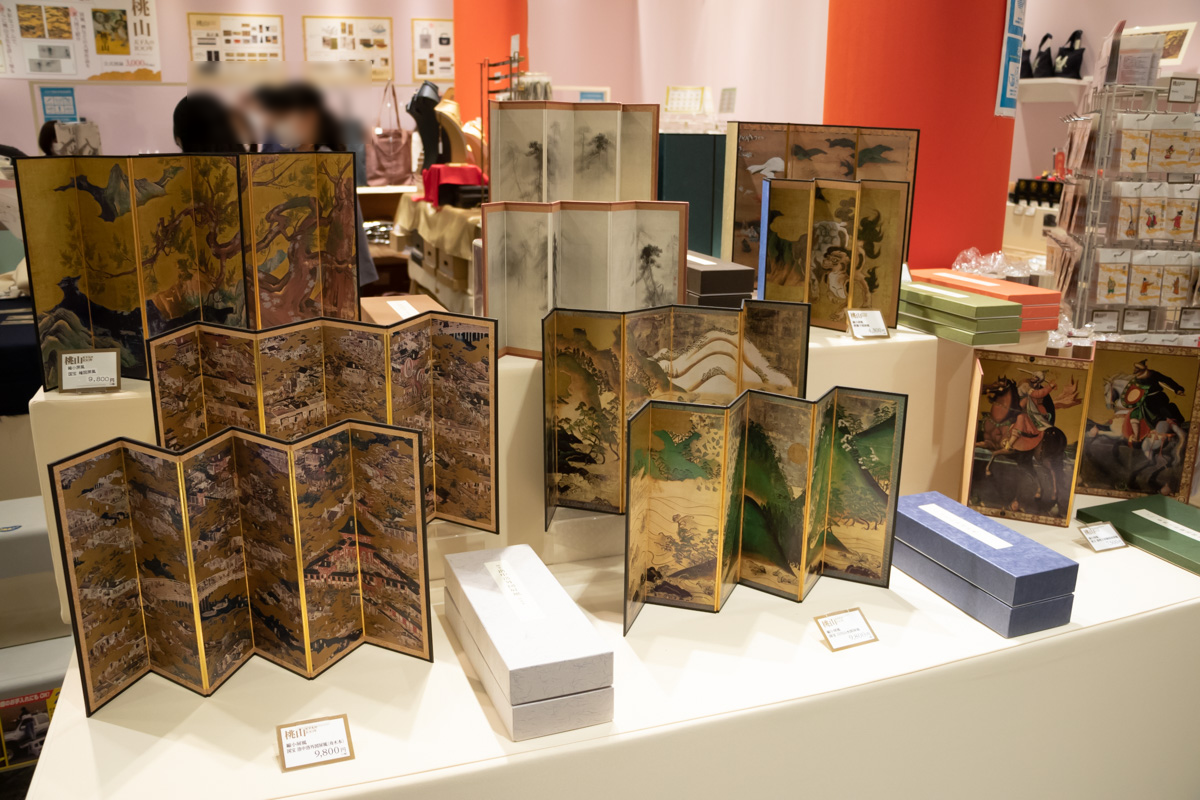

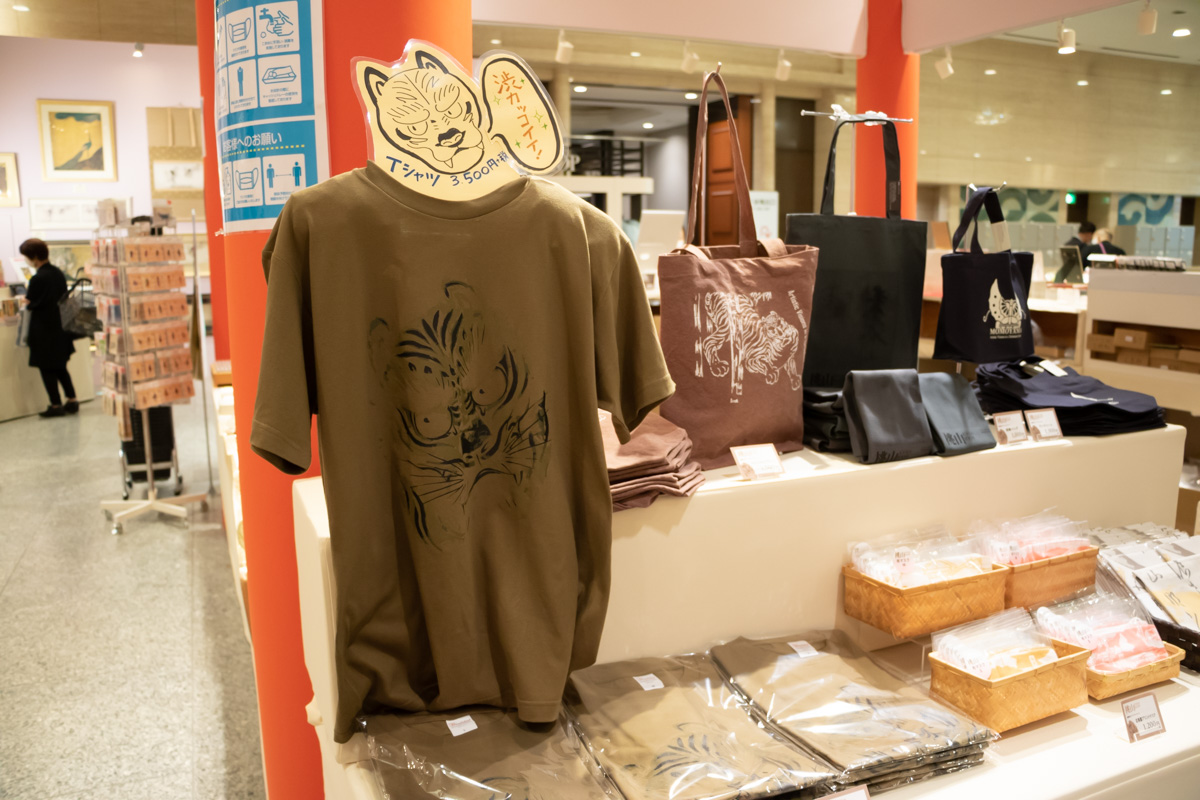

The special exhibition “Momoyama-100 Years of the World” will be held until November 29th (Sun).
Please note that due to the new coronavirus infection countermeasures, it is a complete advance reservation and time designation system.
A valuable exhibition of famous gems from all over the country. Please come visit us in the fall of art.
Outline of the event * Complete advance reservation system / time designation system
| Exhibition name | Special exhibition “Momoyama-100 years of the world” |
| Session | October 6th (Tuesday) -November 29th (Sunday), 2020 ◇ First half exhibition: October 6th (Tuesday) -November 1st (Sunday) ◇ Late exhibition: November 3 (Tuesday / holiday) -November 29 (Sunday) |
| closing day | Monday (However, the museum is open on November 23 (Monday / holiday)), November 24 (Tuesday) |
| Opening hours | 9:30 am to 6:00 pm * Open until 9:00 pm on Fridays and Saturdays |
| Venue | Tokyo National Museum Heiseikan |
| Admission fee | General 2,400 yen University student 1,400 yen High school student 1,000 yen * All tax included |
| Organizer | Tokyo National Museum, Yomiuri Shimbun, Agency for Cultural Affairs |
| Official site | https://tsumugu.yomiuri.co.jp/momoyama2020/ |
<Reference Material> Yomiuri Shimbun “Special Exhibition” Momoyama-100 Years of the World “”
Evil incarnation, Queen of Reversals … An exhibition that unravels the “person” of the royal family. [Ueno Royal Museum] (~ 2021/1/11) “KING & QUEEN Exhibition” Press Preview Report
Ueno Royal Museum
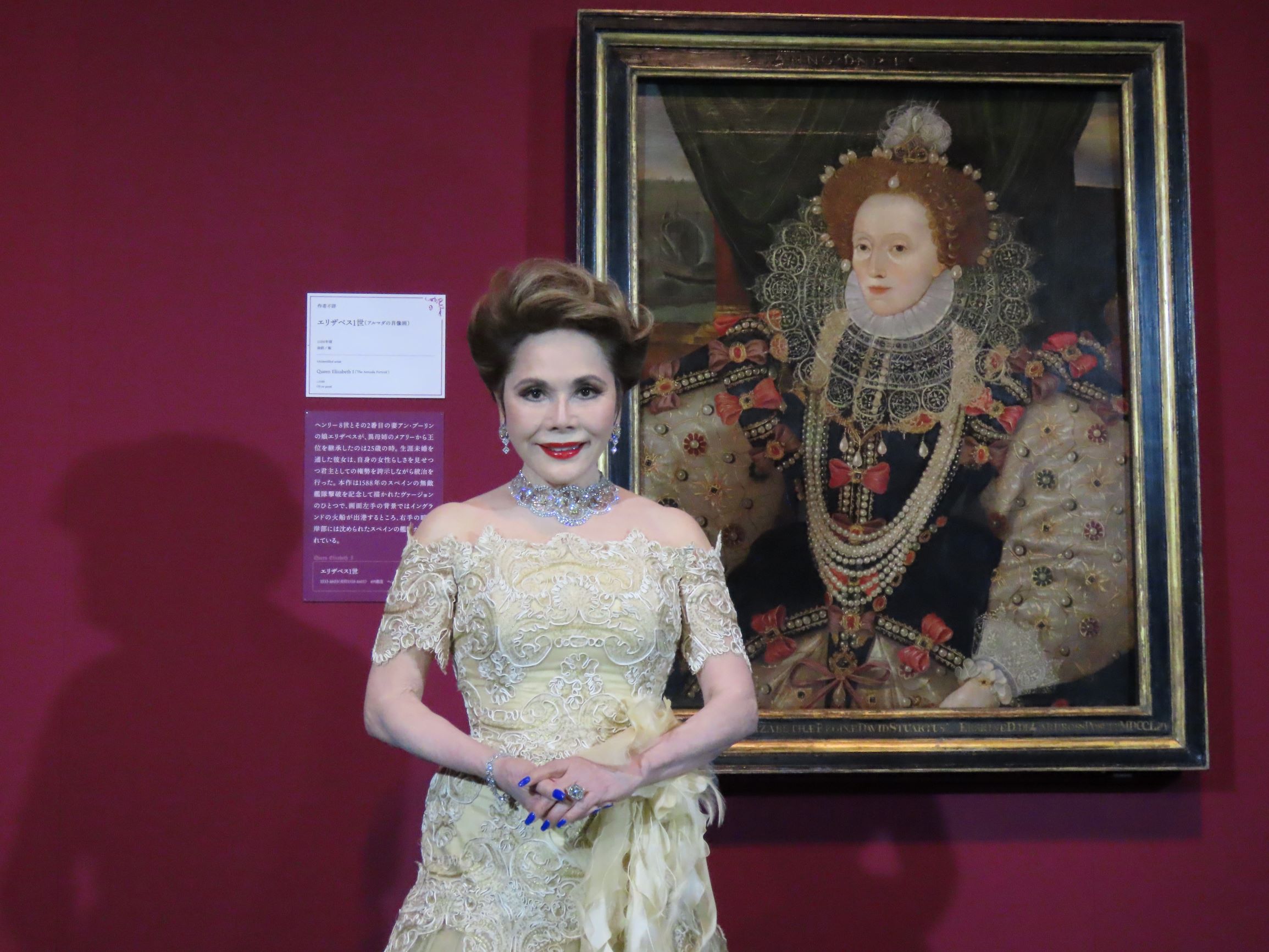
The “KING & GUEEN Exhibition” is being held at the Ueno Royal Museum from Saturday, October 10, 2020 to Monday, January 11, 2021. A special preview for the media was held the day before the release, so this time we will tell you about it.
The story of the British royal family, traced in portraiture.



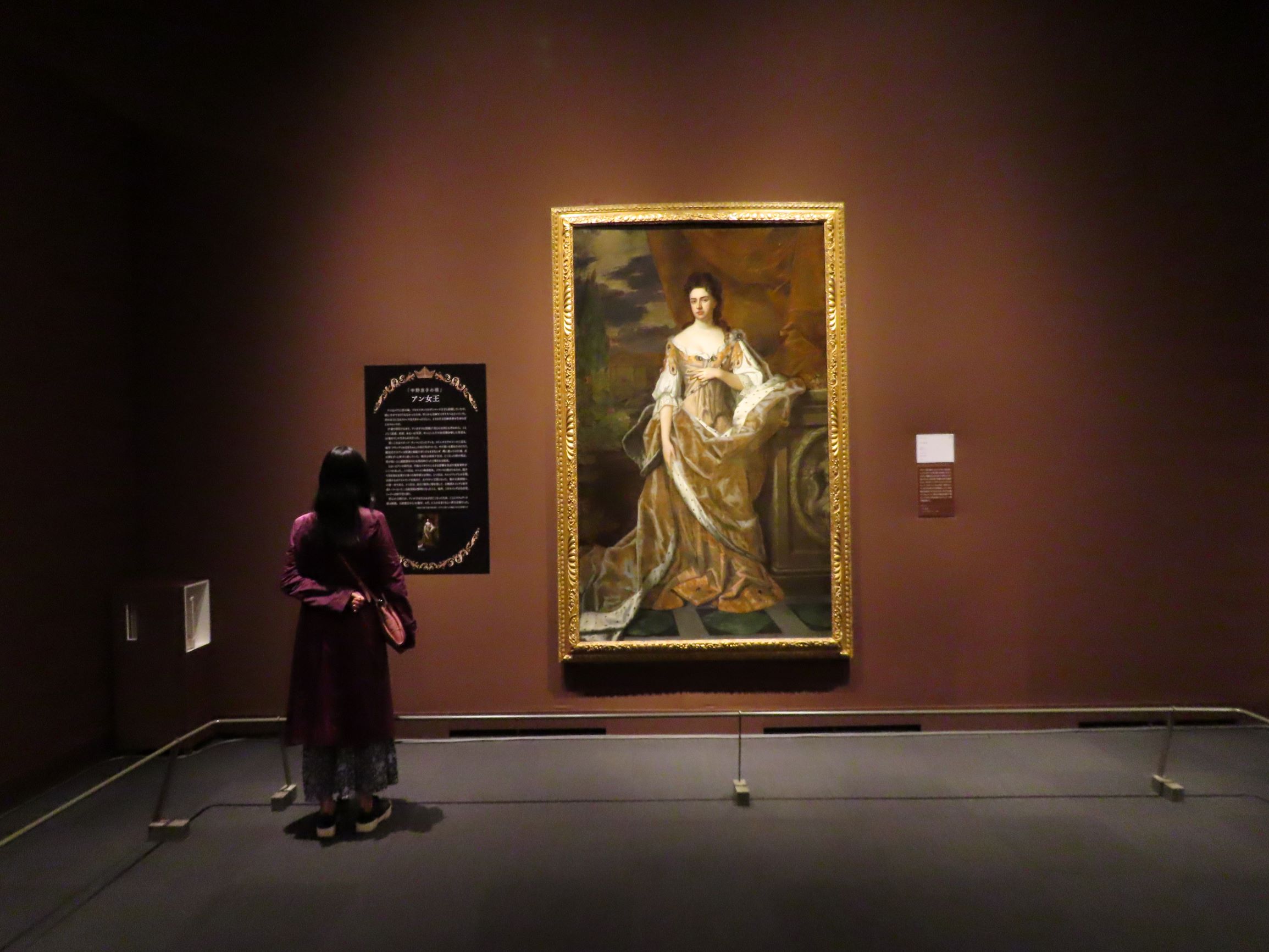


Like Japan, Britain is a country that has a royal family as a nation and continues to maintain its history.
Habsburg, Omanov, Ottoman Turkey … While many dynasties have collapsed after the First World War, the British dynasty has inherited its bloodline for more than 500 years while changing its name and form in the times …
The “KING & QUEEN Exhibition” is an exhibition that traces the history of the British royal family, which continues to attract attention from all over the world. The collection of the National Portrait Gallery in London, one of the world’s leading museums of portraiture, will showcase about 90 precious portraits and photographs from the Tudor dynasty to the present Windsor dynasty.
Mrs. Devi, a supporter of this exhibition, has also appeared!


In addition, Mrs. Devi, who became a supporter of this exhibition, appeared at the press preview.
Mrs. Devi, who was formerly called a “genius” in painting, once thought about pursuing that path. While showing solid insight into painting and royal fashion, there were many “celebrity” stories that only Mrs. Dewi could tell, such as the episode she met at a horse racing festival with Princess Diana.
Finally, when asked, “What is the point of wanting you to see here in the exhibition?”
“British history, the background of the event, and what the fate of the person was. It may be little known to the Japanese, but portraits really appeal to the depths. By all means, I hope that you will deepen your understanding by watching the captions while reading them carefully. “
As a supporter, he talked about how to enjoy this exhibition.
A portrait is a story.

Britain is also famous as the birthplace of the great playwright Shakespeare. In other words, the British people are naturally fond of people, history, and stories.
One of the ways to enjoy painting is to enjoy the colors and composition involuntarily, but the changes in style and fashion sense with the times, the allegations in the details of the screen, and the “story” in the background of the painting .. .. .By tasting such things, there may be a moment when the painting in front of you comes to life.
Here, the editorial department picks up three points from the exhibited portraits. I will introduce a little “story” that flows in the background!
《Henry VIII》 Author unknown (based on the original work of Hans Holbein)[child] ) 17th century?

Love or faith? The cruelest king in British history.
A portrait of Henry VIII, allegedly based on what Hans Holbein[child] painted in 1536. The traditional royal representation, adorned with gorgeous clothing and jewelery, shows the dignity of Henry VIII at the very top of his power.
What is surprising about him is that he has married six wives throughout his life, divorced and expelled them, and even executed them. He even turned the divorced Roman Church into an enemy to marry his second wife, Anne Boleyn, and finally founded the Anglican Church. This is exactly the beginning, and the storm of religious reform will blow in the world.
It may be said that he is a man who is crazy about love and changed history because of love.
《Lady Jane Gray》 Author unknown Around 1590-1600

A 16-year-old ephemeral life scattered on the decapitation stand.
Kyoko Nakano ” Lady Jane Gray’s Execution” by Paul Delaroche, who was featured in “Scary Picture” and became famous. This is a panel painting drawn to mourn Lady Jane Gray after death, not before life. Scratched scars remain on both eyes and mouth, indicating that they have been attacked to destroy the icon in its history.
Her reign, the granddaughter of Henry VIII, lasted only nine days, being robbed of the throne by Mary, a Roman Catholic, and dying her young life on a decapitation stand at the age of only 16. ..
“George IV” Thomas Lawrence circa 1814

Pretty handsome. But is the nickname “Prince Whale”?
George IV, who was handsome and well-educated from a young age and was also called “England’s most gentleman”. He ruled the country on behalf of George III, who suffered from a mental illness, and was crowned by the death of his father . In particular, he is known to the world for his excellent artistic support activities.
A beautiful figure that is not ashamed of the name of “Gentleman”. This fascinating sculpture was made for medals, but in the end the medals were never cast. Why.
That’s because he got fat without the shadow he saw … He was constantly wasting money and prodigal, and he didn’t seem to be good at complimenting him, so his nickname was “Prince Whale . “ Well, sorry!
Outline of the event
| Exhibition name | Collection of the National Portrait Gallery, London KING & QUEEN Exhibition-British Royal Story to Read with Masterpieces- |
| Session | October 10, 2020 (Sat) -January 11, 2021 (Mon / holiday) 10: 00-17: 00 Fridays 10: 00-20: 00 * Last admission is 30 minutes before closing * Open all year round |
| Admission fee | Weekdays General ¥ 1.800 High school / university students ¥ 1,600 Elementary / junior high school students ¥ 1,000 Saturdays, Sundays, and holidays General ¥ 2,000 High school / university students ¥ 1,800 Elementary / junior high school students ¥ 1,200 We have introduced a date and time designation system. Please check here for admission methods and ticket purchases . |
| Venue | Ueno Royal Museum |
| Official site | https://www.kingandqueen.jp/ |
[Tokyo Metropolitan Art Museum] Archives material exhibition “Knowing the Old Building” held
Tokyo Metropolitan Art Museum
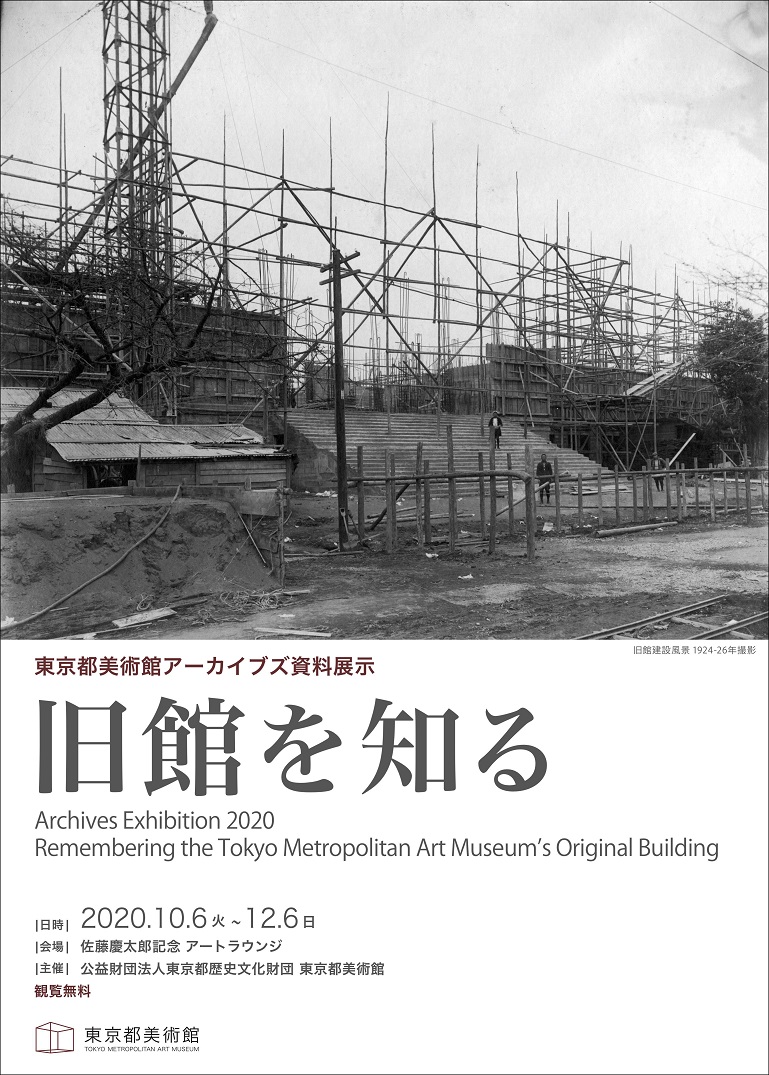
No advance reservation required ・ Free viewing
Archives Exhibition 2020 Remembering the Tokyo Metropolitan Art Museum’s Original Building
The Tokyo Metropolitan Art Museum was built by a businessman from Kitakyushu, Keitaro Sato, who donated 1 million yen (currently equivalent to about 3.2 billion yen) and opened on May 1, 1926 (Taisho 15).
The building, which was called the “Tokyo Metropolitan Art Museum” at that time, was designed by Shinichiro Okada and built in the modern classical style. Befitting the “Beauty Hall of Fame”, the majestic building with colonnades became the setting for numerous exhibitions and a place for people’s creative activities and exchanges.
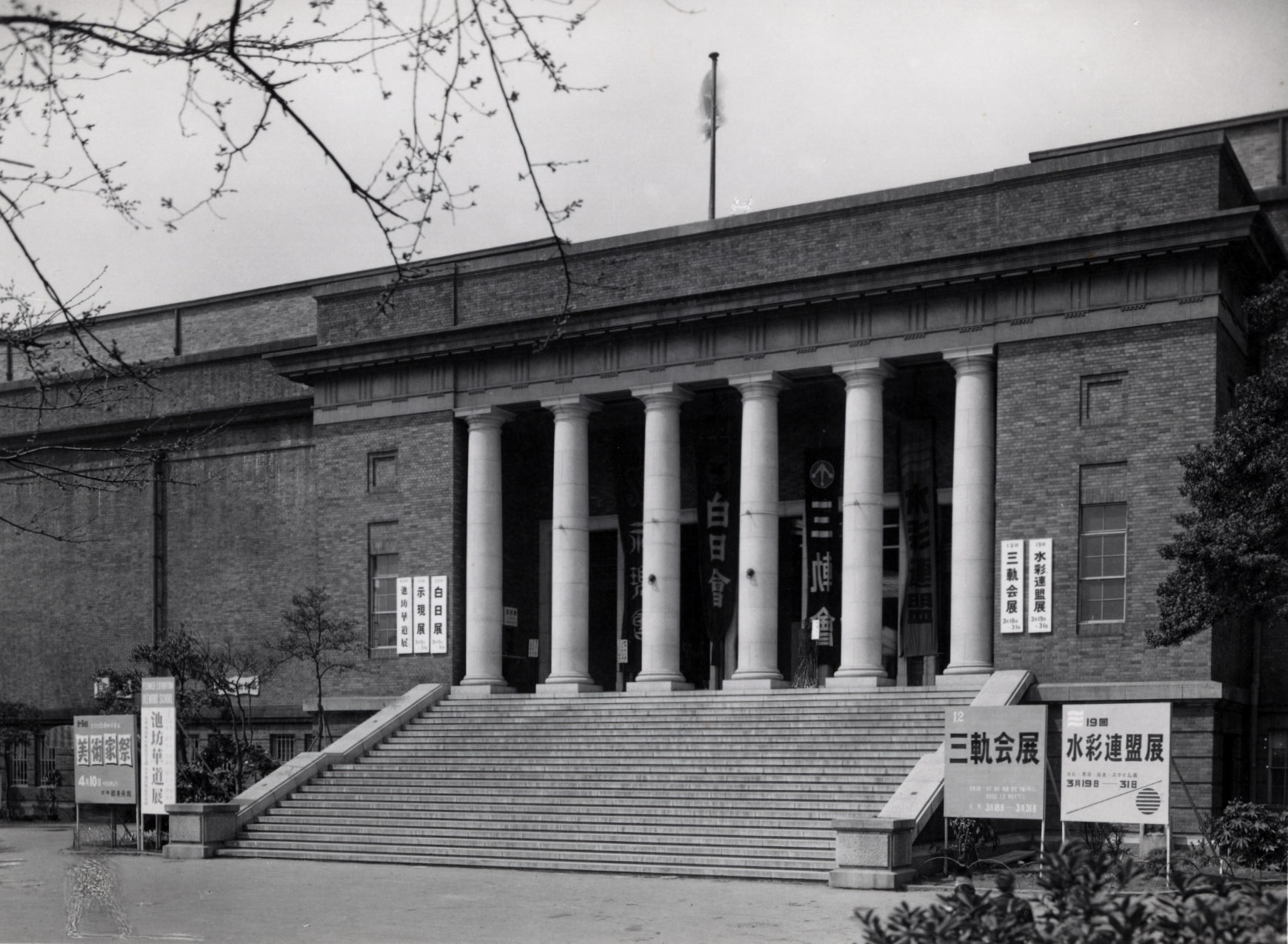
In this exhibition, through the archives materials held by the museum, Japan was born in Ueno, following the steps from the construction of the old building to the end of its role with the construction of the new building (currently the Tokyo Metropolitan Art Museum) in 1975. I would like to take this opportunity to think about the appearance of the first public museum.
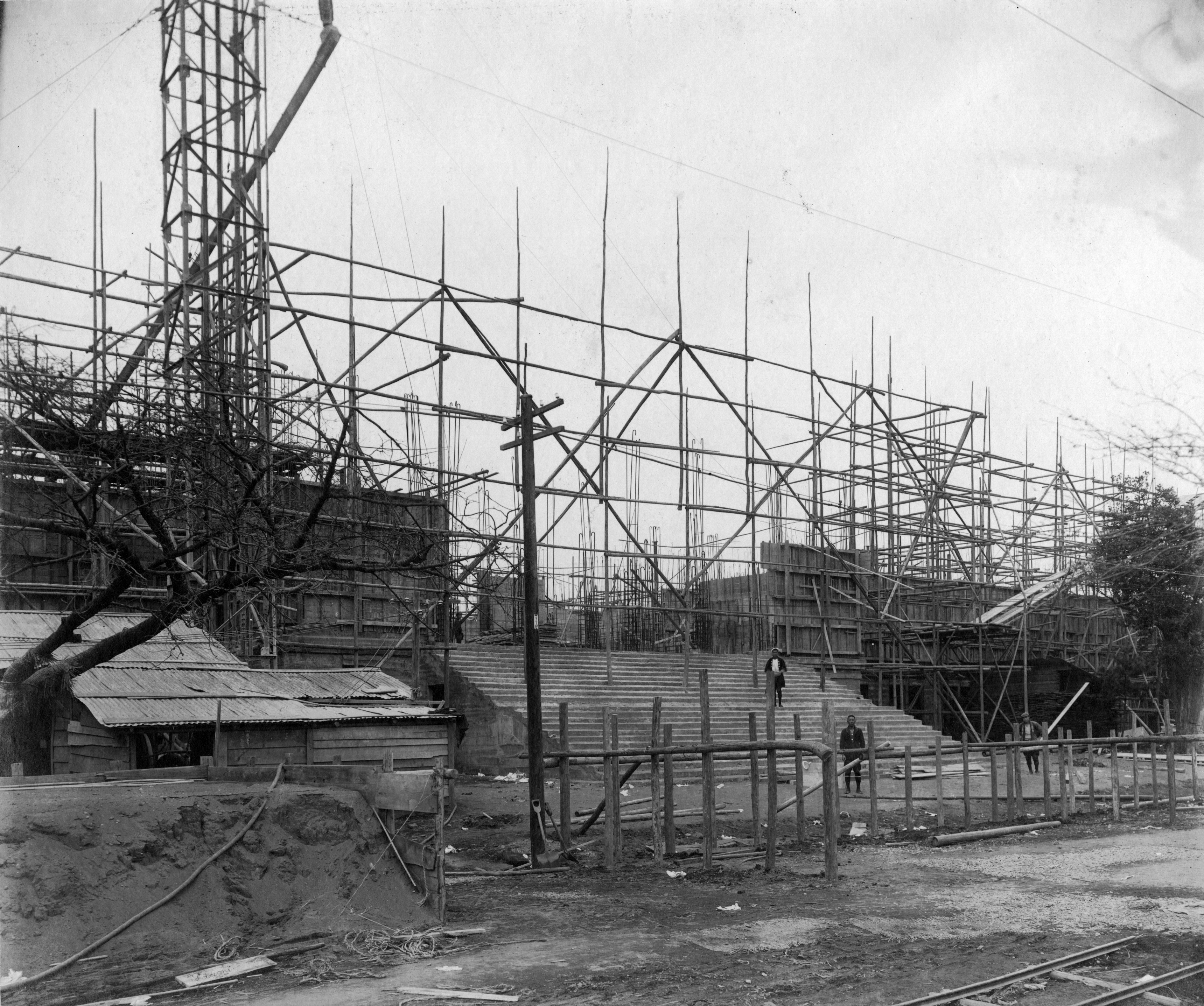
Date: October 6th (Tuesday) -December 6th (Sunday), 2020 No advance reservation required ・ Free viewing <br /> Venue: Tokyo Metropolitan Art Museum Keitaro Sato Memorial Art Lounge (Central Building 1st floor)
Closed days: 1st and 3rd Mondays Opening hours: 9: 30-17: 30
Organizer: Tokyo Metropolitan Foundation for History and Culture Tokyo Metropolitan Art Museum

Tokyo University of the Arts University Museum
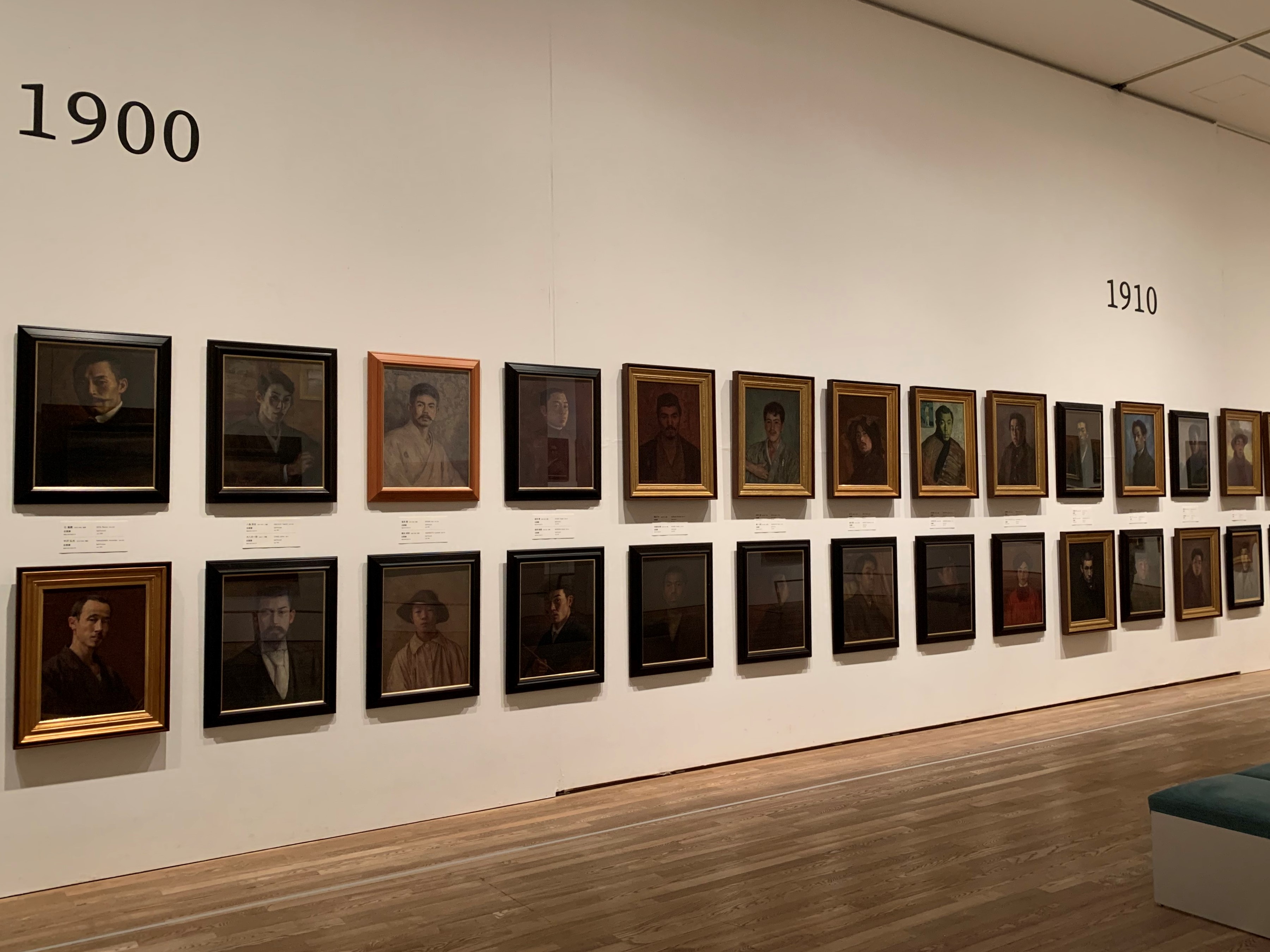
I went to the “Gaidai Collection Exhibition 2020-Chronicle” which is being held at the University Art Museum, Tokyo University of the Arts in Ueno, Tokyo from September 26, 2020!
Have you all been there yet?
In this article, we will report on the contents and highlights of this exhibition.
What was particularly wonderful was the self-portraits of the former students, which were lined up all around the exhibition room, and more than 100 of them!
Those who were active in the art world in later years, those who died at a young age despite their talent. It was a very spectacular exhibition where you can compare and enjoy the self-portraits that were projected in various ways, such as the self-consciousness and hobby interests of each student at the time.

What kind of exhibition is the “Tokyo University of the Arts Collection Exhibition”?
Tokyo University of the Arts (hereinafter referred to as “University of the Arts”) has a history of more than 130 years from its predecessor, Tokyo Fine Arts School (hereinafter referred to as “Beauty School”) to the present. Tokyo University of the Arts has collected various art materials throughout its history.
Approximately 30,000 collections are stored in the University of the Arts Museum, including works purchased by people as educational and research materials for students, works by Kiyoteru Kuroda, Taikan Yokoyama, and successive faculty members, current students, and graduates. It goes up to the point.
The “Tokyo University of the Arts Collection Exhibition” is held regularly by the University of the Arts Museum. As the name suggests, this is a valuable opportunity to worship carefully selected works from the huge collection of arts that are normally closed to the public!
“Tokyo University of the Arts Collection 2020-Chronicle of the Arts” consists of two parts. The theme of Part 1 is “Creating” Japanese Art “” and the theme of Part 2 is “Adventures over Self-Portrait”.
With the theme of tracing the history of Tokyo University of the Arts from a variety of art works like a chronicle, more than 150 works centered on paintings are exhibited.
This time, in order to enjoy the exhibition more deeply, I visited with Mr. Nagatomo, a curator researcher, explaining. Mr. Nagatomo, thank you for your cooperation in your busy schedule.

Introducing the contents and exhibited works of Part 1 “Creating” Japanese Art “”
In the first part, the important times in the collection formation during the school days were introduced along with the year when the works were collected.
By clarifying the year in which the works were collected, we can see the tendency of “what kind of things the school wanted to collect as art materials from time to time” -in other words, “ what kind of works the students of each period wanted to collect “. Did you learn the technology with reference to? “

For example, welcoming visitors at the entrance,
Naojiro Harada << Shoemaker’s Relatives >>
Yuichi Takahashi “Salmon”
Kuroda Seiki << Women’s Image (Kitchen) >>
These three famous oil paintings. (The tension soared with “Oh!” When it appeared immediately!)
It is one of the most popular paintings in the Tokyo University of the Arts collection, and it is a masterpiece that symbolizes the times, so many of you may know it.
At that time, Harada and Takahashi, who used traditional Western painting techniques, were distinguished as so-called “old school” painters, and Kuroda, who adopted impressionist-style external light expression, was distinguished as a “new school” painter. It seems that the world of Western-style painters was in a complicated situation, as journalists fueled the conflict and the Shinpa gradually became dominant.
However, there are records that all three of these items were collected at about the same time (1896-1897), when the Western Painting Department was newly established at the beauty school . You can see the teachers at that time wanting students to learn the old and new techniques and expressions of Western painting without distinction.
In this way, Part 1 gives you a glimpse into the history of schools and teachers .
From the opening of the school to the establishment of the Western Painting Department-a copy of a classical painting that supported learning
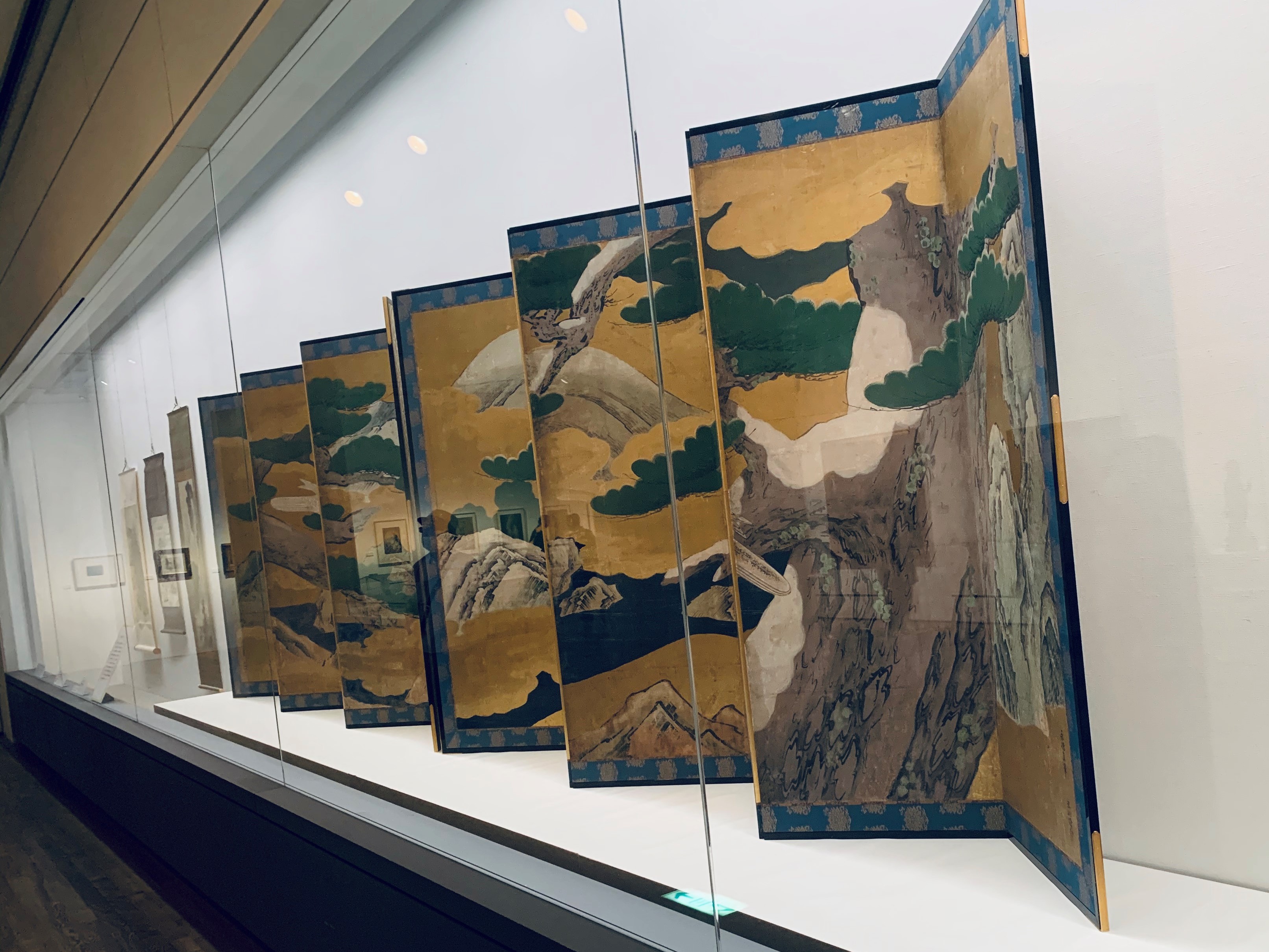
It was 1889 that was first taken up as an important age after proceeding through the entrance of the exhibition room. This is the earliest collection area where the collection was recorded in the year when the school opened.
At the time of opening the school, antique art from a wide range of eras from the Hakuho era to the Edo era, such as the national treasure “Illustrated Sutra of Causes and Effects “ and (Den) Eitoku Kano’s “Matsutaka Folding Screen” , was collected as reference art.

Moving to the next area, in 1896, when the Western Painting Department and the Design Department were newly established , Western paintings collected by Seiki Kuroda and Keiichiro Kume, who were invited as instructors, were exhibited.
Not only the original paintings, but also “Children and Grape” , which Kume copied a part of Bernardino Luini’s frescoes while studying in France.
It seems that these reproductions were very important to the Western painting department at that time.

At that time, students couldn’t easily go abroad to see paintings. Still, Kuroda and his colleagues, who wanted to get in touch with the excellent Western masterpieces, recommended copying classical paintings. In addition, it seems that the Ministry of Education’s stipend international students were asked to submit a copy of the masterpiece to the beauty school.
As an example, what was exhibited in the same area was “The Gleaners” based on Jean-Francois Millet’s masterpiece, which was copied by Wada Eisaku at the Louvre Museum in France. The color has become darker over time, but it faithfully reproduces the depiction and atmosphere of the original.
How many students did this work teach and inspire a new world? It was a painting that conveys the urgent circumstances of the time and at the same time feels a magnificent story.
Think of a phantom celestial maiden
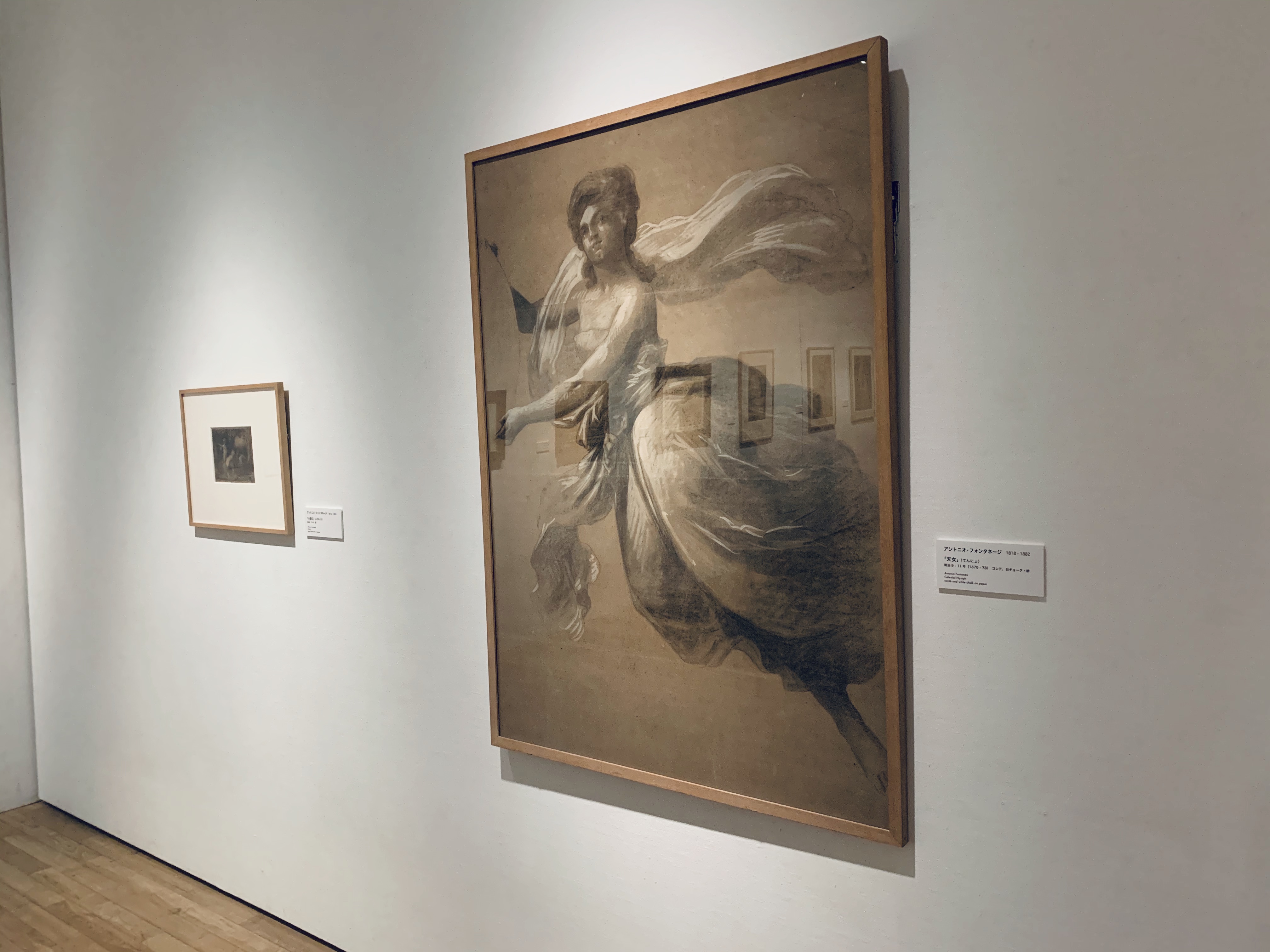
In the middle of the first part, there was an area where drawings related to the Technical Fine Arts School, which is positioned as the predecessor of the predecessor of Tokyo University of the Arts, were collected.
Antonio Fontanesi , an Italian painter invited as a teacher, drew small drawings such as architecture and landscape paintings for teaching materials, and among them, a huge drawing called “Tennin” that stands out. A realistic woman with a mysterious expression that looks like she is smiling, thinking, and thinking.
This is not a teaching material, but a story that “the new palace of the imperial family, which was planned to be built at that time, was drawn as a conceptual sketch for use in the mural painting.” Unfortunately, the plan seems to have failed, but it stimulated my imagination how beautiful the “Tennin” would have been if it had been built.
There are also works exhibited at the Paris Expo, which all the schools participated in!

Going further into the exhibition room, in the area at the end of Part 1,
・ Works exhibited at the 1900 World’s Fair in Paris, in which many teachers from beautiful schools participated.
・ In the 1930s, after receiving high praise at the so-called “public exhibition” represented by the Ministry of Education art exhibition, the work was purchased by the government and transferred to a beauty school.
I was able to appreciate it.
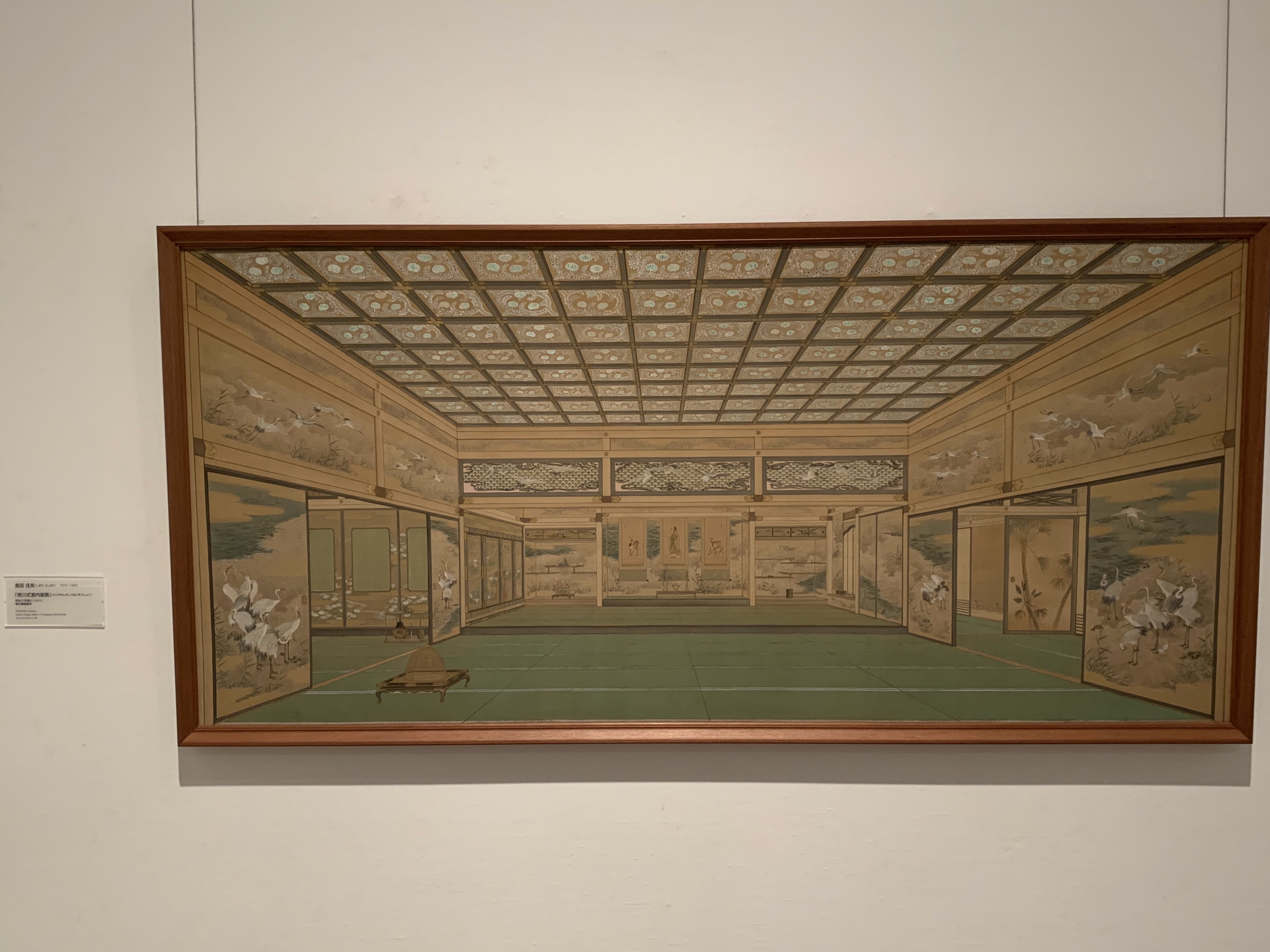
Among the works exhibited at the Paris Expo is Yoshiaki Shimada’s “Tokugawa-style interior decoration” .
The interior space of the fantasy castle is depicted in detail in the style of the Edo period, but how to decorate crafts, how to hang a hanging shaft, the existence of bran, a designed family crest, a crane as a congratulatory motif … … It seems that the design proposal was made to introduce such things to people overseas who were becoming more interested in Japanese interior decoration.
To the last, it was conservative, but the charm of each prop and decoration was drawn in a very detailed and attractive manner, and I was impressed.
It is said that these exhibited works are very important as a record of how Japan responded to the Expo, which was one of the most important cultural phenomena in the 19th century.


Uemura Shoen’s “Introduction Dance” , which is an important cultural property, and Kano Hogai’s “Sorrowful Mother Kannon”, which was specially exhibited, were also displayed in this area. Both are quite large and truly powerful.
As for “Sorrowful Mother Kannon,” which can be said to be the treasure of the University of the Arts Museum, it is said that many people visit the “Tokyo University of the Arts Collection Exhibition” just to see it. I visited there in the morning on weekdays, so I was fortunate enough to be able to appreciate it in front of my eyes.
Introducing the contents and exhibited works of Part 2 “Adventures over self-portraits”

If you turn to the other exhibition room on the opposite side of the exhibition room of Part 1, you will see the exhibition of Part 2 “Adventures over self-portraits”.
If the first part is school and teacher records, the second part is student records.
In the Western painting department, self-portrait production is traditionally included in the curriculum, and even now all graduates are supposed to pay self-portraits to school. Here, the self-portrait and the work purchased as a graduation work are displayed.

Not only in Japan, but also in overseas art schools, there is probably no school that always pays self-portraits, and it is a culture unique to art schools and Tokyo University of the Arts. It’s a little interesting story, isn’t it?
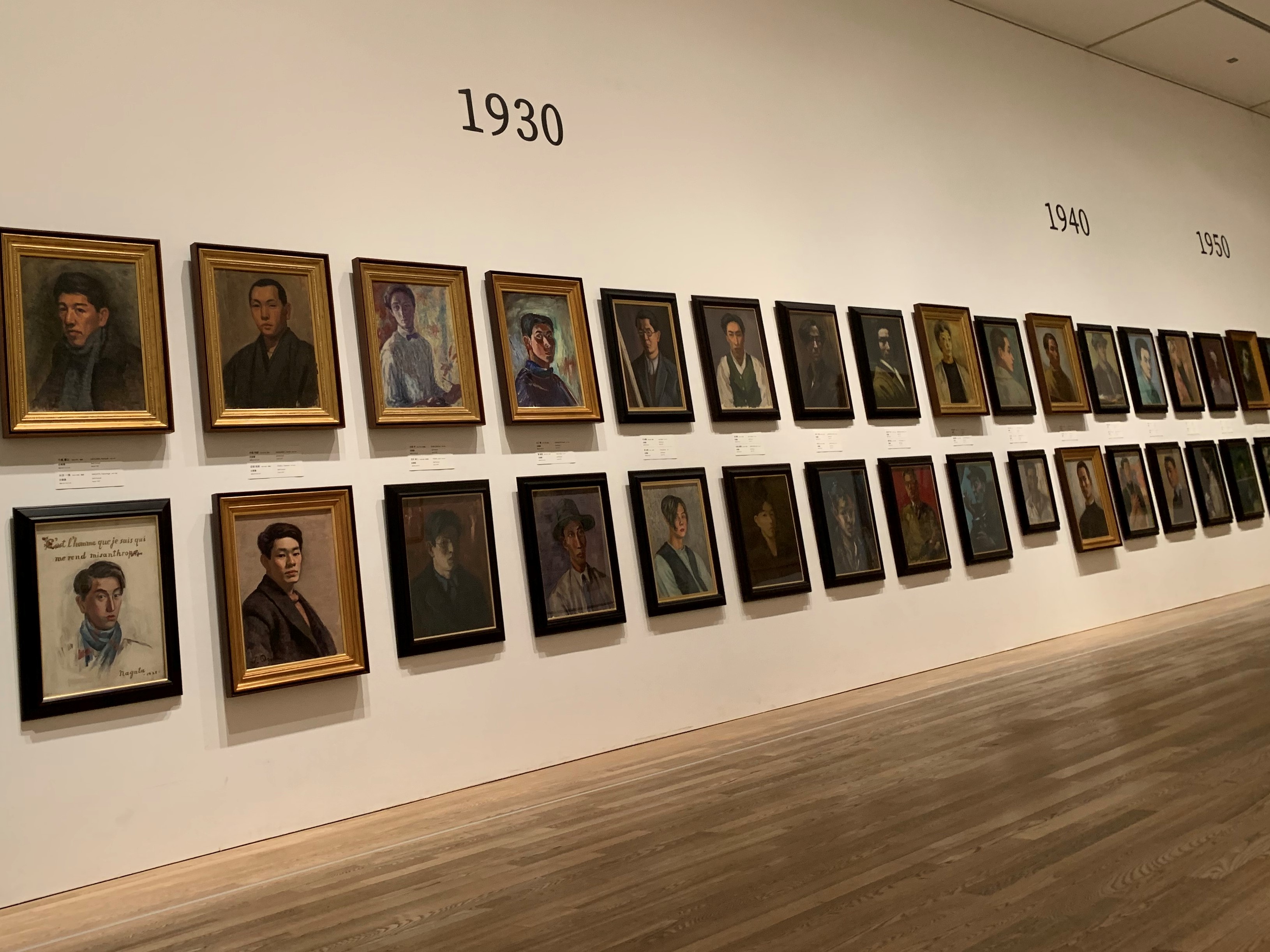
It was too spectacular to see more than 100 self-portraits decorating the exhibition room …!
Shigeru Aoki, Tetsugoro Mantetsu, Tsujiharu Fujita, Yuzo Saeki, Junji Yoshii, Toshio Nakanishi, and other people who have made a name for themselves in the history of modern Japanese art are gathered together in their youth. Isn’t it just a coveted sight for fans?
It is decorated according to age, but in the Meiji era, there were many people who wore kimono and who were dignified. However, after the Taisho era and entering the Showa era, there are people who have strong personality, such as not wearing clothes or writing facial parts. During the war, there was an “era” that could be seen by arranging them side by side, with a heavy atmosphere.
When drawing a self-portrait, he often puts not only his own figure but also his favorite things and props that convey his character.
So, I wonder if this person liked Gauguin when he was a student, or maybe he liked the ukiyo-e drawn behind him … Imagine each person’s background and hobbies, and there are new discoveries. maybe.

What I liked the most was the self-portrait of Ding Itakura . While there were many self-portraits with dark and calm colors, the white skin and canvas were dazzling, and I was healed by the soft brush strokes and gentle appearance.

In the exhibition of the graduation work, 11 items such as Yokoyama Taikan’s “Murado Kansaruoh” and Wada Eisaku’s “Watashi no Yugure” were lined up.
“Murado Kansaru-Oh” is a wonderful work that is different from the later years, and I think that it is a landscape where children are playing with a smile, but the expression is strange and a little scary. “Yugure of Watanabe” is realistic, but the colors of the sky and the river are fantastic and drawn in like a dream.
I’m sorry that there is no image, but what was interesting was the multiple design drawings of Yoji Kanazawa’s “Utopia Club” . It is said that it is a picture of a fantasy plan to create a leisure facility for each island, but the design is still very novel even now, and the strangeness that puts the curve as the main is addictive. It’s not flashy, but it has a cute atmosphere that makes you want to decorate the walls of your house.
Please pay attention when you visit.
At the end
The venue was only the exhibition room on the 2nd basement floor of the University of the Arts Museum, so it was a relatively small exhibition, but I was satisfied that the general admission fee of 440 yen was too cheap.
By the way, recently, the number of exhibitions that require advance reservations to prevent infection with the new coronavirus is increasing, but you can drop in at this exhibition when you think of it.
The “Tokyo University of the Arts Collection Exhibition” is held once or twice a year. It seems that some famous works are on display, but the number of collections is over 30,000. There must be a work that will be released for the first time this time, and a work that will not appear for decades if this time is missed.
It will be held until October 25th (Sun), so please do not miss this opportunity.
Outline of “Tokyo University of the Arts Collection Exhibition 2020-Chronicle of the Arts”
Date: September 26th (Sat) -October 25th (Sun), 2020
Hours: 10 am-5pm (admission until 4:30 pm)
* This exhibition does not require advance reservations, but you may have to wait for admission depending on the congestion situation to prevent the spread of the new coronavirus infection.
Closed: Monday
Venue: Tokyo University of the Arts, University Art Museum, Main Building, Exhibition Rooms 1, 2
Admission fee: General 440 yen (330 yen), university students 110 yen (60 yen), high school students and younger and under 18 years old are free
* () Is a group fee for 20 or more people * One leader is free for every 20 group viewers * Free for those who have a disability certificate (including one caregiver)
Organizer: Tokyo University of the Arts
[Tokyo Metropolitan Art Museum] Special exhibition “70 years after death Hiroshi Yoshida exhibition” will be held!
Hiroshi Yoshida, a painter who fascinated the world. Introducing woodblock prints that delicately depict famous peaks and Japanese landscapes!
The Tokyo Metropolitan Art Museum (Ueno Park, Tokyo) will hold the “70 Years After Death Hiroshi Yoshida Exhibition” from January 26th (Tuesday) to March 28th (Sunday), 2021.

Born in Kurume City, Fukuoka Prefecture, Hiroshi Yoshida (1876-1950) worked on Western-style painting from a young age and established his own expression and technique while experiencing East and West art through many overseas experiences.
Yoshida, who demonstrated his talent as a painter, will challenge woodblock prints for the first time in the latter half of the painting industry and break new ground. With the view of nature that he learned by entering the Miyama Yuya and the high technology that surprised Western experts, he delicately portrayed the flow of water and the transition of light.
This exhibition, which will be held at the 70th anniversary of the painter’s death, will bring together representative woodblock prints from the earliest days, as well as display woodblock prints and sketchbooks. Introducing the whole picture of Hiroshi Yoshida’s woodblock prints, which aimed at integrating print techniques. Please take this opportunity to enjoy the work of Hiroshi Yoshida, a painter who challenged the world and was loved by Princess Diana and Freud.
[Main exhibited works]


[Overview]
Exhibition name: 70 years after his death Hiroshi Yoshida Exhibition
Yoshida Hiroshi: Commemorating the 70th Anniversary of His Death
Dates: January 26th (Tuesday) -March 28th (Sunday), 2021
Venue: Tokyo Metropolitan Art Museum Special Exhibition Room Closed: Monday Opening Hours: 9: 30-17: 30
Admission fee: Details will be announced on the special website as soon as they are decided.
Organizer: Tokyo Metropolitan Art Museum, Mainichi Newspaper, Nihon Keizai Shimbun Co., Ltd .: New color photo printing special website: https://yoshida-exhn.jp
Inquiries: 03-5777-8600 (Hello dial)
【Tokyo Metropolitan Art Museum】The UKIYO-E 2020-Japan’s Three Great Ukiyo-e Collection Preview Report
Tokyo Metropolitan Art Museum
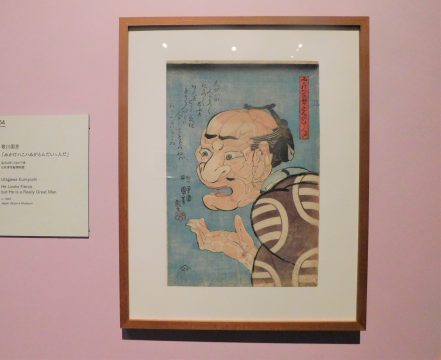
Kuniyoshi Utagawa “Apparent Hakoha ga Todai Ijin” Japanese Ukiyo-e Museum, first half exhibition
From Thursday, July 23, 2020, “The UKIYO-E 2020-Japan’s Three Great Ukiyo-e Collection” is being held at the Tokyo Metropolitan Art Museum (Until September 22 (Tuesday/holiday)) *Works may be replaced in the first and second semesters)
There was a press preview of this exhibition the other day.
In this article, we will introduce the exhibition, highlights, the composition of the exhibition, and the works featured by the editorial department.
See it!
What is “The UKIYO-E 2020-Japan’s Three Great Ukiyo-e Collection”?
The “The UKIYO-E 2020-Japan’s Three Great Ukiyo-e Collections” held at the Tokyo Metropolitan Art Museum is no exaggeration to say that it is Japan’s three major Ukiyo-e collections. The Ota Memorial Museum, the Japanese Ukiyo-e Museum, and the Hiraki Ukiyo-e Foundation The collection of Ukiyo-e masterpieces in the collection will be displayed in the first and second semesters, with approximately 450 selected masterpieces of Ukiyo-e prints.
You can fully enjoy the charm of Ukiyo-e, a genre of art that represents Japan and was loved by the common people of the Edo period.

Five highlights of “The UKIYO-E 2020-Japan’s three major Ukiyo-e collections”
There are five highlights of ” The UKIYO-E 2020- Japan’s Three Great Ukiyo-e Collection.”
(1 ) This is the first exhibition in history that brings together the three major Ukiyo-e collections.
(2) Representative works of about 60 artists who will exhibit the history of Ukiyo-e will be released at once.
③ Of the approximately 450 items exhibited, 100 or more of important cultural properties and art pieces will be exhibited.
④ There are many gems in the collection, such as the only remaining work in the world.
⑤ We will be exhibiting the super famous works Hokusai Katsushika “Thirty-six Views of Tomitake” and Hiroshige Utagawa “Five-three Tokaido Roads” throughout the year.
-
Composition of each chapter and featured works by the editorial department
Chapter 1 Early Ukiyo-e
The early Ukiyo-e prints started with the “Sumizuri-e”, which is a black-and-white plate from the Enpo era (1673-81).
After that, “Tan-e” (tane), which was colored by brushing sumi-suri mainly on red, “red” (red) instead of red, “red-painted” (black), black By mixing glue on the part, a glossy “lacquer picture” was created.
Around the Enkai period (1744-48), plate coloring with red and green color plates was performed, and it was named “Benizuri-e” (Benizurie). Establish
In the first chapter, the works of painters from the early days of Ukiyo-e, Hishikawa Morinobu, Kagetsudo school, Masanobu Okumura, Kiyonobu Torii and Kiyobe are exhibited.
[Editor’s Featured Works]
● Hishikawa Moronobu “Young people and daughters”
This is a work by Morinobu Hishikawa, the founder of Ukiyo-e prints, depicting men and women who nestle by the partition.
The simple line drawn in a frame like arabesque and the yellow and red colors painted on the line draws attention.
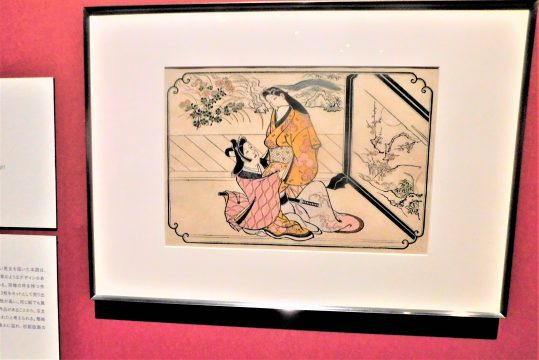
● Kaigetsudo Toshige “Standing Beauty”
This is a work by Kagetsuge Toshige, who is said to have the largest number of prints among the Ketsugetsu school that mainly draws hand-painted drawings.
I draw a full screen of a woman standing in front of a kimono.
The dignified appearance of a woman is truly a standing beauty.
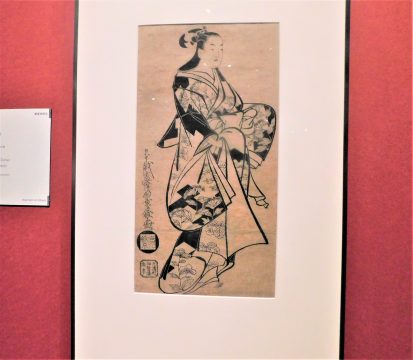
●Toshinobu Okumura “Oshichi and Yoshizo”
It is a work depicting the story of Ochichi and Kichisaburo, who was adapted to Joruri and Kabuki.
It captures the appearance of a greengrocer Oshichi handing a love letter t o Yoshisaburo
It is famous that the second character Sanjo Kantaro played the role of Seven in order to improve Kiyosaburo Arashi, and in subsequent performances, the seventh character came to use Kisaburo Arashi’s standard pattern.
Yoshisaburo of this work can see the crest of the second generation Nanasaburo Nakamura in the costume, but he could not find the Kyogen that Nansaburo played Kisaburo at that time.
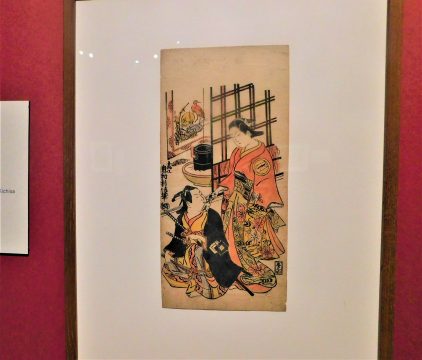
Chapter 2 The birth of Nishiki-e
Around 1765, a multicolored print was born and was called “Azuma Nishikie” in the sense of a beautiful Edo-like painting.
In the second chapter, works by Harunobu Suzuki, Ryusai Isoda, Ippushisai Buncho, and Haruaki Katsukawa, which were most active in the era of Nishiki-e, were exhibited.
[Editor’s Featured Works]
●Harunobu Suzuki “Eight Scenes of the Furyu”
This work is associated with the traditional Chinese landscape painting title, Shosho Hakkei.
It depicts a scene from the story of the “potted tree,” which is associated with eight songs.
It’s just a broom that wipes off the snow on the roof, but its appearance is elegant and has an atmosphere.
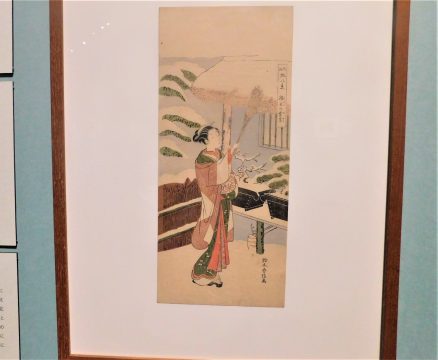
● Haruaki Katsukawa “The first generation Nakamura Nakazo Ota Kotota 3rd generation Koji Otani Chuta Banba”
A scene from Nakamuraza’s “Omezome Soga Hinagata”
It is depicted that two of the first generation Nakamura Nakazo, Kota Omi, and the third generation Koji Otani, Tadashi Banba, make a dark match.
The heat of the actors who perform with a screaming expression is transmitted to the skin.
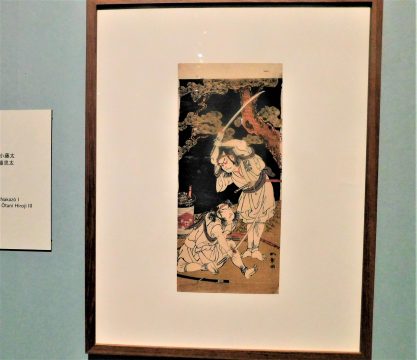
Chapter 3 Development of Bijin-ga and actor paintings
During the Tenmei period (1781 to 89), Kiyocho Torii created a graceful and tall beauty painting style and produced many group images.
During the Kansei period (1780-1801), Kitagawa Utamaro drew women of various levels.
Tohsusai Sharaku is a painter who has suddenly disappeared within just one year from May 1794 (Kansei 6), but is internationally acclaimed.
In the third chapter, works by Kiyocho Torii, Utamaro Kitagawa, Sharaku Tosusai and Toyokuni Utagawa are exhibited.
[Editor’s Featured Works]
● Kiyonaga Torii “Yusuzumi Okawabata”
This work depicts women who enjoy the cool breeze at the riverside.
This is the first exhibition in 40 years.
Summer in Edo begins at the river opening on May 28th.
What do you see in front of the sight of enjoying the summer with a teahouse girl with a tea cup on the left, a woman with a fan in the center, and women with one foot on the right?
*The downstream of the Sumida River was known as Okawa at that time.
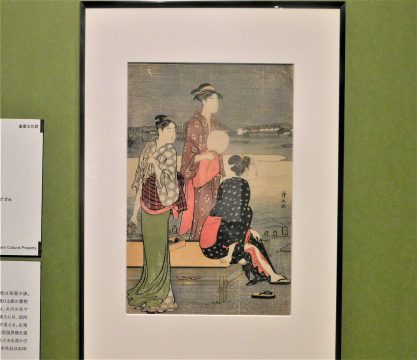
●Utamaro Kitagawa “Five beautiful women love and respect competition Matsubaya Kisegawa”
The Five-Person Beauty Love Race is a collection of all five figures depicting a beautiful woman who is famous in Edo.
You will be fascinated by the beautiful Edo beauty who is well-established.
The suppleness of the fingers of a woman with her hand on her chin is also impressive.

● Tosusai Sharaku “Hangoro Sakata’s third generation Mizuemon Fujikawa”
This is one of the series in which the third generation Sakata Hangoro played the role of the thirteenth anniversary of sacrifice and the third generation Sakata Hangoro played Fujikawa Mizuemon.
The mouth of Fujikawa Mizuemon, the eyes that open up, and the arms with raised blood vessels are exactly the appearance of the enemy.
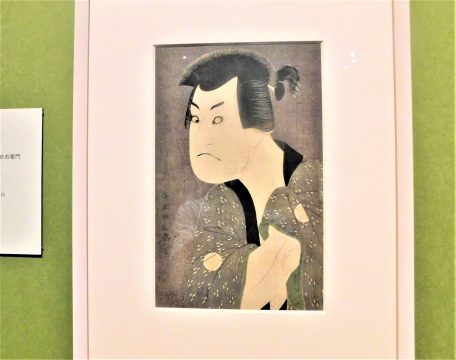
● Toyokuni Utagawa “Konoshita Tokichi of the third generation Ichikawa Yaozo”
This is a work that is said to have been portrayed by Tokichi Konoshita in the “Kaien Festival Religion” written by Yazo Ichikawa, the third generation, in 1796.
The Kien Festival Religion is a story of Tokichi Konoshita’s success in confronting the villain Daizen Matsunaga.
The eye power of Yaozo Ichikawa, the third generation of this painting, is overwhelming.
From that eye, you can feel an unusual will
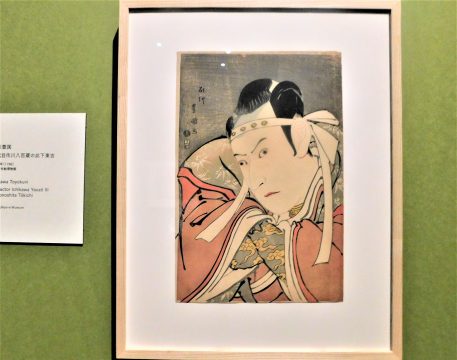
Chapter 4 Diversifying expressions
When entering the culture and Bunsei period (1804-30), Nishiki-e, which had a rough atmosphere, became more detailed and the amount of information drawn on the screen increased.
In the fourth chapter, the works of Kunikawa Utagawa Kunisada (later named Utagawa Toyokuni) and other works by Hideki Kikukawa are exhibited.
[Editor’s Featured Works]
● Eizan Kikukawa “Higashi Sugata Genji Koyoga”
In one of the assortment comprising a combination of the bust of Genji Karuta and women, it is a work depicting a daughter to read the booklet in the light of the row lights.
I was impressed by the serious expression of a woman who leaned her head and read the booklet diligently to illuminate the page.
It feels like the red of the book, the barrette and the red of the kimono are in harmony.

●Kunisada Utagawa “Komo Oil Painting, Eitai Bridge”
It is a collection of landscape paintings drawn in Western style, and among the known ones, there are five figures, “Komo oil painting style” and “Komo oil painting famous spot”, respectively, totaling 10 figures.
This work features Nagadaibashi, the fourth bridge built in the Sumida River.
A houseboat is gracefully crossing the Eidai Bridge.
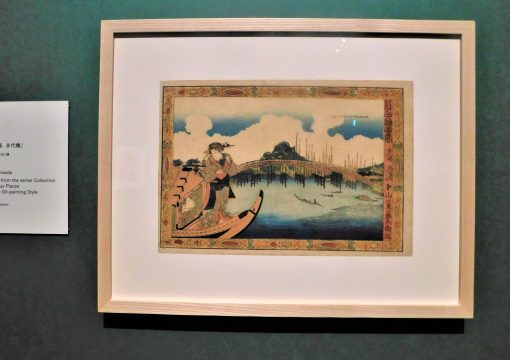
Chapter 5 World of Nature and Storytelling
Around the early Tenpo period (183-33), the “Thirty-six Views of Tomitake” series, which includes “Ukiyoe prints” by Katsushika Hokusai and “Kamikawa Oki Nanura”, will be published.
In the 4th to 5th years of the Tempo (1833-34), Hiroshige Utagawa’s masterpiece, Tokaido Gotoku Miyoshinouchi, was also produced.
In Chapter 5, works by Hokusai Katsushika, Hiroshige Utagawa, and Kuniyoshi Utagawa are exhibited.
[Editor’s Featured Works]
●Hokusai Katsushika “Thirty-six Views of Mt. Fuji Gaifukaisei”
Tomi bamboo thirty Rokukei is, by changing the location overlooking the Japan of the name Peak Fuji, is painted works.
Fuji in this work is said to have captured the northern side of Fuji from near Lake Kawaguchi.
A total of 46 figures have been produced, and the image of Hokusai Fuji will be spread throughout the world.
My heart quivers as red Mt. Fuji penetrates the sardines and rises.
You will want to see all 46 figures and compare.
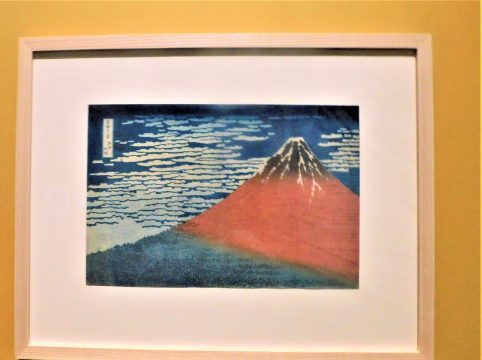
● Hiroshige Utagawa “Tokaido Gojyusantugi Mitsunouchi Hakone Lake Map”
Tokaido Gotoku Sanninouchi is a collection of masterpieces by Utagawa Hiroshige.
Consisting of 55 figures, the scenery of the journey is depicted lyrically, and the scene that changes with the season, time, and weather is expressed with a sense of reality.
This work depicts Hakone-juku, which was located between Odawara-juku and Mishima-juku, and the steep mountain path was one of the difficult points on the Tokaido.
The colors of the yellow, brown and blue mountains are colorful.
If you look at the Daimyo procession covered with a shade as you walk in the foreground, you can see the steep mountain path.
Would you like to see Mt. Fuji in the distance and rest a little?
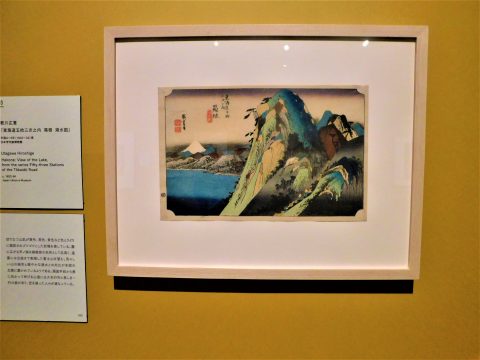
●Kuniyoshi Utagawa “It looks scary but nice”
It’s a puzzle-like caricature that gathers many humans and forms the half-length figure of one human.
I laugh at the faces and postures of each person.
The gap between the scary face and the facial expressions of the body parts is interesting.
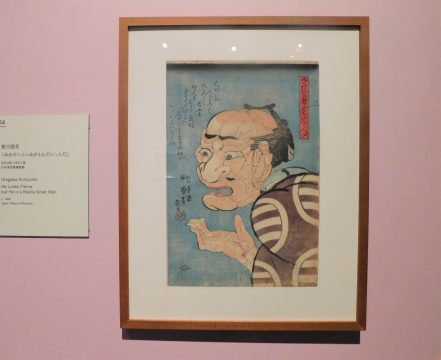
Summary
We have introduced “The UKIYO-E 2020-The Three Ukiyo-e Collection in Japan”.
This is the first exhibition in history where the three major Ukiyo-e collections in Japan are trampled.
From the first chapter to the fifth chapter, the exhibition has a volume of 455 works drawn by about 60 artists in the first and second semesters.
If you are interested, please visit the Tokyo Metropolitan Art Museum, as you will rarely have the chance to appreciate the wonderful Ukiyo-e.
There are a lot of points, so you may want to look at the work of the artist you are looking for first, and then carefully look at the other works.
* At the venue, as a measure against the new coronavirus, we ask for temperature measurement and disinfection of fingers.
Thoroughly disinfect your hands, wear a mask, and keep your social distance to avoid crowds.
-
Event outline
Exhibition name: The UKIYO-E 2020-Japan’s three largest ukiyo-e collections
■Period: July 23, 2020 (Thurs./holiday) to September 22, 2020 (Tue./holiday)
First semester: Thursday, July 23rd to Sunday, August 23rd Second semester: Tuesday, August 25th to Tuesday, September 22nd
(*All works will be switched in the first and second semesters *Admission system with specified date and time)
■ Venue: Tokyo Metropolitan Art Museum Exhibition Room
■Opening hours:9:30-17 :30
■Closed days: Monday 17th August, Monday 24th August, Monday 7th September, Monday 14th September
■ Viewing fee:
*This exhibition has a designated date and time. For details, visit the official website of the exhibition ( https://ukiyoe2020.exhn.jp)
*Free for junior high school students and younger, and those with a physical disability certificate, love certificate, nursing certificate, mental illness health welfare certificate, and A-bomb survivor’s health certificate and their accompanying person (up to 1 person) Free application is required)
*Please bring proof of all
■ Exhibition official website: ( https://ukiyoe2020.exhn.jp)
The souls of the free artists approach the heart. 【The University Art Museum, Tokyo University of the Arts】”Art as it is-people who continue to express without knowing-” preview report
The University Art Museum, Tokyo University of the Arts
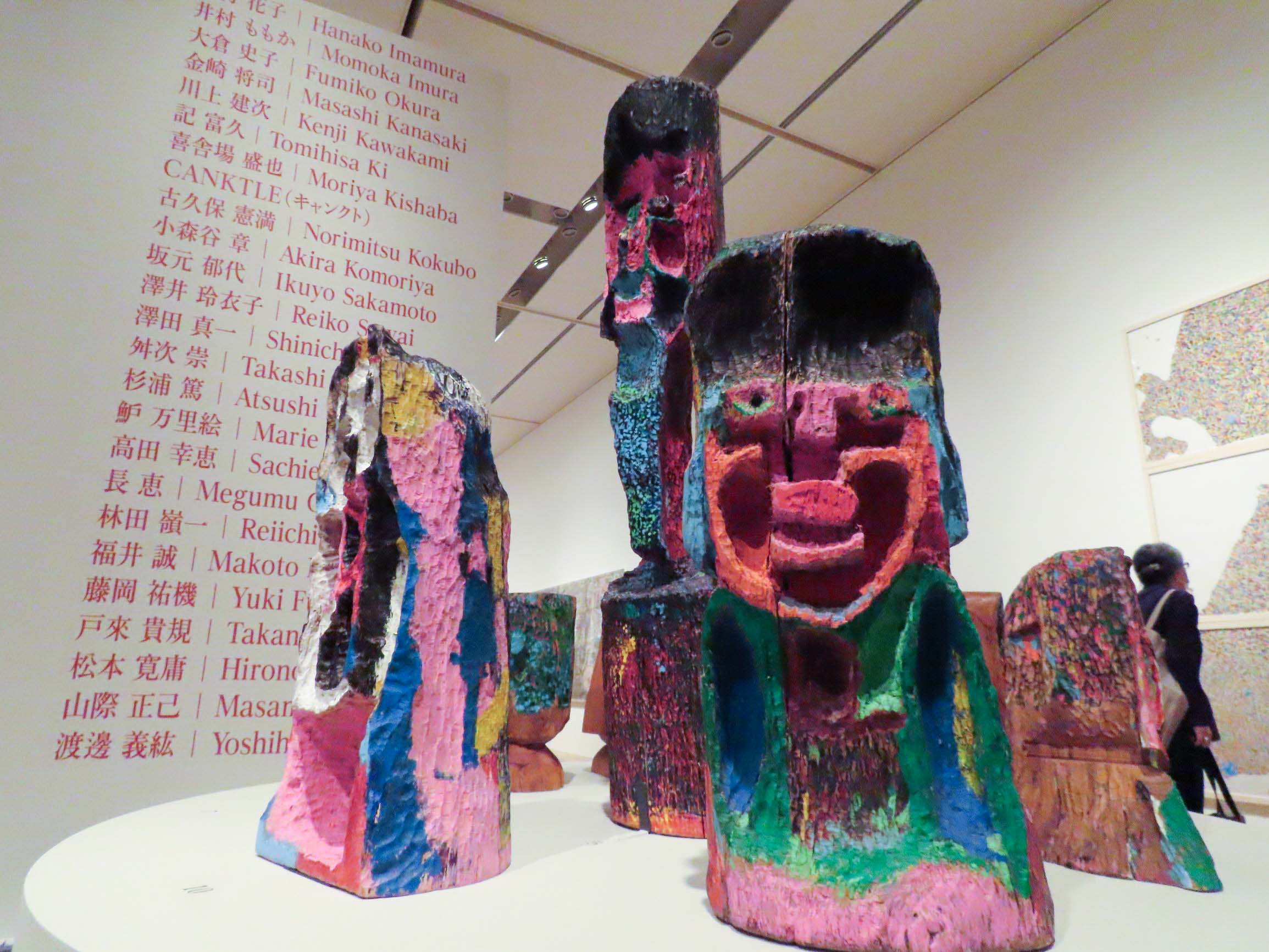
From Thursday, July 23, 2020 to Sunday, September 6, 2020, a special exhibition “Art as it is- people who continue to express without knowledge” is being held at the Museum of Art, Tokyo University of the Arts. The other day, a media preview was held, so I will tell you about it.
“Arugama” works full of humanity
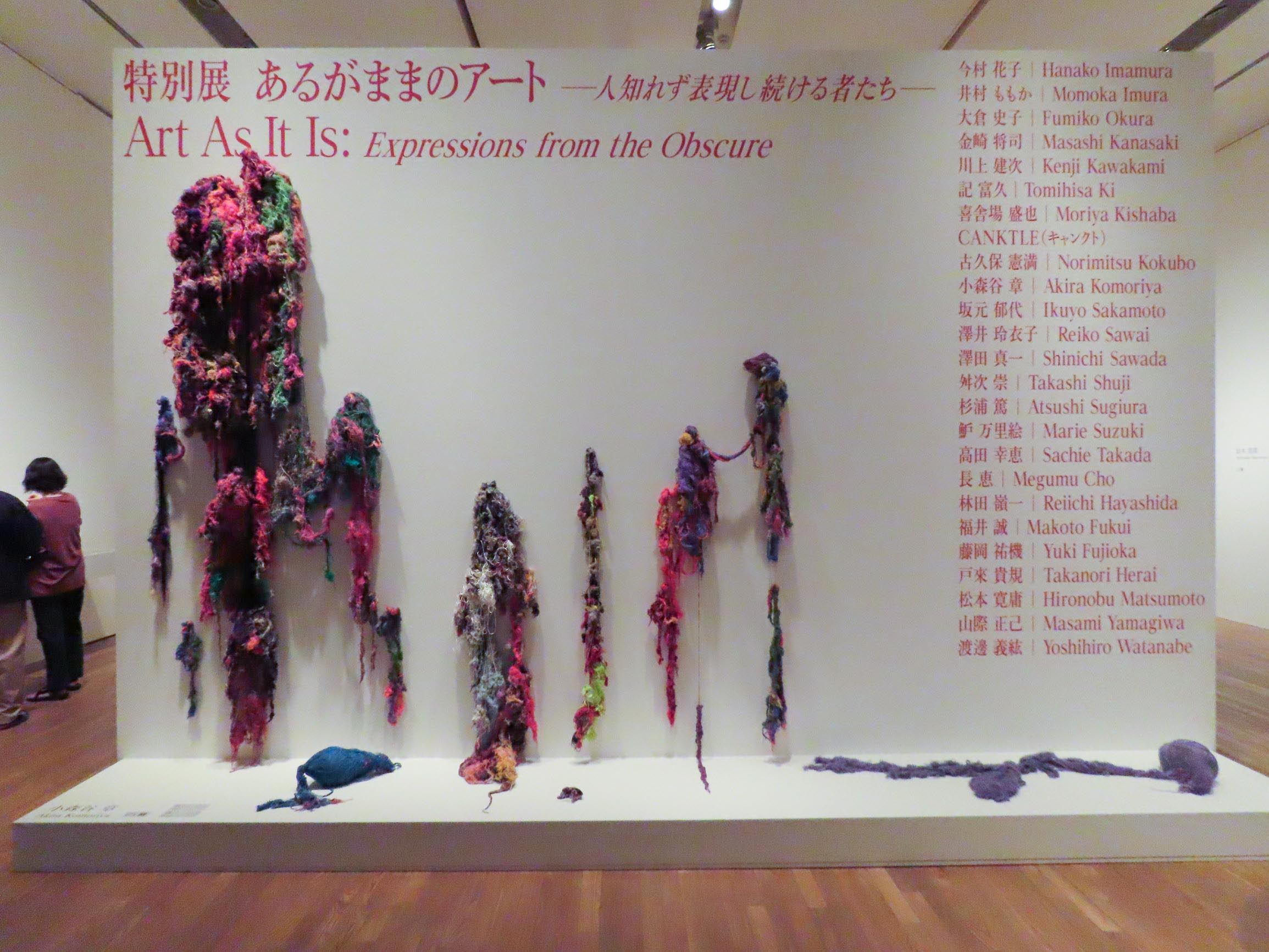
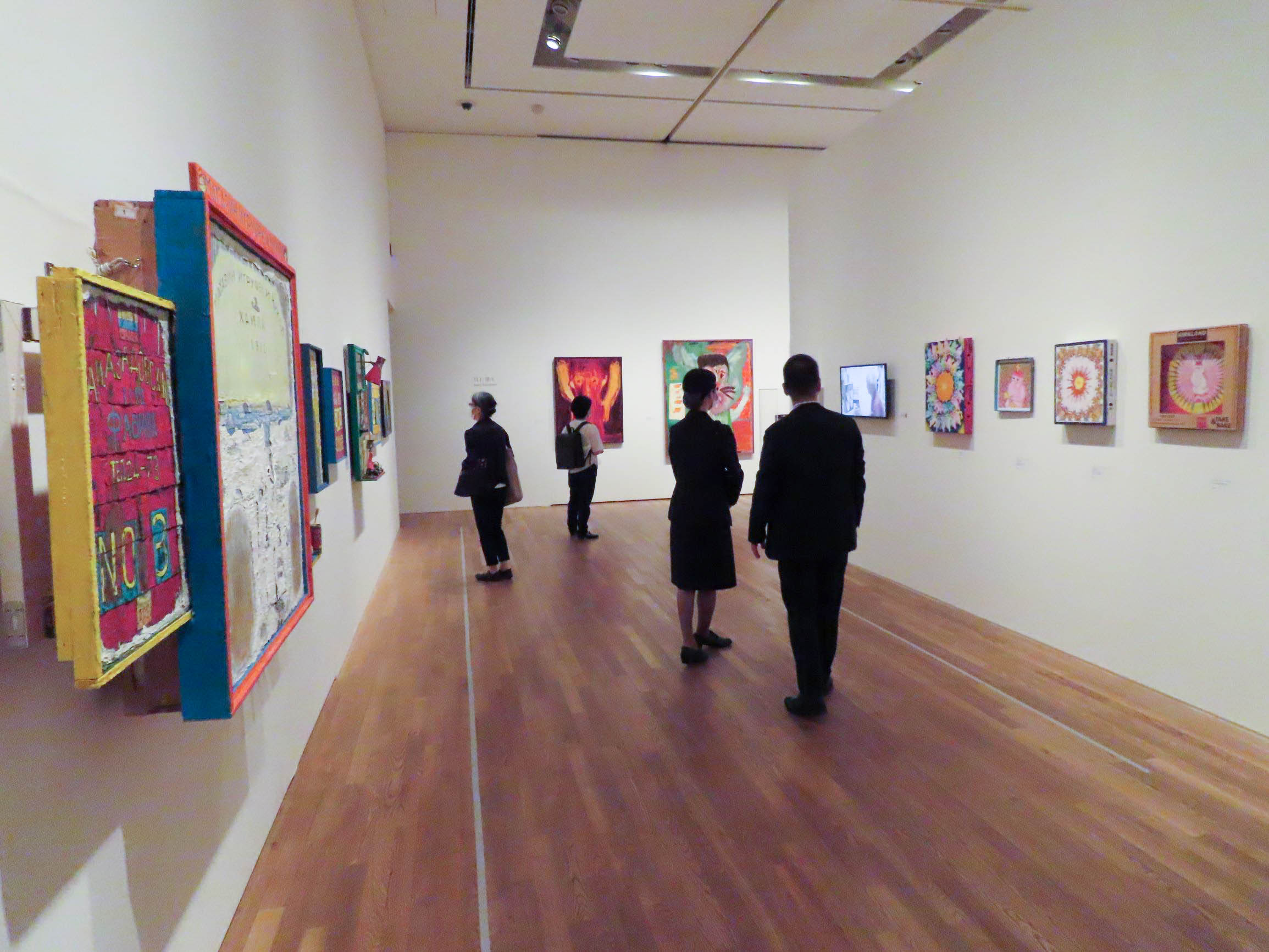
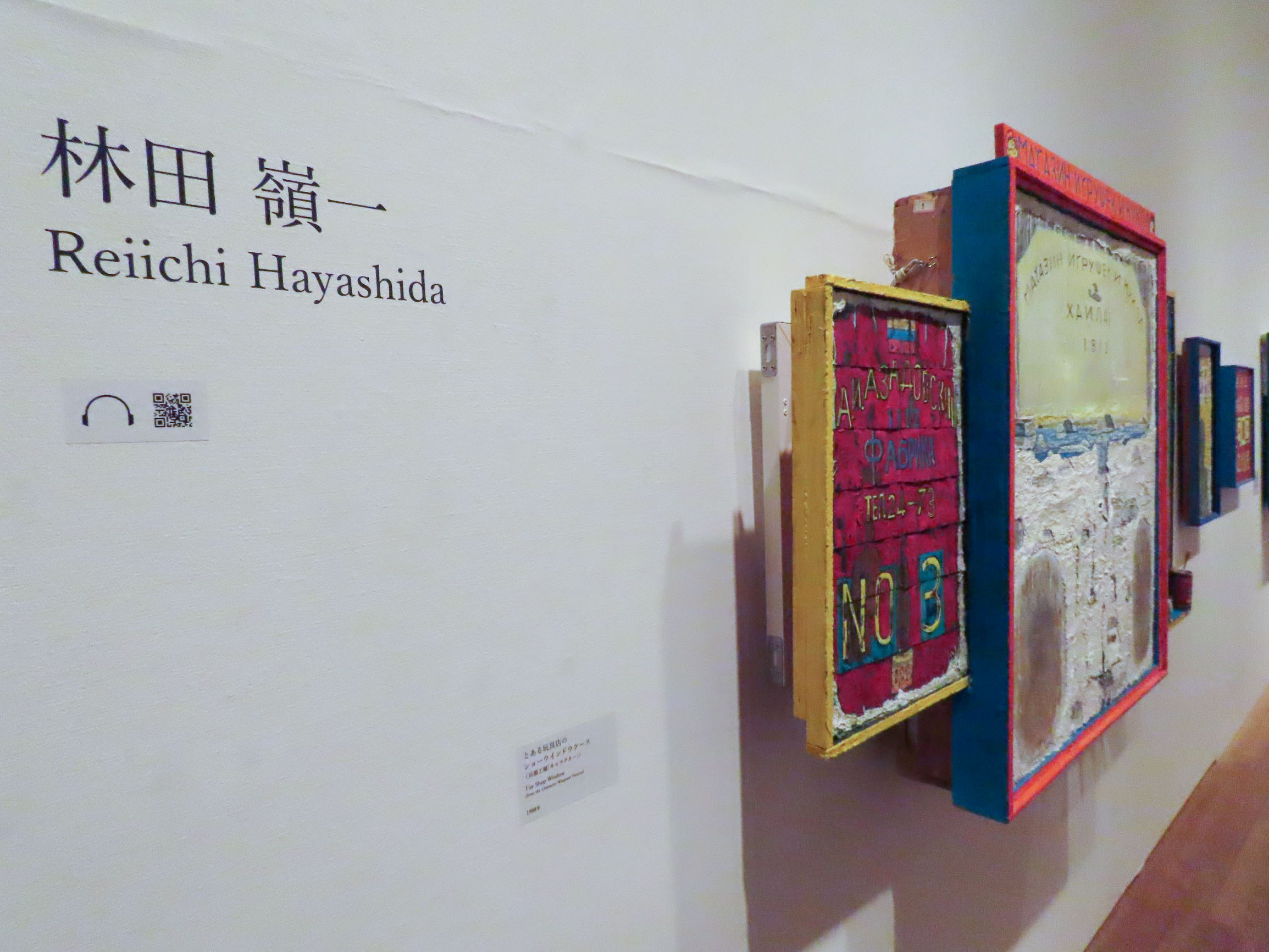
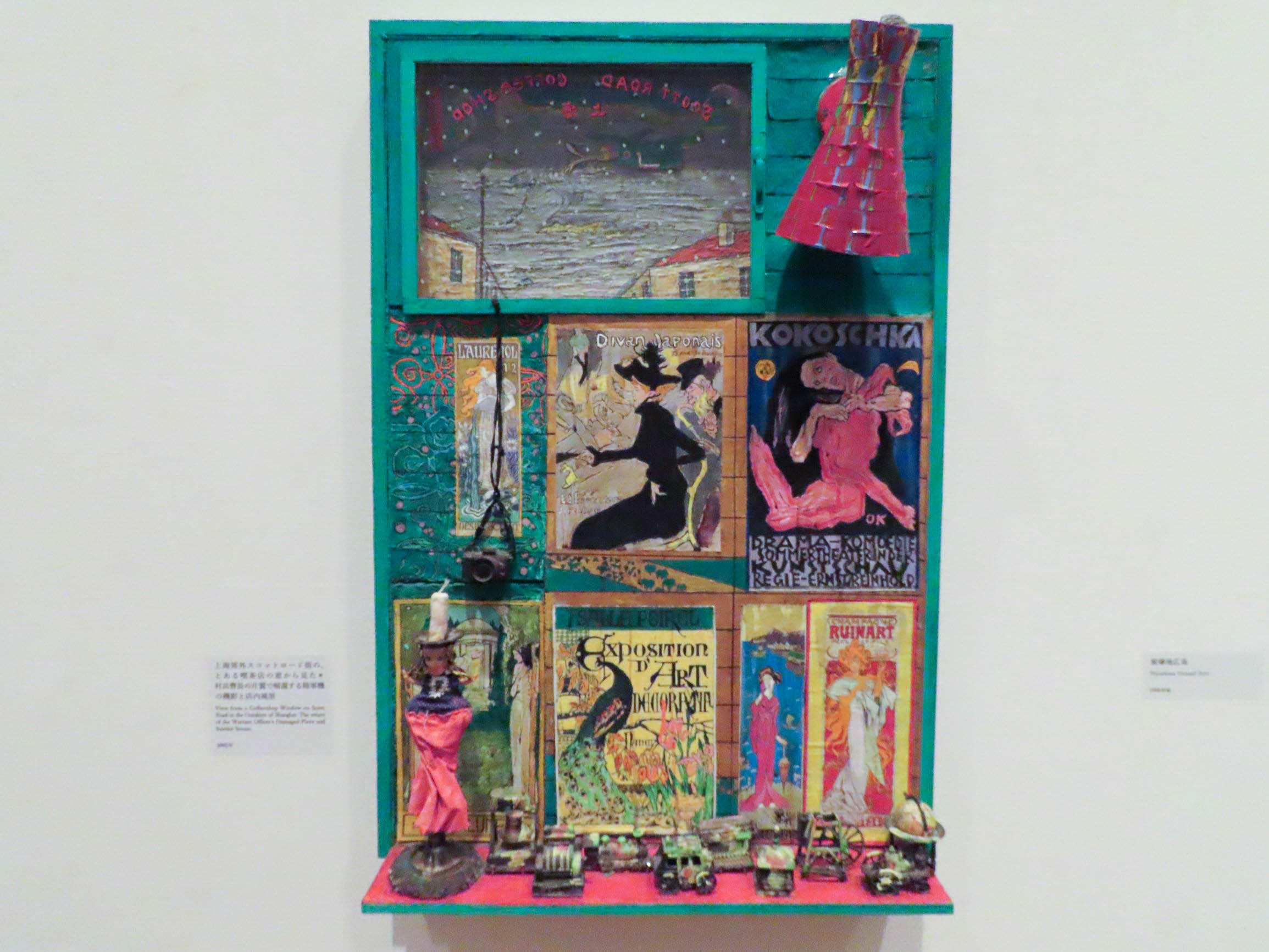
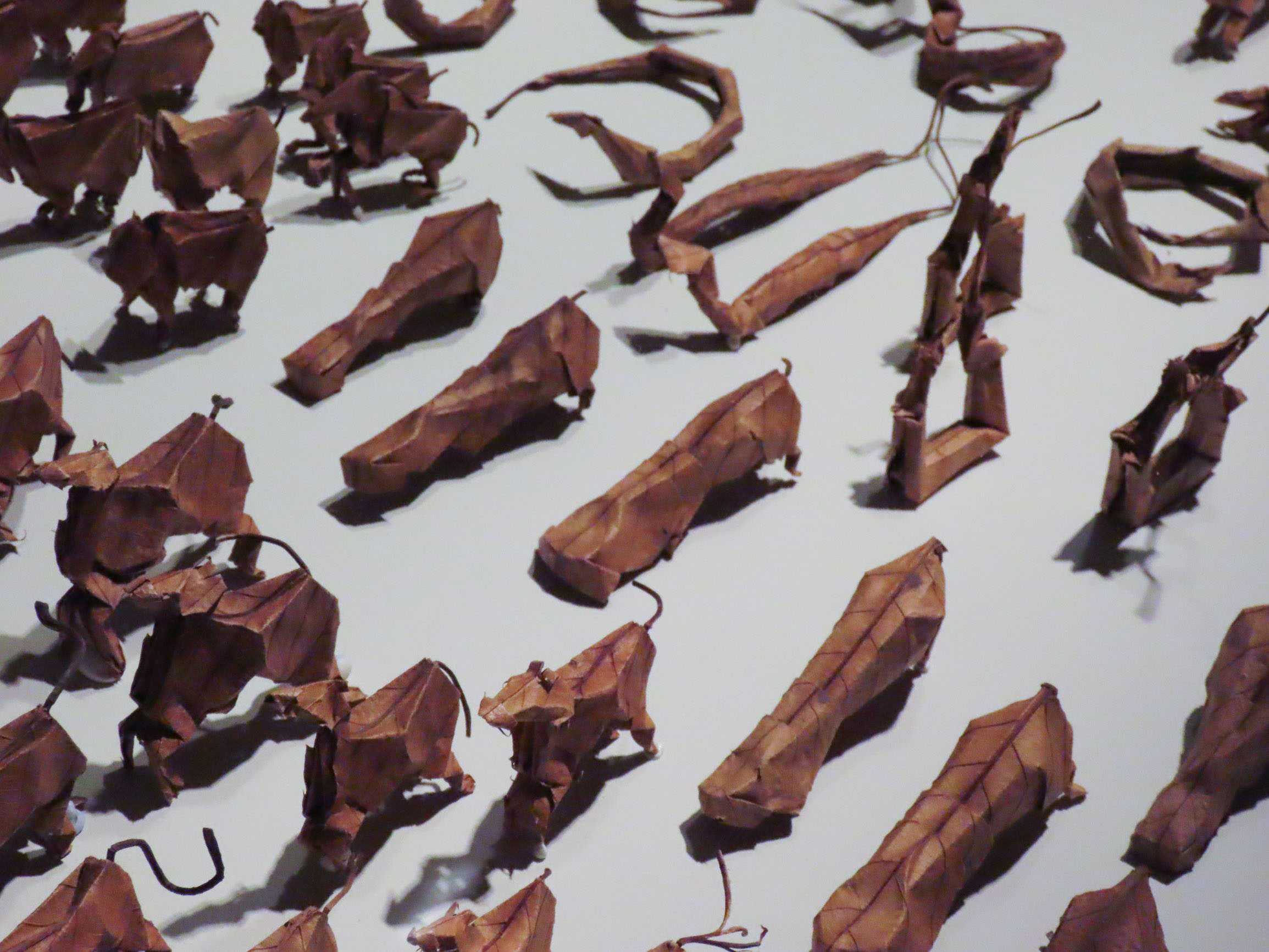

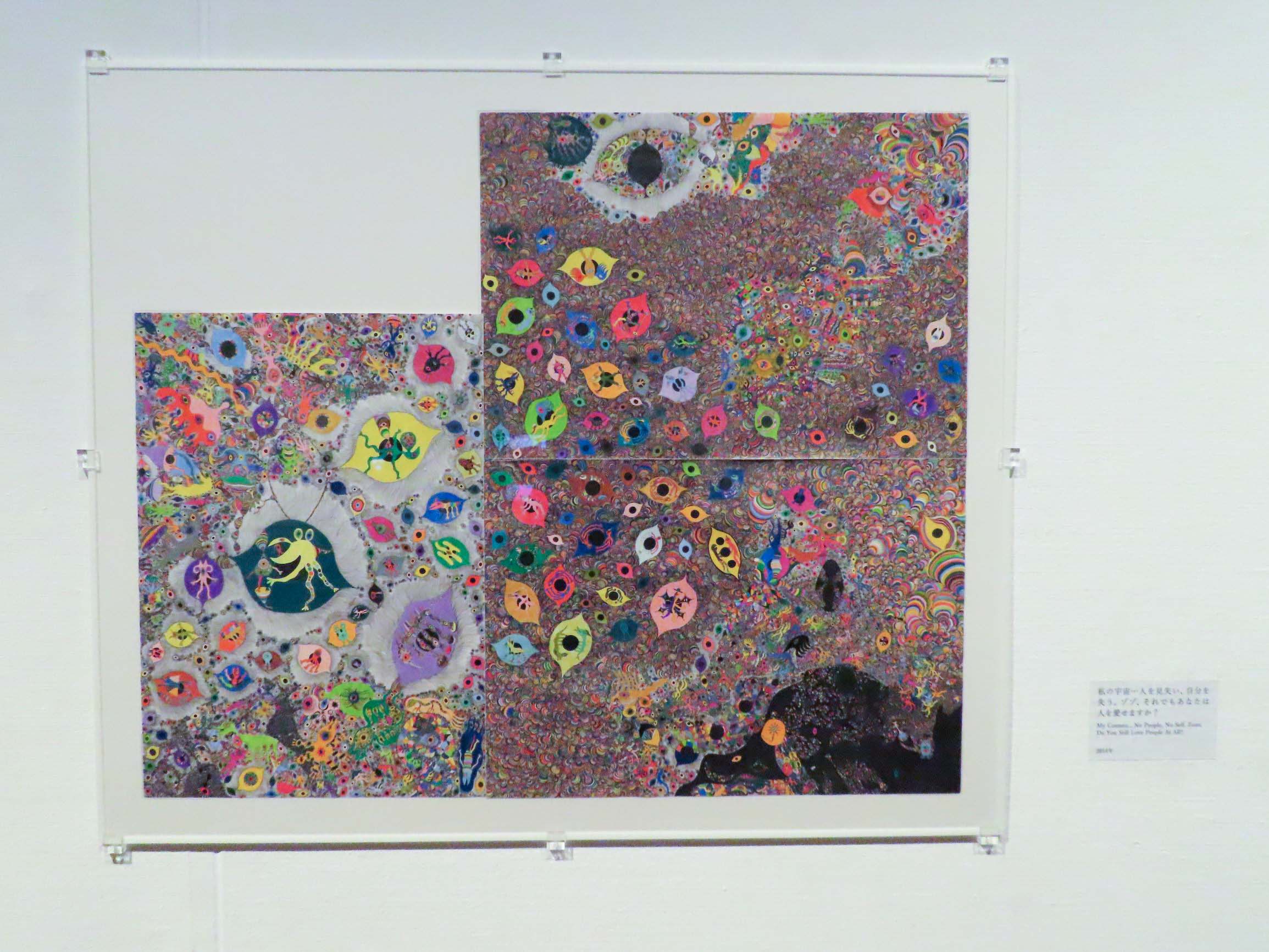
It is not the so-called “professional” works that are exhibited in the special exhibition “Art as it is- people who continue to express without knowing it”.
Collected here are works of artists, who are known as “outsider art” from the world, regardless of existing arts, education, and disabilities, and who continue to pursue their own unique world. The activities of these so-called “self-study” artists have had a great impact on the art world in the early 20th century, and even today, their value and importance are emphasized and widely accepted by society.
In this exhibition, in collaboration with the documentary program “no art, no life” being broadcast on NHK/E-Television, the world of “Aru ga Mama” art, which continues to attract worldwide attention, has recently attracted attention both in Japan and overseas Introducing about 200 works by 25 artists.
First attempt at the exhibition! “Watch robot” online
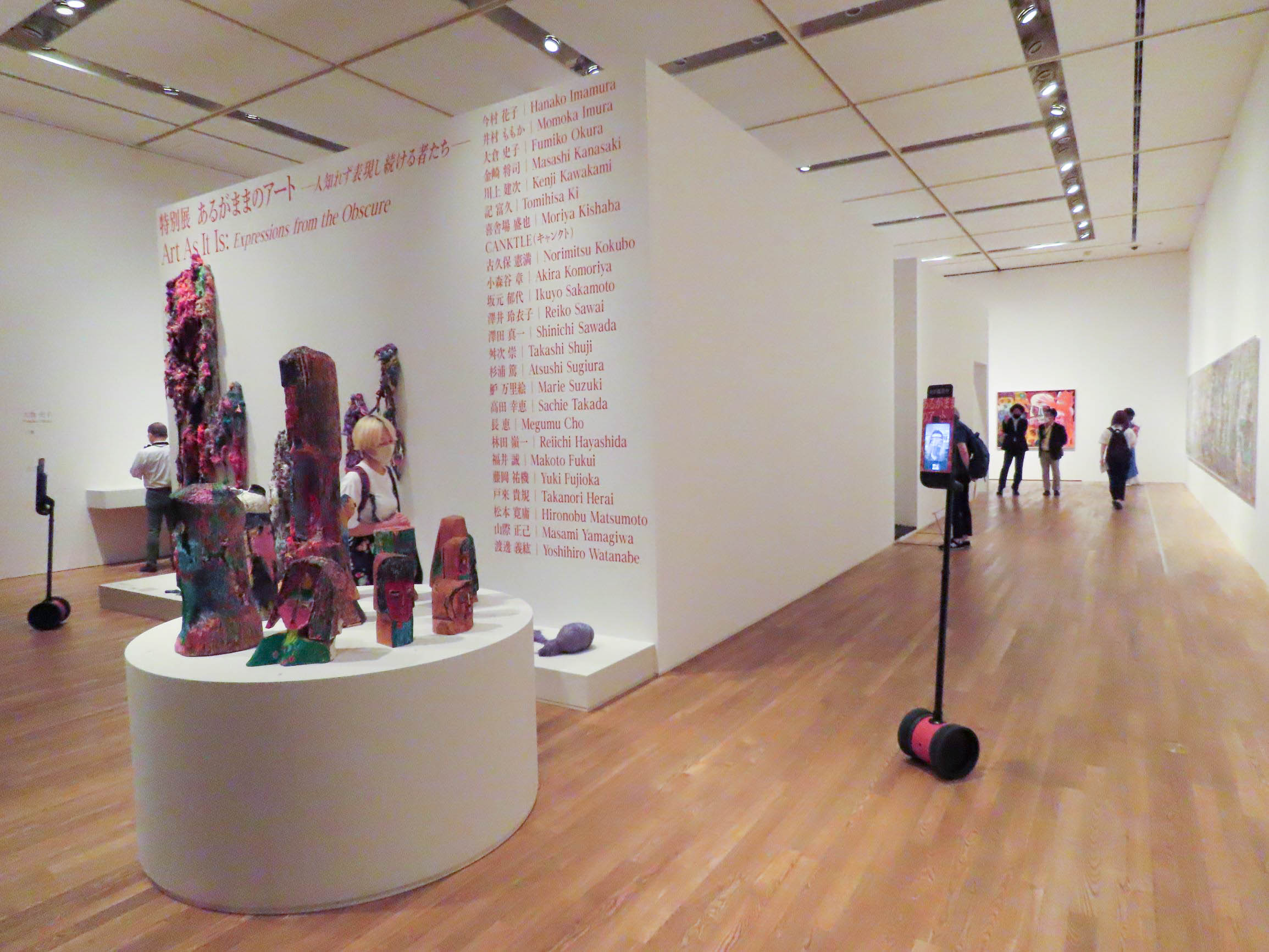
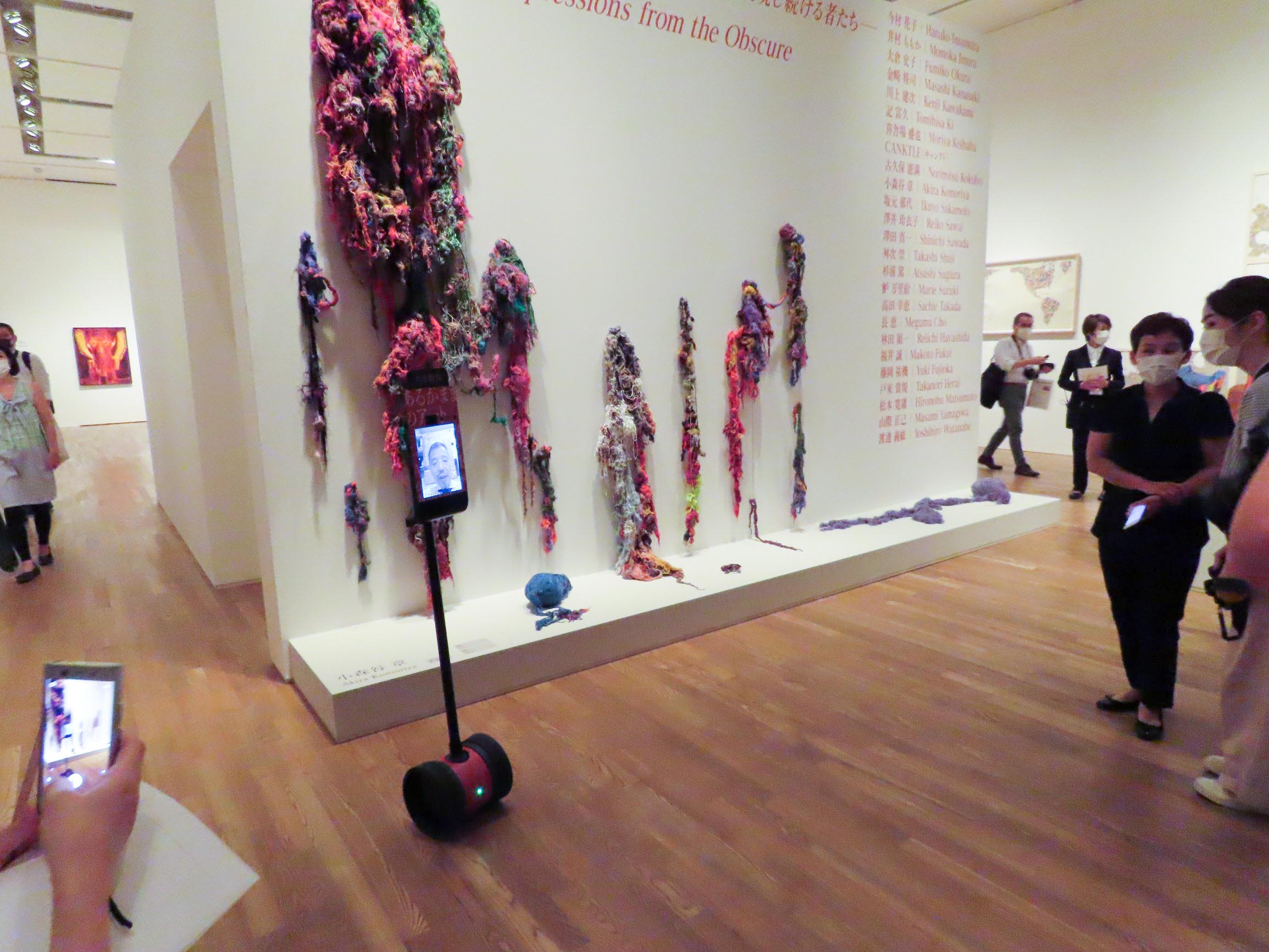
It’s a “first in Japan” trial. In this exhibition, as an original project of Tokyo University of the Arts and NHK, an online robot appreciation meeting is realized by utilizing an autonomous driving robot that can be remotely controlled via the Internet. At the preview, the exhibition was performed, and the works exhibited by the “robot director” were also explained.
The robot uses a 3D sensor to grasp the surrounding environment and find the optimal route to reach the destination. You can also freely communicate with visitors through the monitor. When I saw the visitors and the robots walking side by side and enjoying the atmosphere, I was deeply moved by saying, “Oh, a new era has arrived…”.
It seems that the Robo appreciation party is a reservation system, so you can watch it on the day by registering by selecting the desired date and time in advance and accessing the delivered URL. For details, please see the special content site .
Exhibitor introduction
Marie Suzuki (Marie Suzuki)



Marie Suzuki said he developed schizophrenia in high school. Currently, while going to a local company and local activity support center, he continues to draw.
Plump female body, scissors, genitals… These motifs appear repeatedly in her paintings, creating a “magical” view of the world. In particular, scissors are a motif that “calms down when you draw.”
At the beginning, it seems that it was an illustration style like a leaflet or poster, but gradually it seems that he began to draw pictures that expose himself inside using simple tools such as magic and paper. ..
Norimitsu Kokubo

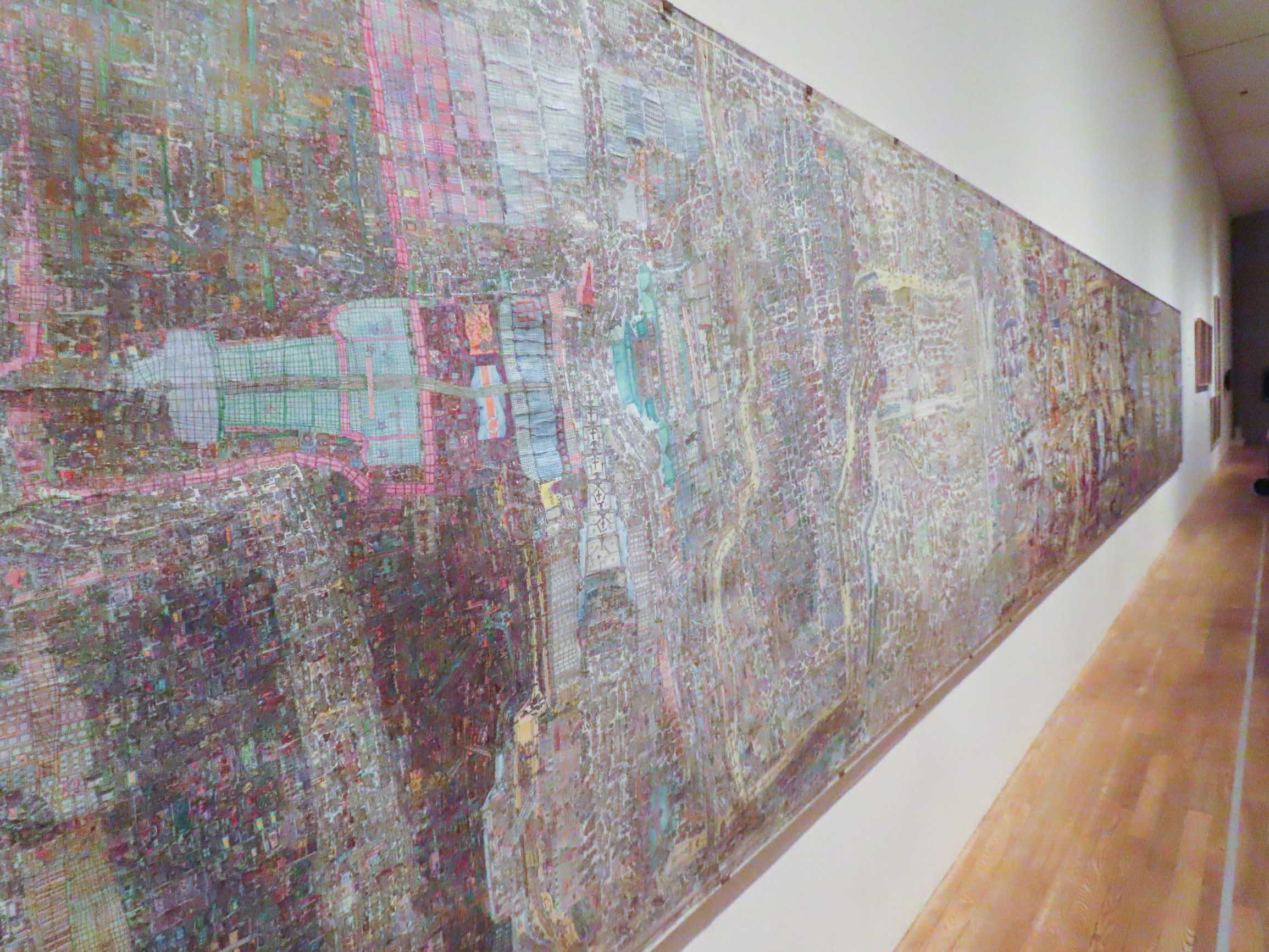
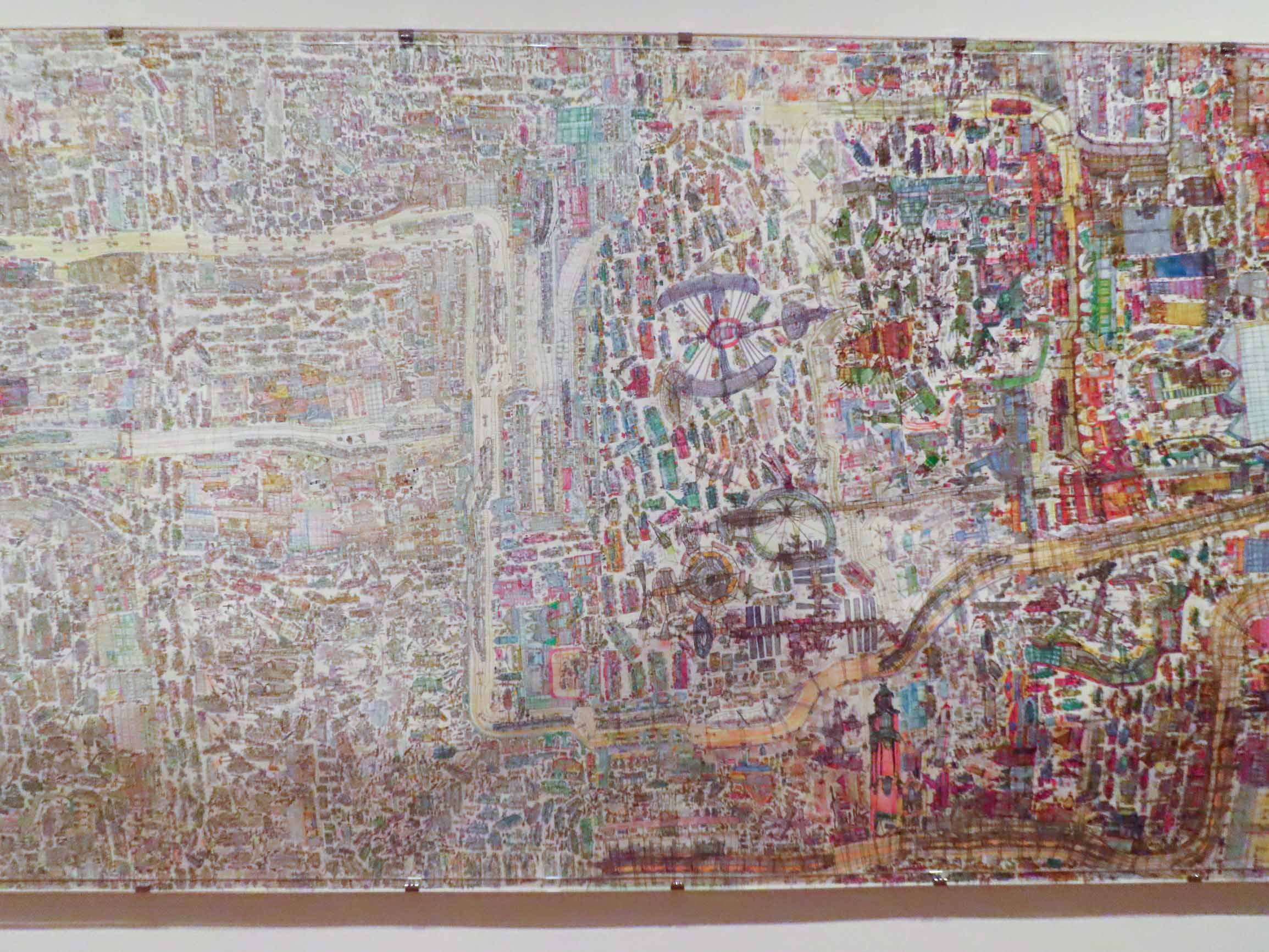
“I want to make everything in this world myself”
With such a strong desire, Mr. Norimitsu Kokubo takes brushes every day and continues to draw. The masterpiece, which has a width of 10 meters and is on display at the venue, started drawing at the age of 17 and was completed after about 5 years.
Railroad tracks running through the city, shopping malls, amusement parks… The campus has a bird’s-eye view of the cityscape, but Mr. Kokubo gathered information gathered through memory and Internet searches to create a fantasy city that does not exist anywhere. This is just a masterpiece.
As you proceeded from the right side of the campus, you can see that the motif and touch gradually change like a gradation as you move to the left.
Kenji Kawakami

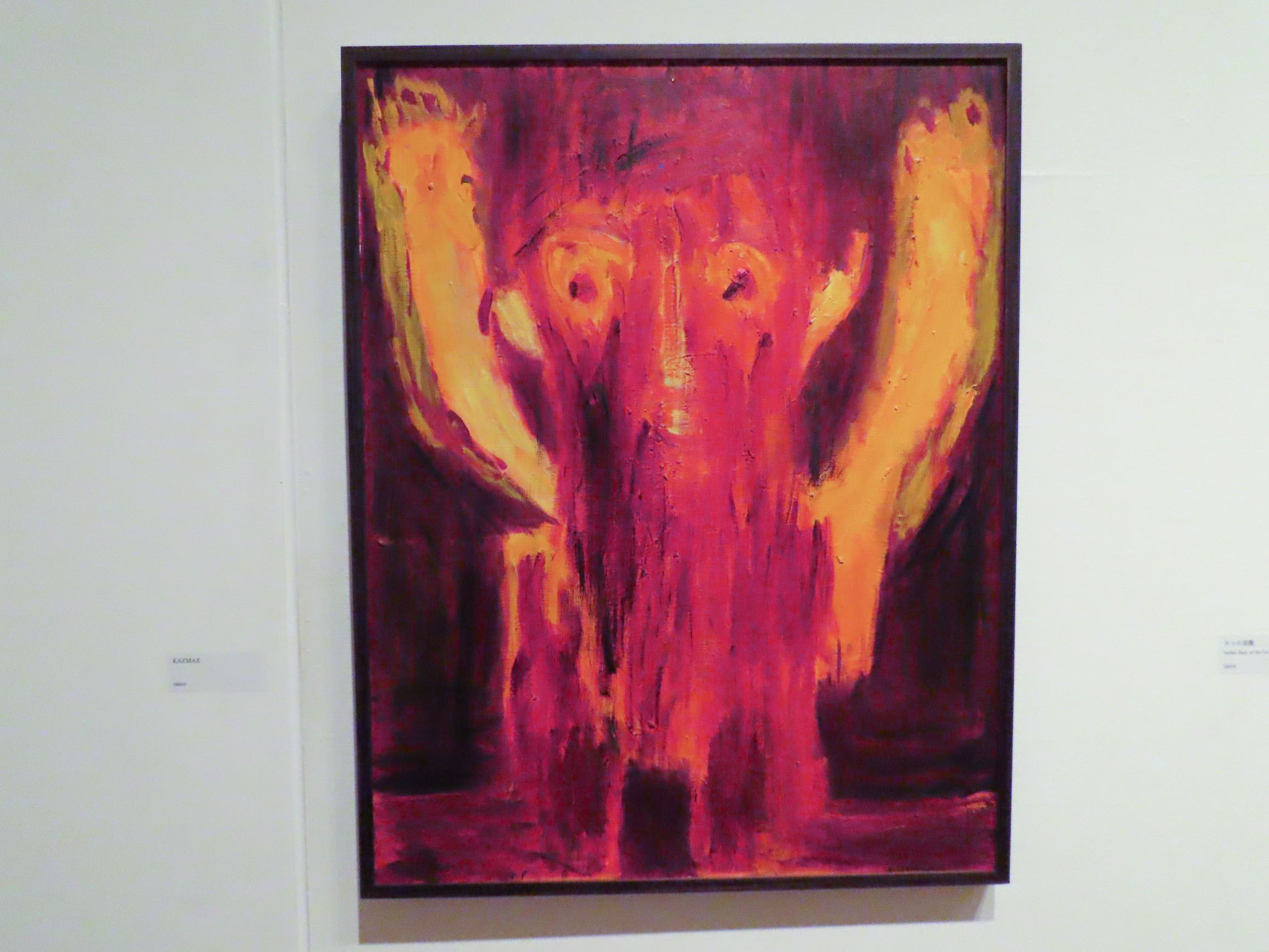

Kenji Kawakami, who uses “things that bring strong emotions to me as a motif” . The work makes us feel a dense “story” and “passion” behind the boy who was bullying herself as a child, and the cat who left behind while feeling remorse.
Although the artist’s appearance and the state of his creation are displayed on the monitor in the venue, Mr. Kawakami laughs and cries loudly, which is exactly the “genuine spirit” itself. Its powerful brushstrokes and touches convey pure, unfamiliar energy.
Sometimes I draw a horrifying scene with thrilling, but the style is somewhat warm. If Taro Okamoto was alive, he would have praised him… I can imagine that.
Event outline
| Exhibition name | Special Exhibition “Art as it is-Those who continue to express without knowing-“ |
| Session | From July 23, 2020 (Thurs./holiday) to September 6, 2020 (Sun) Opening hours 10:00-17:00 (last admission 16:30) *You can see it from 12:00 on Thursday, July 30. *Date and time reservation system ( Click here for reservation site ) |
| closing day | *Closed: Monday However, it will be open on August 10th (Monday/Holiday) and closed on August 11th (Tuesday) |
| Venue | Tokyo University of the Arts University Museum (12-8 Ueno Park, Taito-ku, Tokyo 110-8714) |
| Viewing fee | free entrance |
| Official site | https://www.nhk.or.jp/event/art2020/en/ |

